September 17, 2023
Martha O'Kennon
Do you remember way back a week ago when I observed that Autumn was early this year. Today it seems even cooler. The indoor/outdoor thermometer was registering 49 F a bit before 9:00 am this morning. I've tested the water temperature in the Pond for a couple of days this week. It has been hanging right at 20 F, but I'm thinking that when I test it this morning it will be down to 55 F or less, which means that no matter how the fish jump up and down for their breakfast, I CANNOT feed them. Meanwhile, here is a panorama of pink Asters. I'll be showing you quite a few of these scenes this week, especially including shots of Asters and Goldenrod.
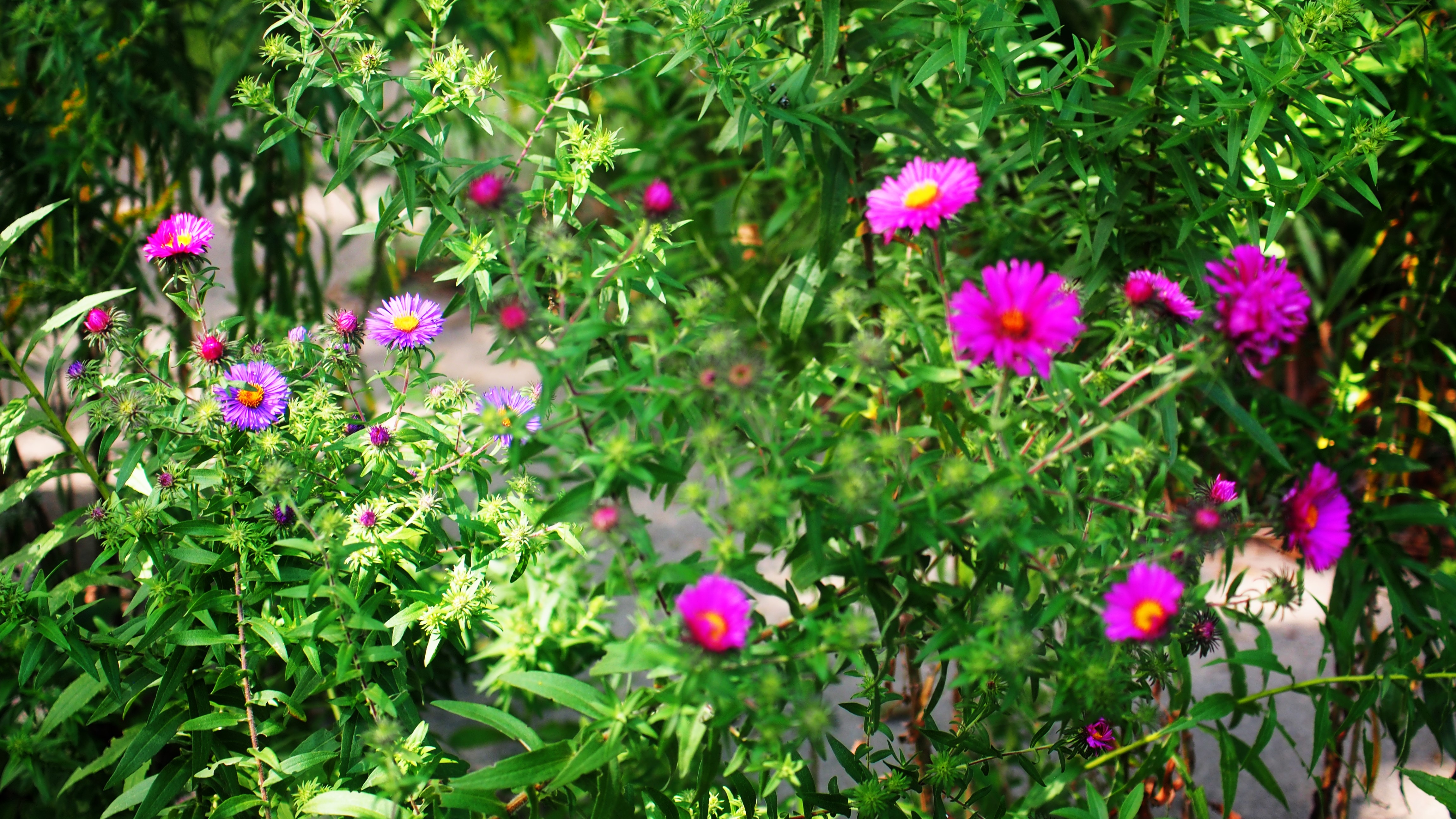
To show you how fast the impending autumn is coming onto the scene, Here is a view of the Goldenrod last week and then this week. See how the browning process is going! These two pictures were taken 2 days apart.
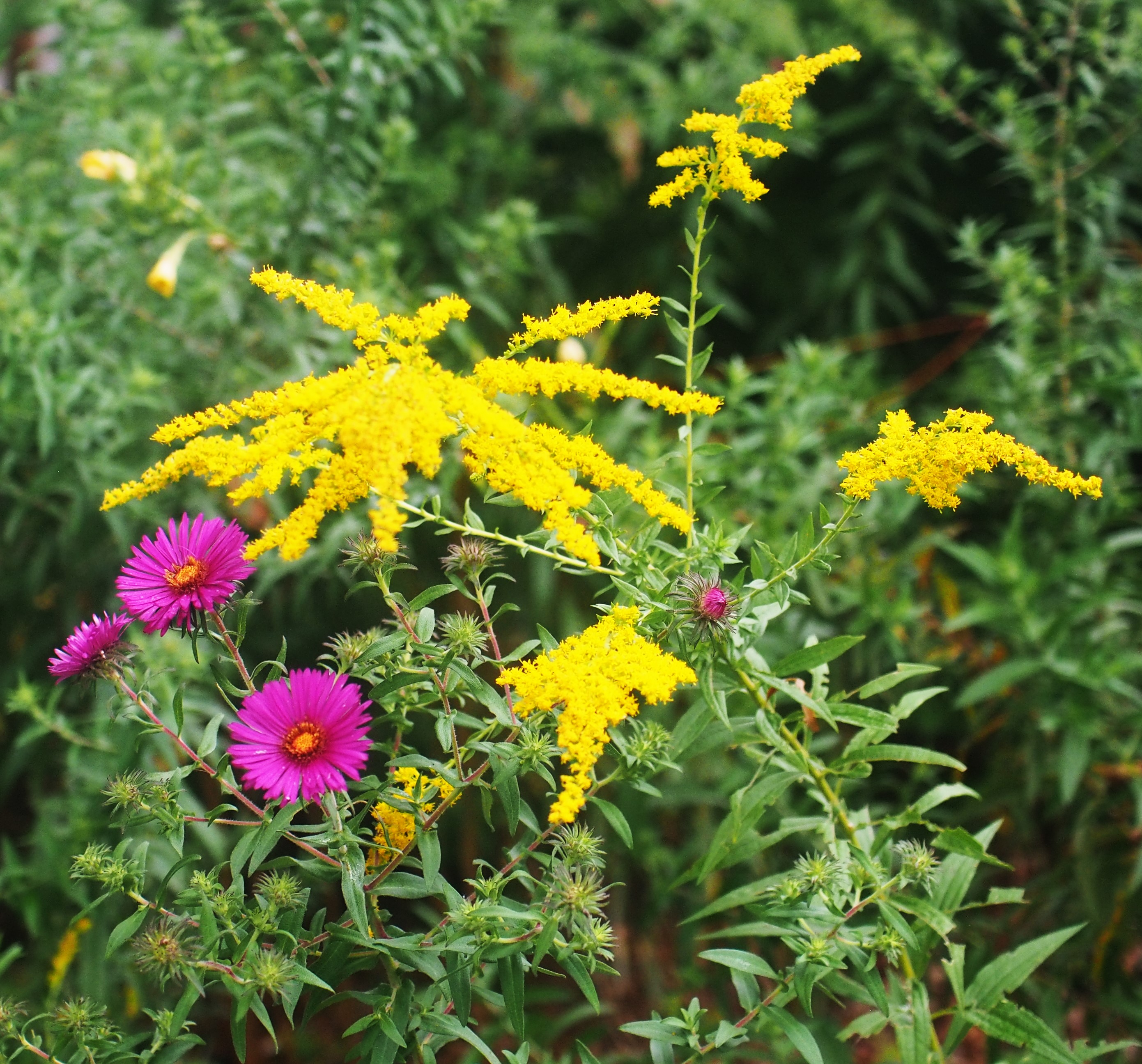
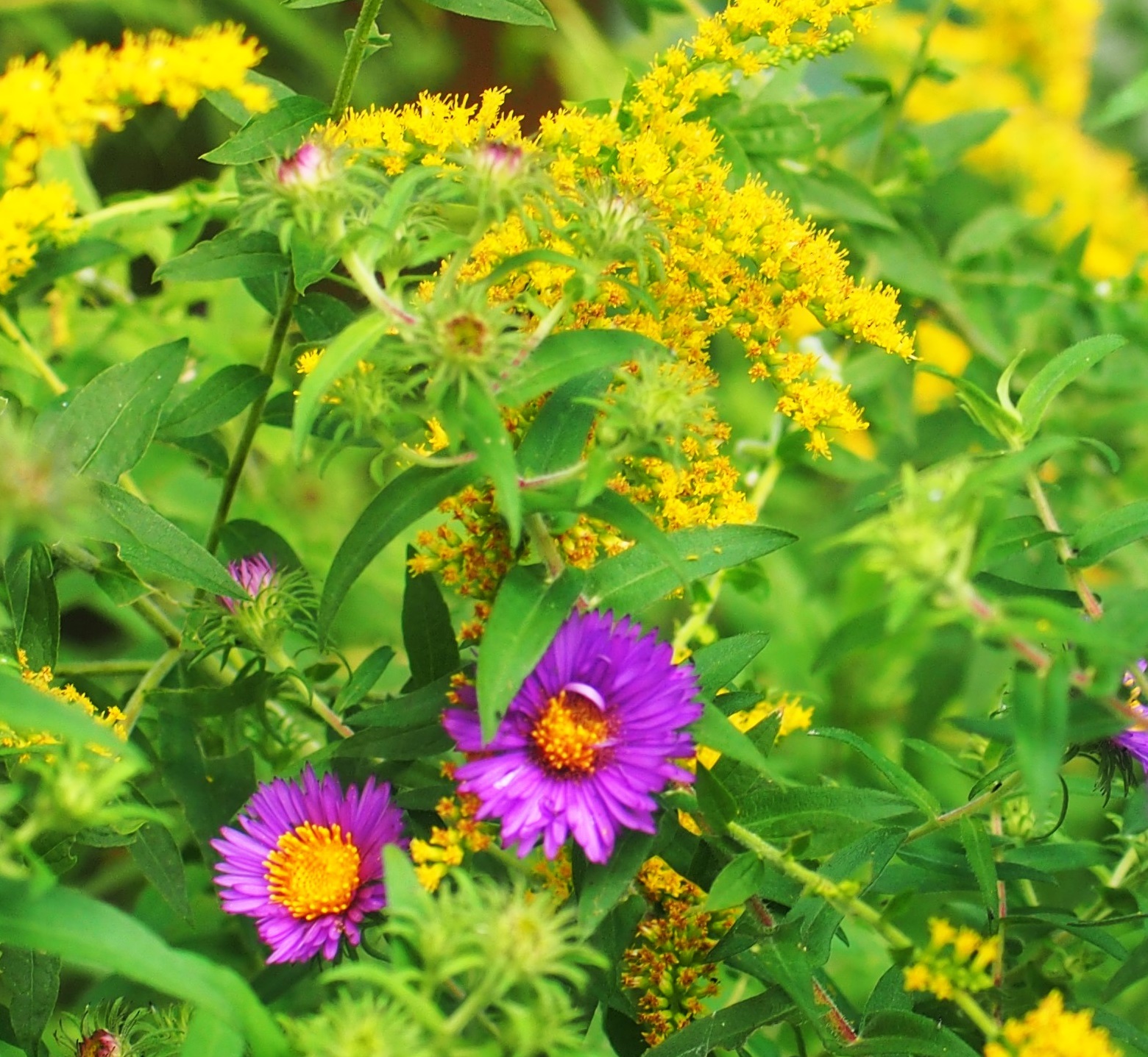
Remember that there is information in the name of the file for each image. You can see it by mousing over the image - look at the lower left of the screen. Or you can
click on the image to get to the (usually) larger image. Then the info is displayed in the address line above. Sometimes the second click will actually display a different view of the
original image.
I wasn't concentrating on the Ants, and HERE is the one picture I got of one. Bees, however, continue to be prominent. Picture 2 shows a Common Eastern Bumblebee, and picture 3 is another kind of Bee, which I haven't gotten identified yet.

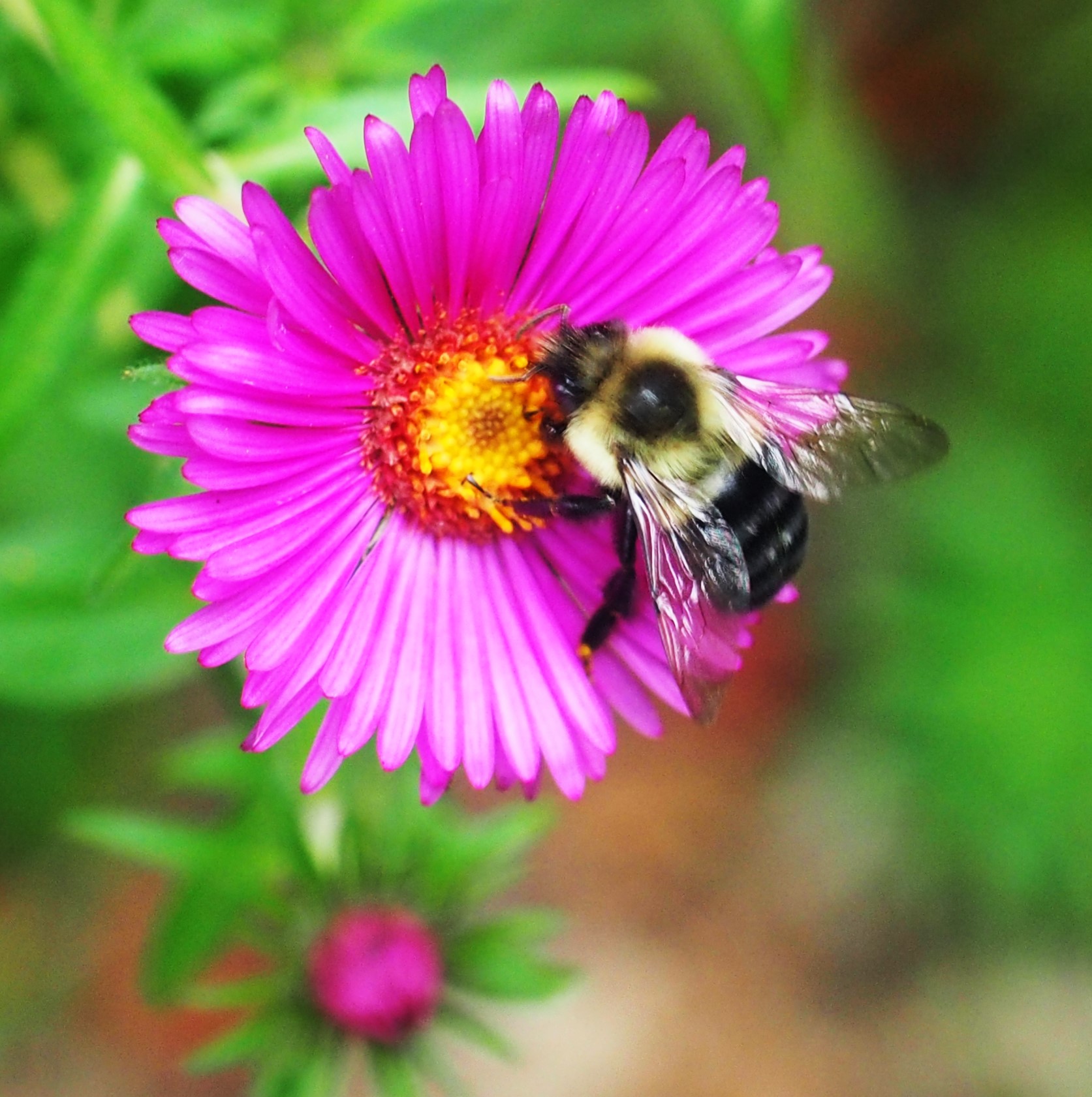
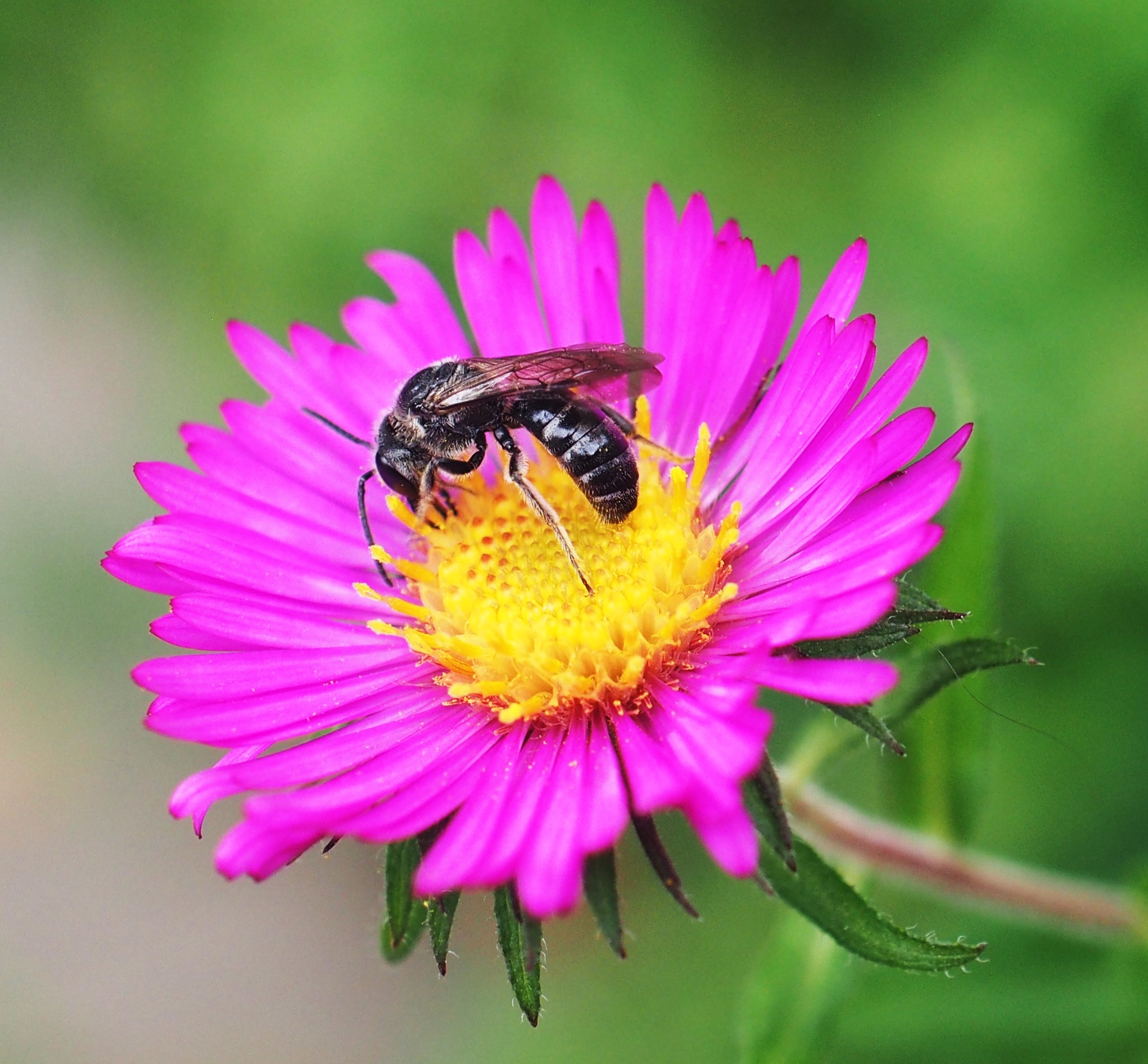
I get confused so easily. I know that Honeybees form a leg patch full of pollen, but had forgotten that the Bumblebees are Bees and was quite surprised to see that the Common Eastern Bumblebee had them.
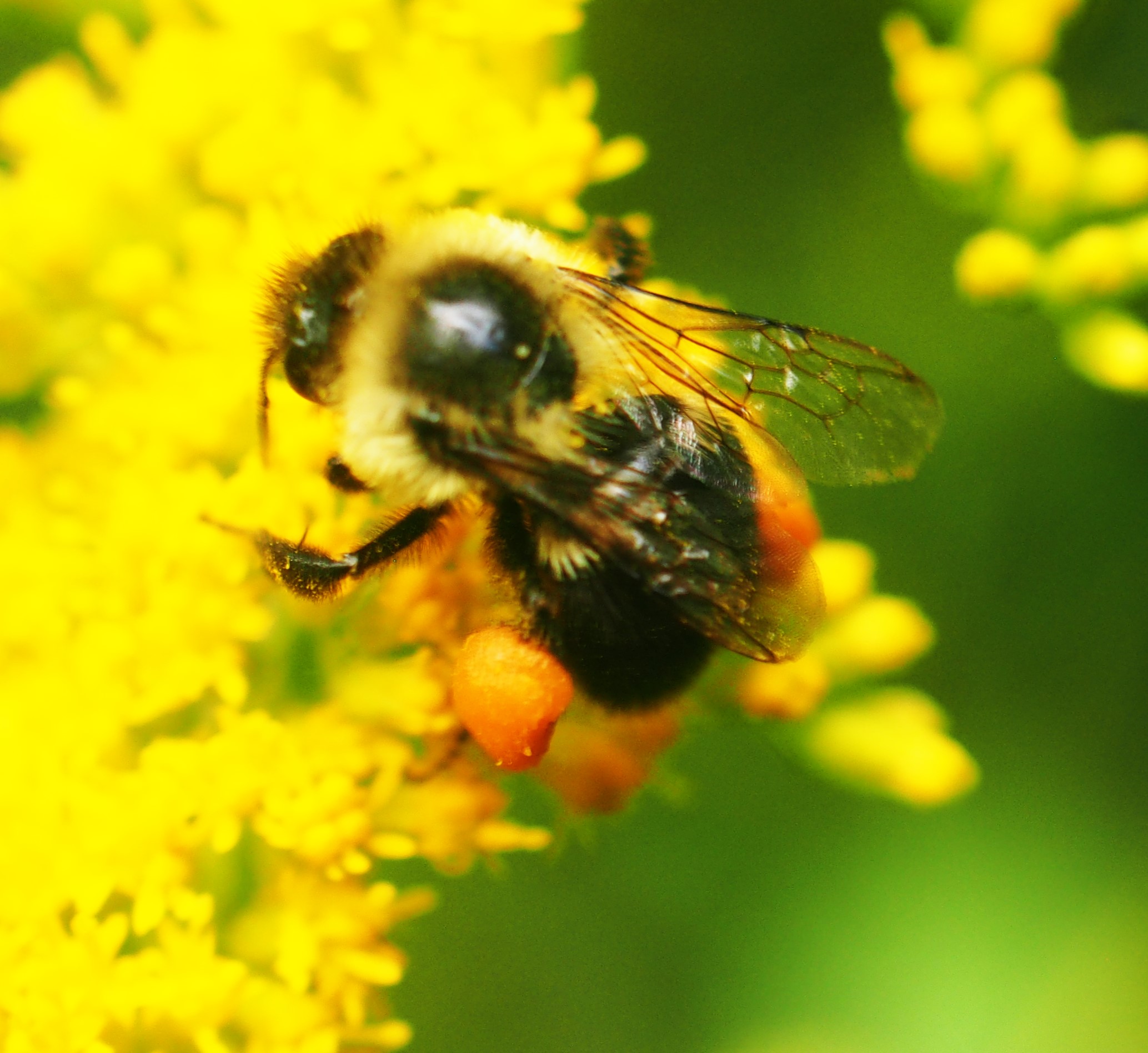
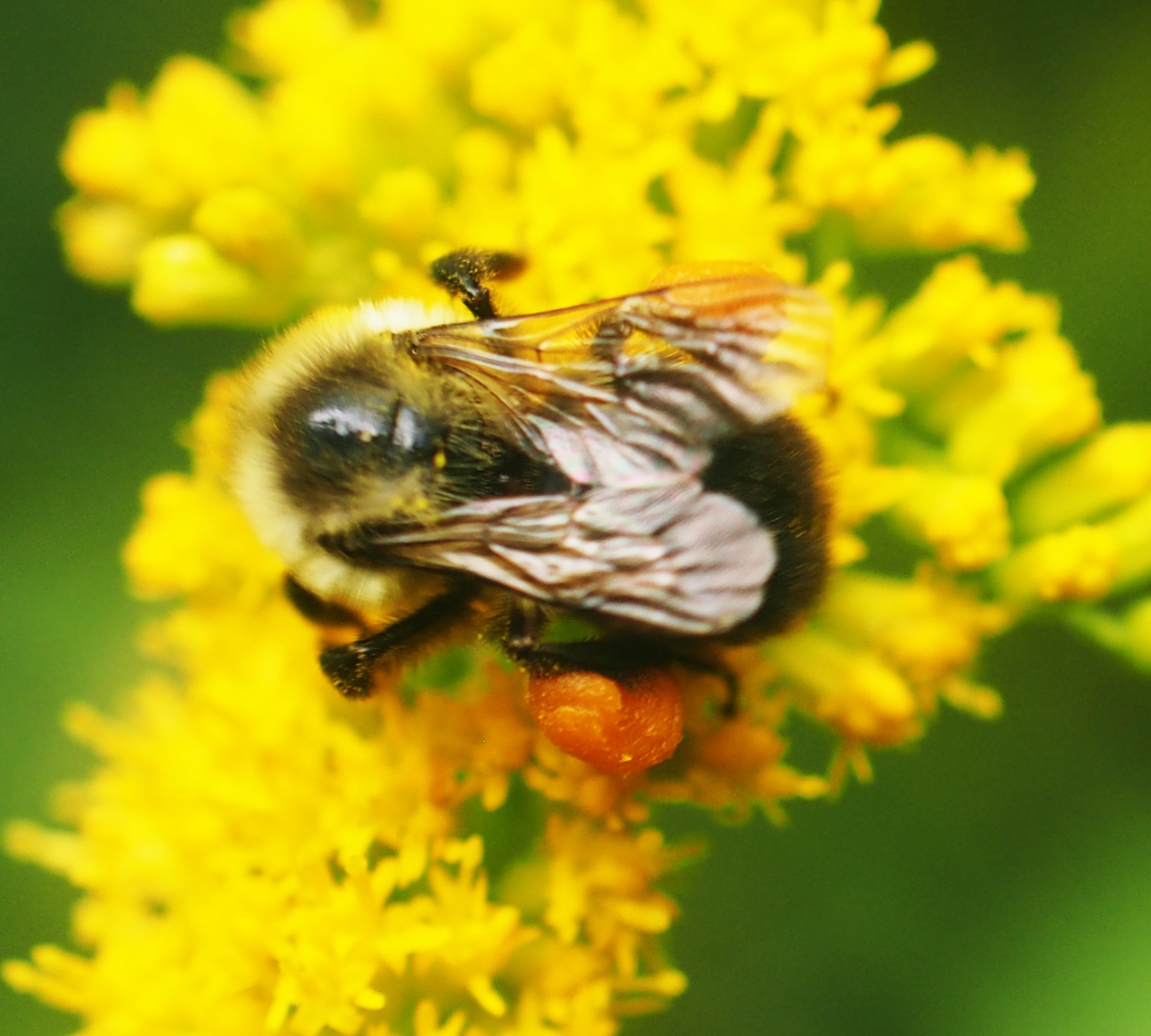
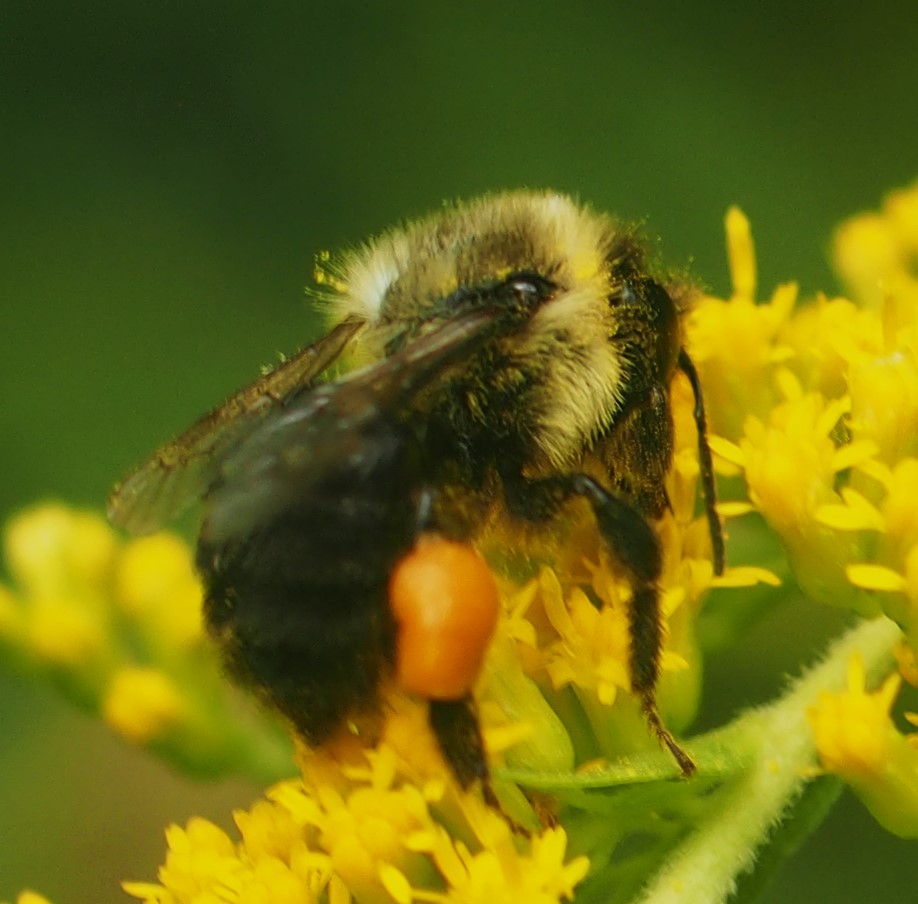
Here you see three different Bees on one stalk of Goldenrod. Look how differently-sized they are!
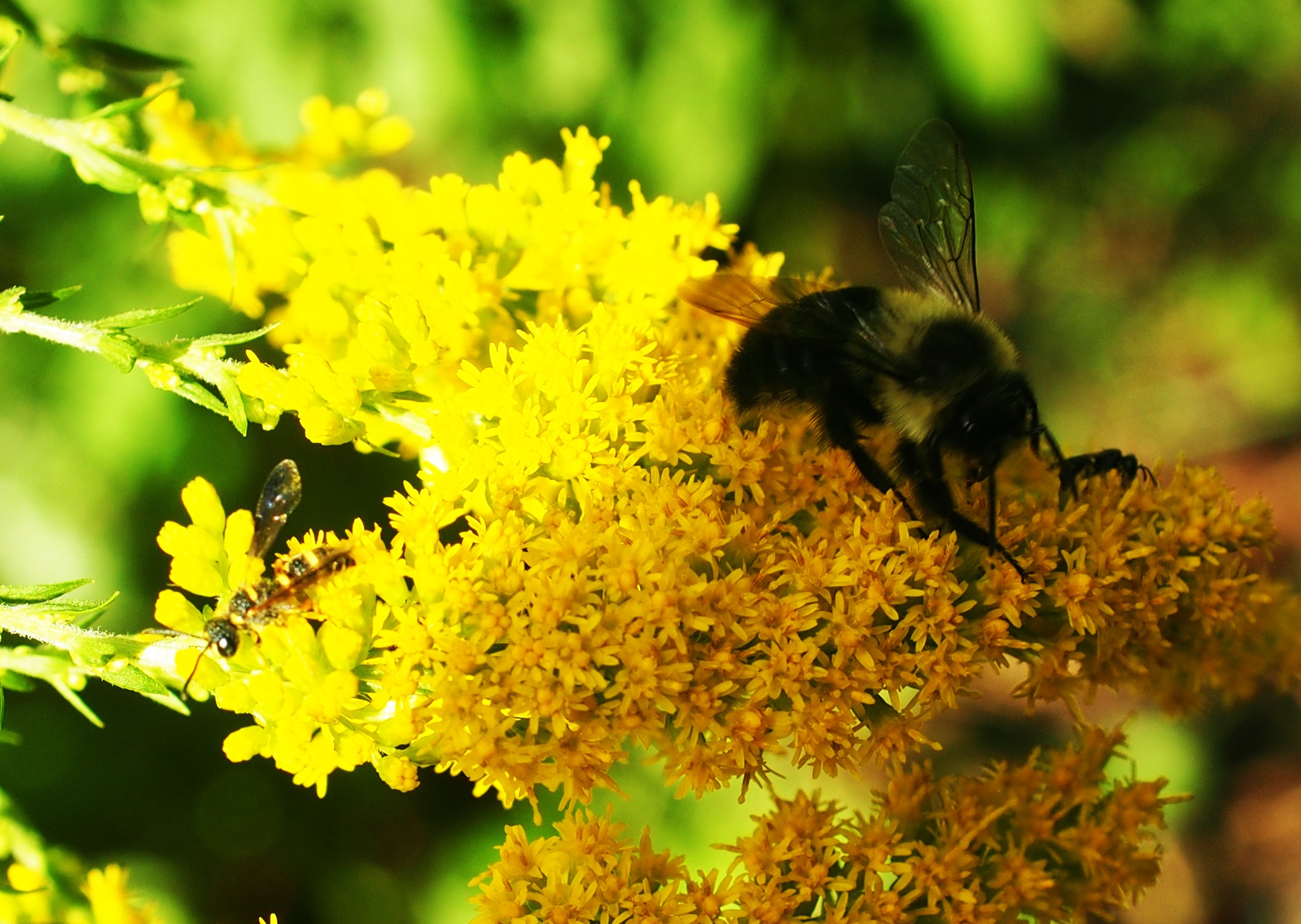
Here are two shots of one of the little Bees. And one of another tiny Bee with pollen all over its body!
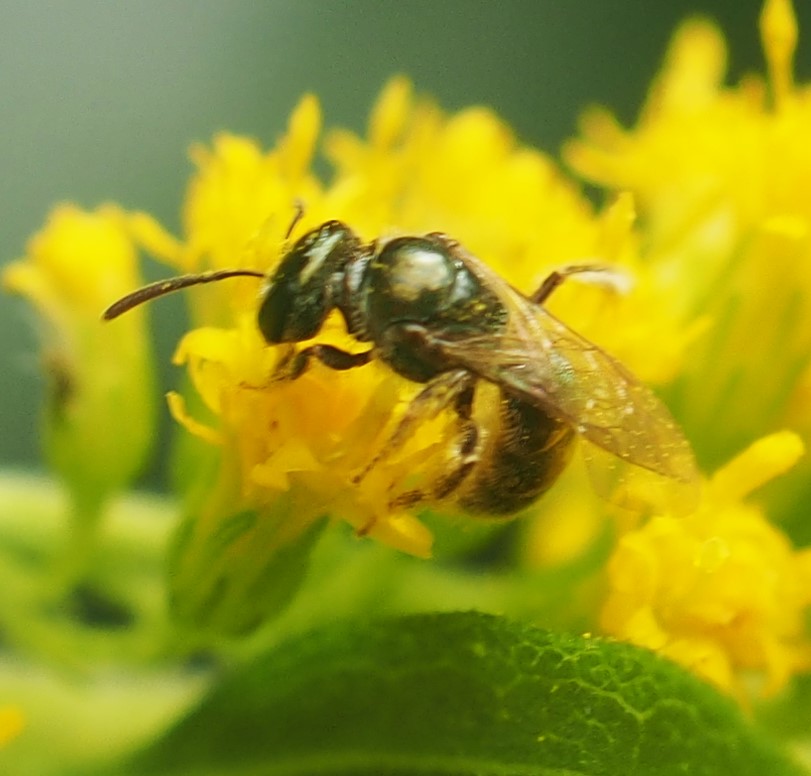
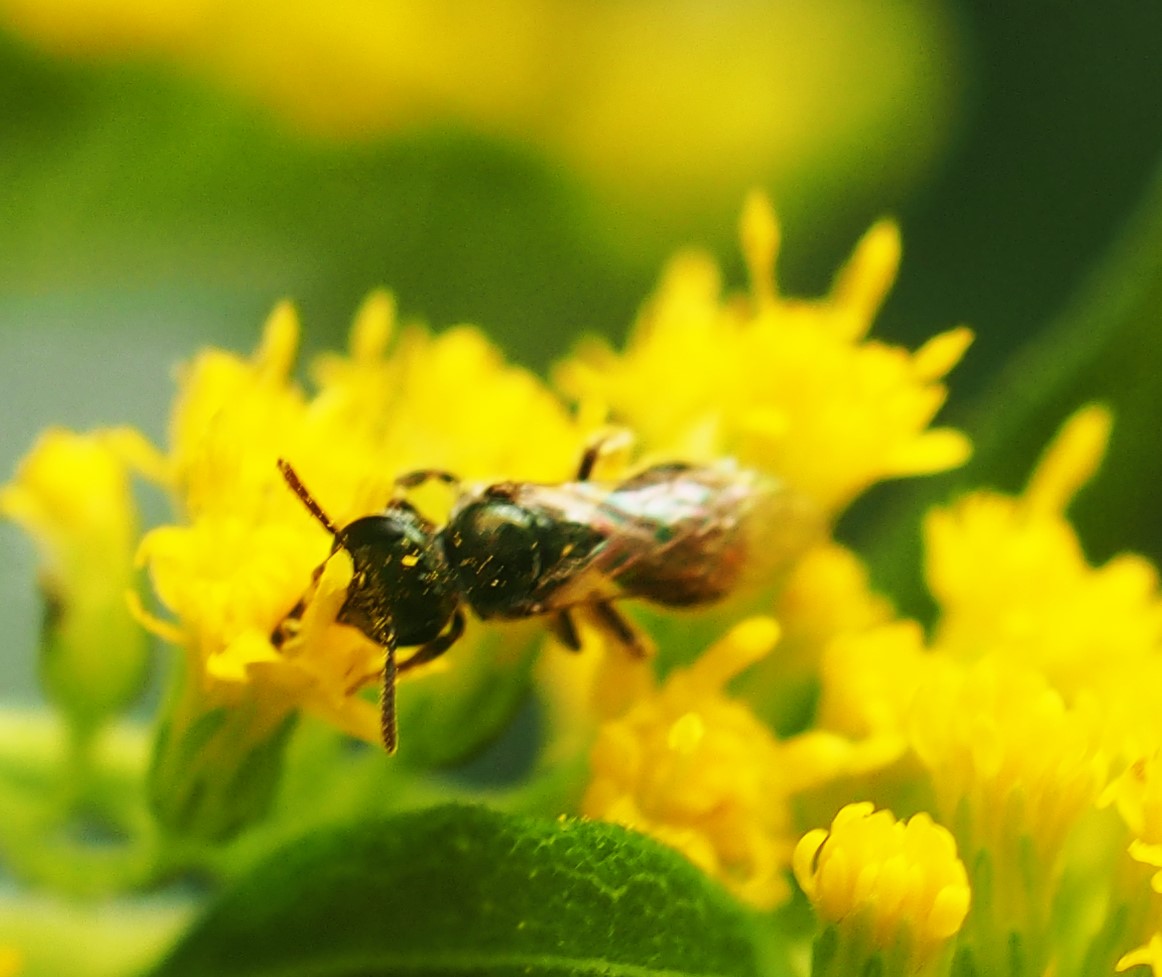
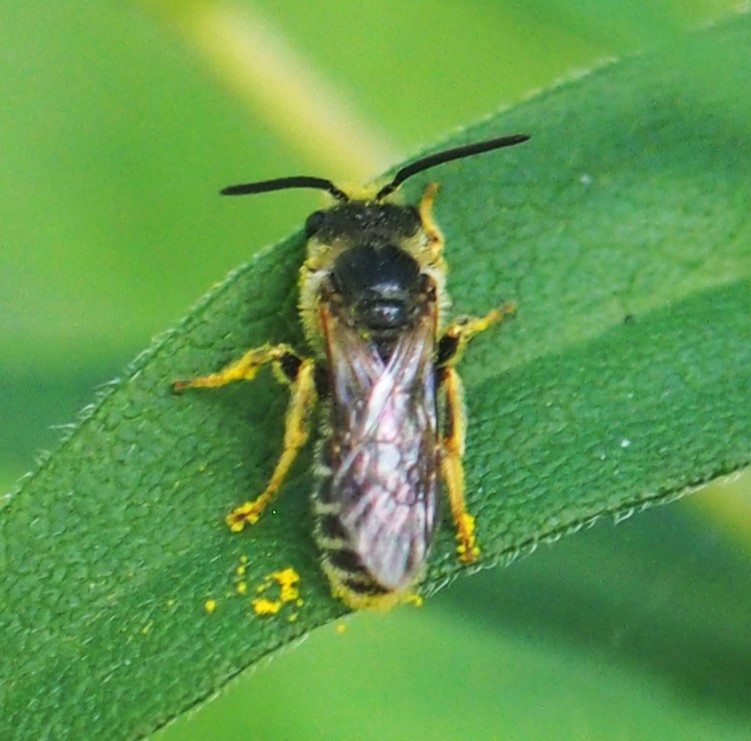
The Locust Borer Beetle arrived on day one of the flowering of the Goldenrod and has abeen here for over a week. I'm sure that the Locust Tree across the street from here has enticed the Locust Borer but a couple of them have continued to visit the Goldenrod. On the other hand, the Goldenrod Soldier Beetle moved on elsewhere after the shortest possible vist to our Goldenrod. This picture was taken on August 30. Third is a Redbud Seed Bug (Redbud Bruchid).
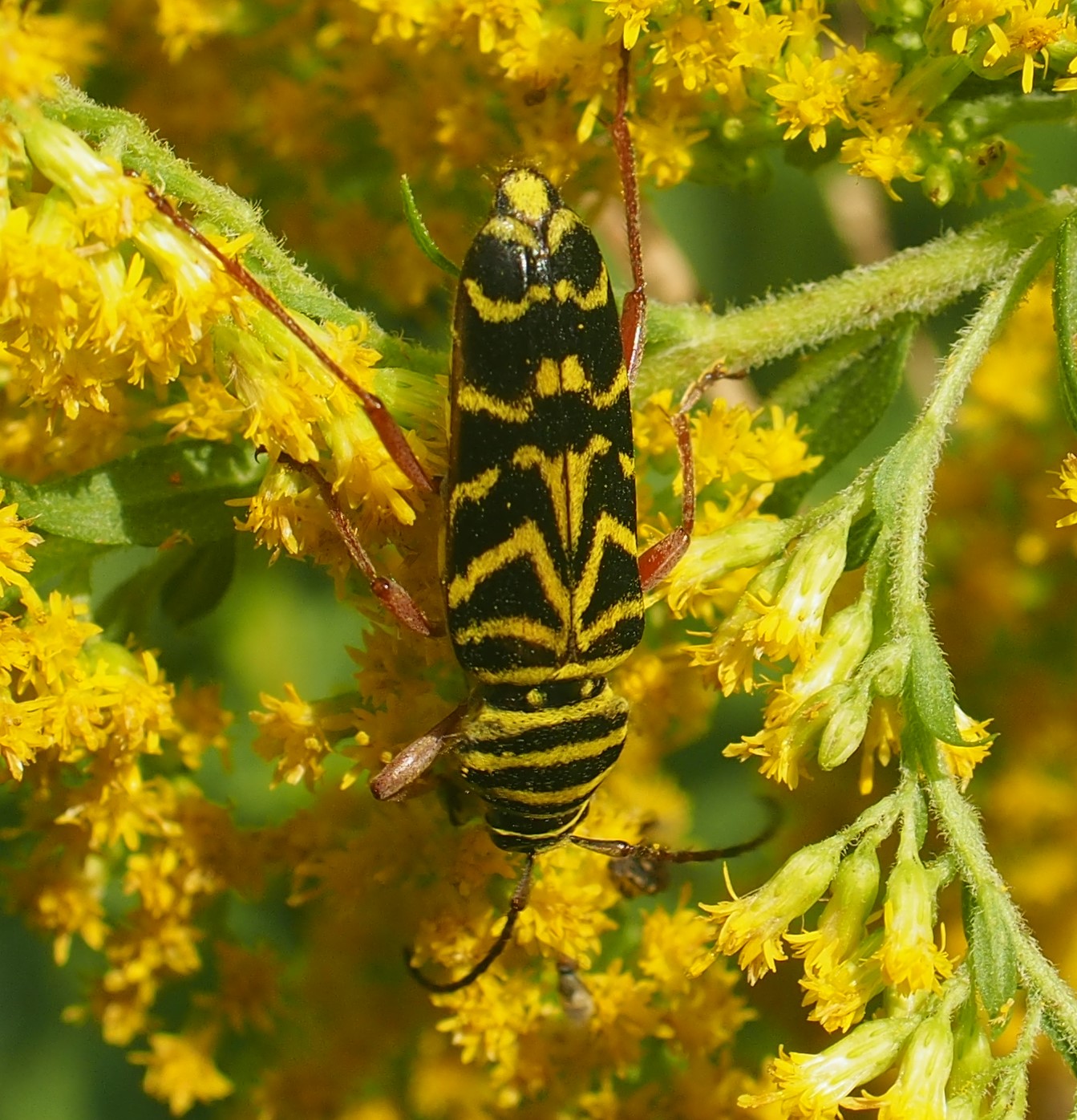
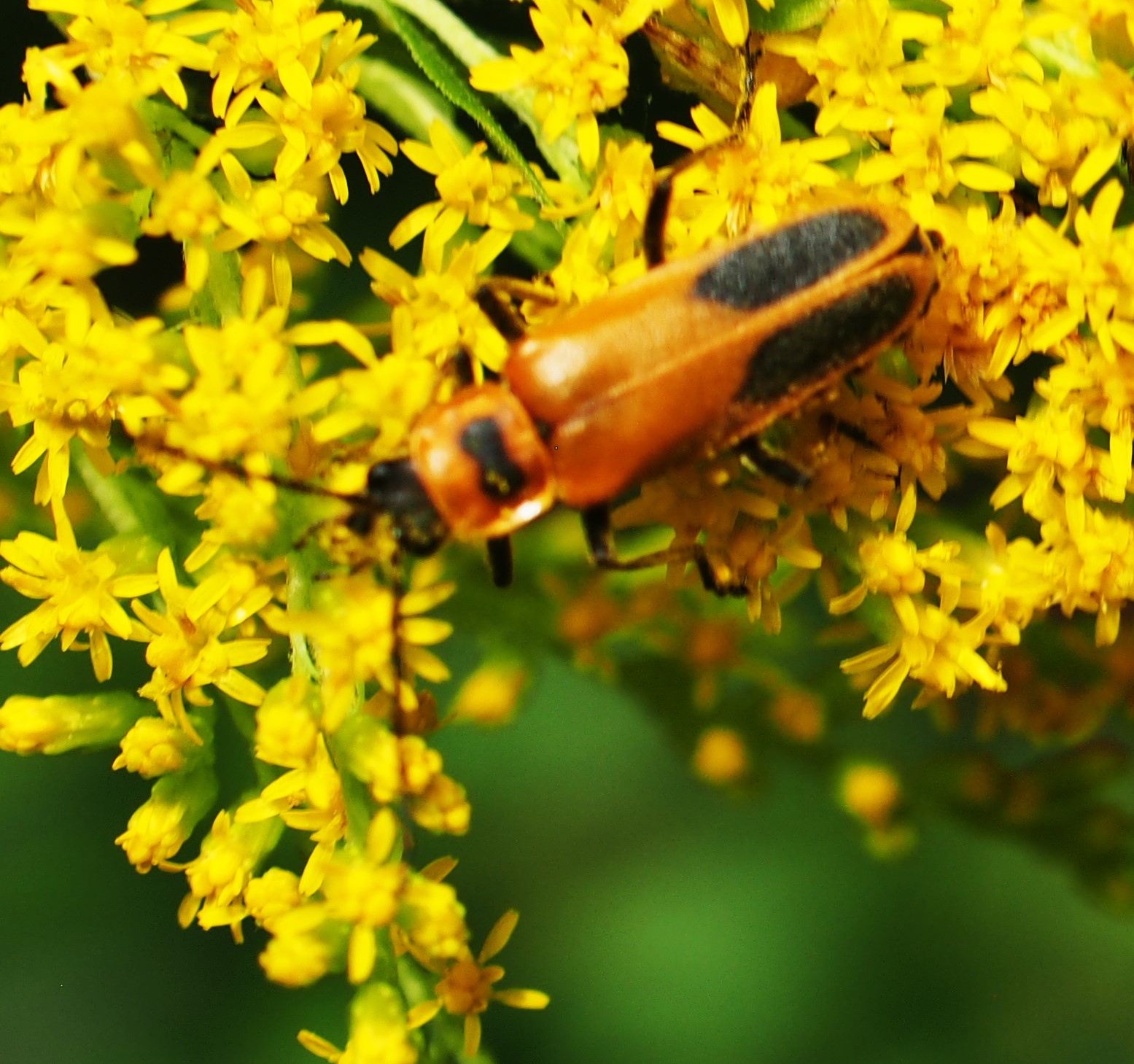
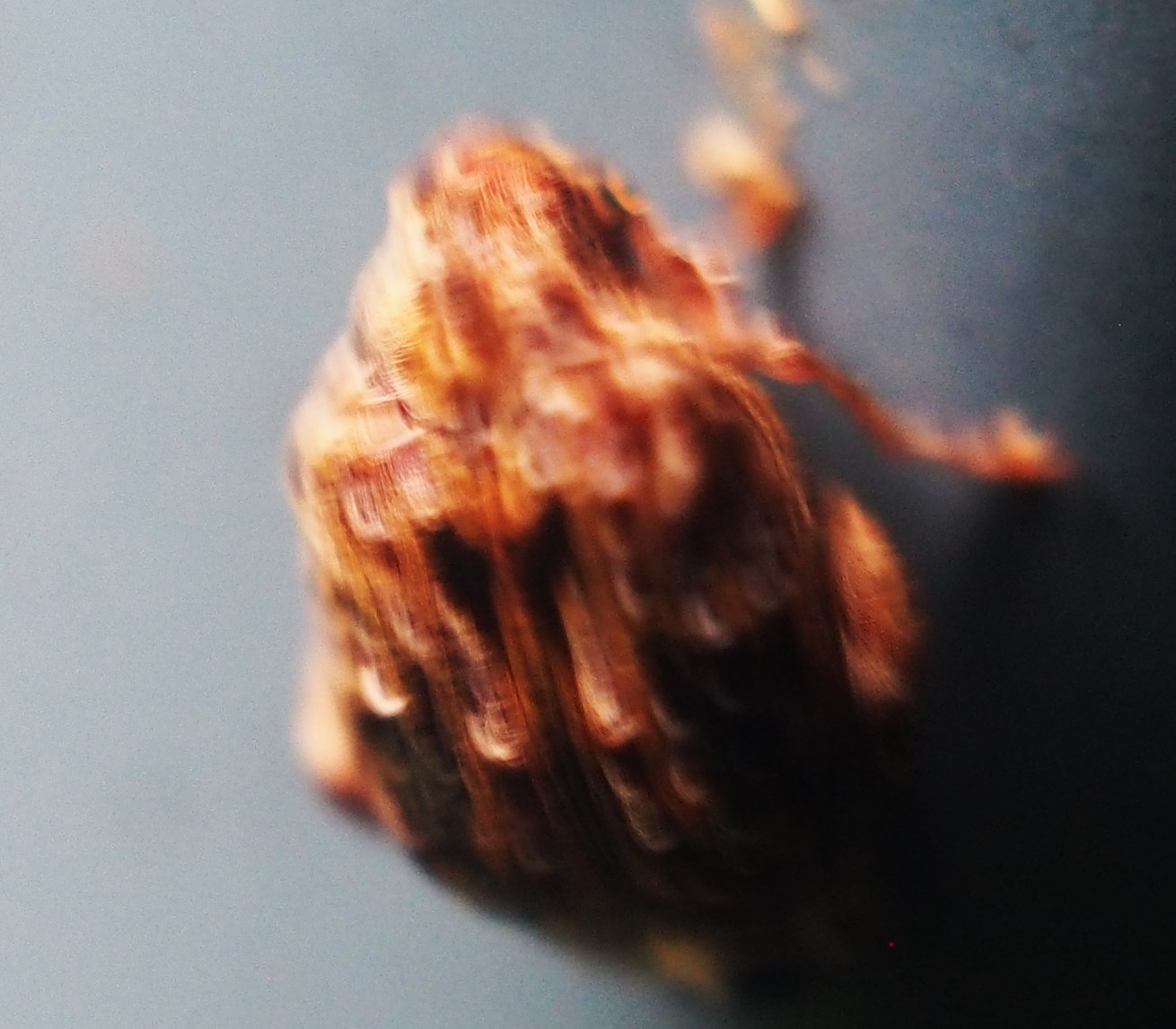
On to the Bugs. The Pennsylvania Ambush Bug is still here but harder to find as the Goldenrod continues to be golden but certainly past its bright Yellow prime. I saw one yesterday but this photo (showing an Ambush Bug siphoning from a Bee) was taken on September 8. Picture 2 shows a bluish-grey Drymus (a light twiddle).

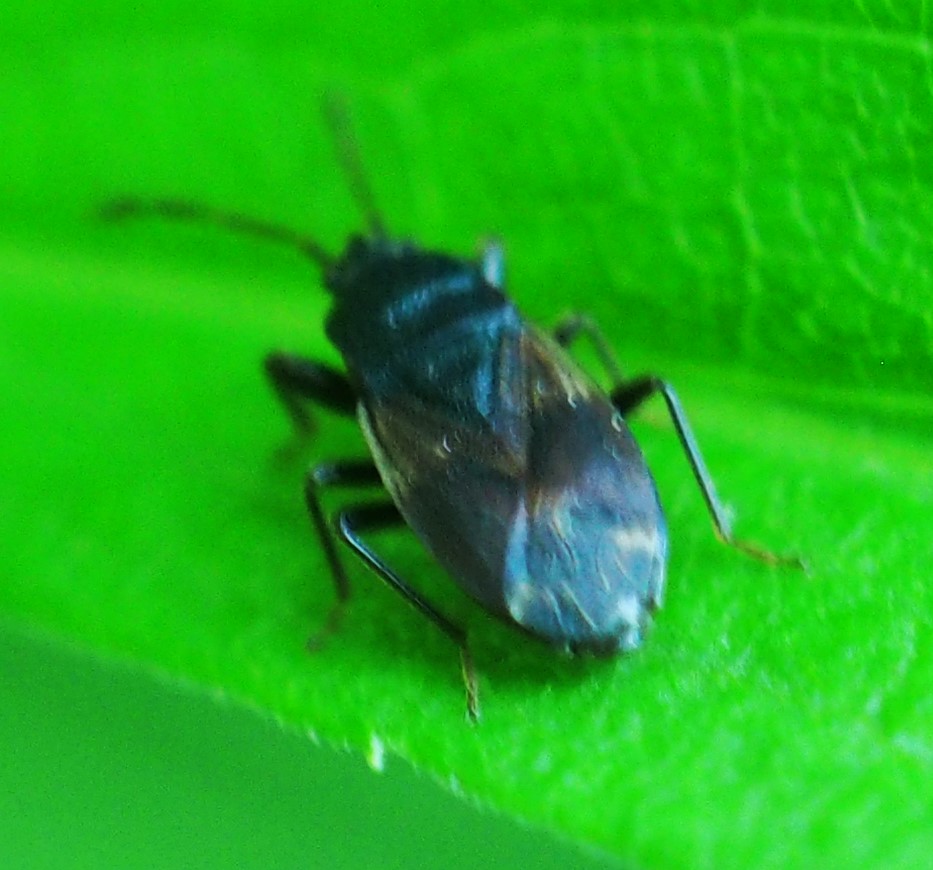
After all the sightings of Ambush Bugs, we have started to see Assassin Bugs in the genus Zelus. These Bugs are extremely difficult to see against any green background.
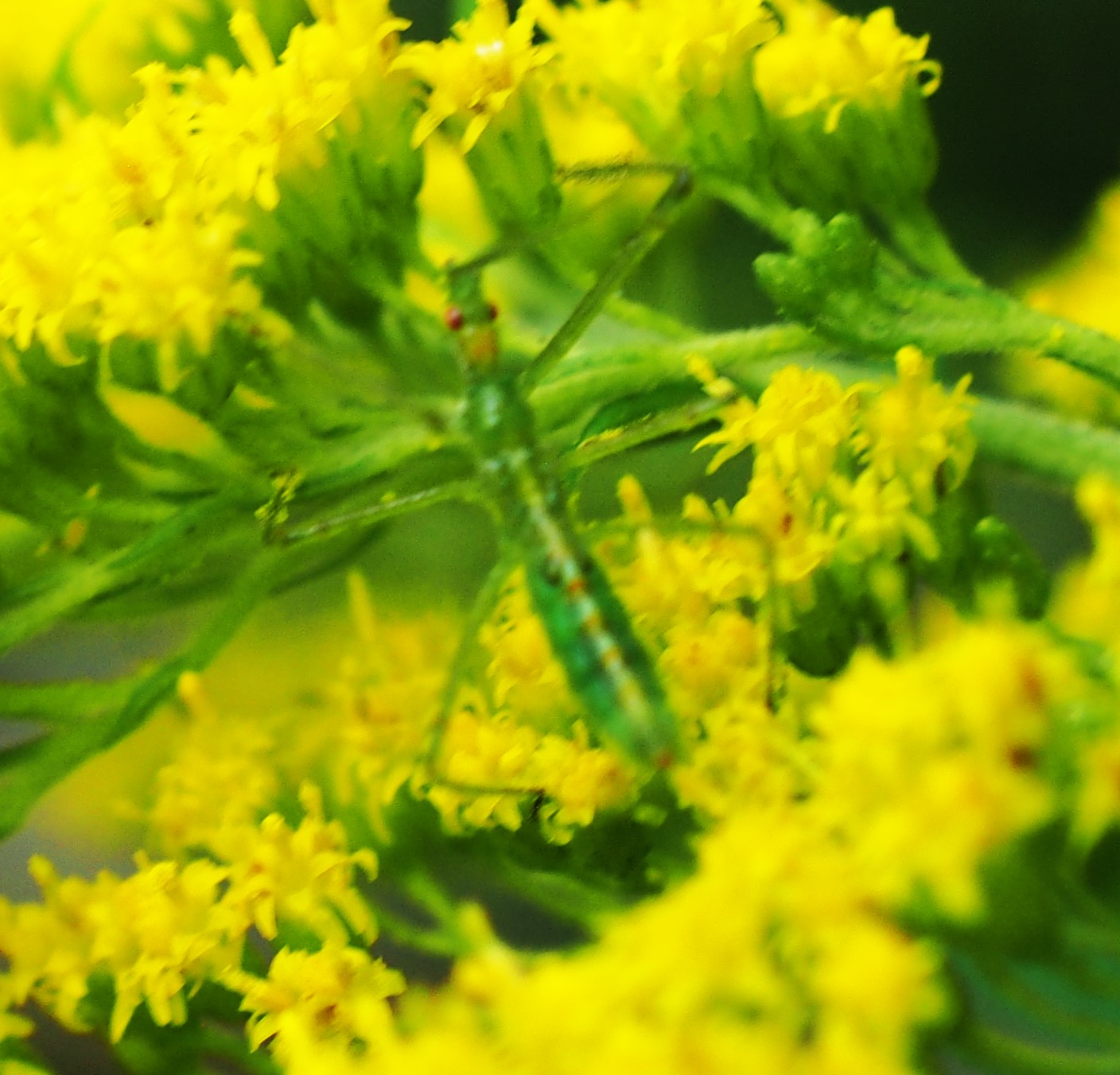
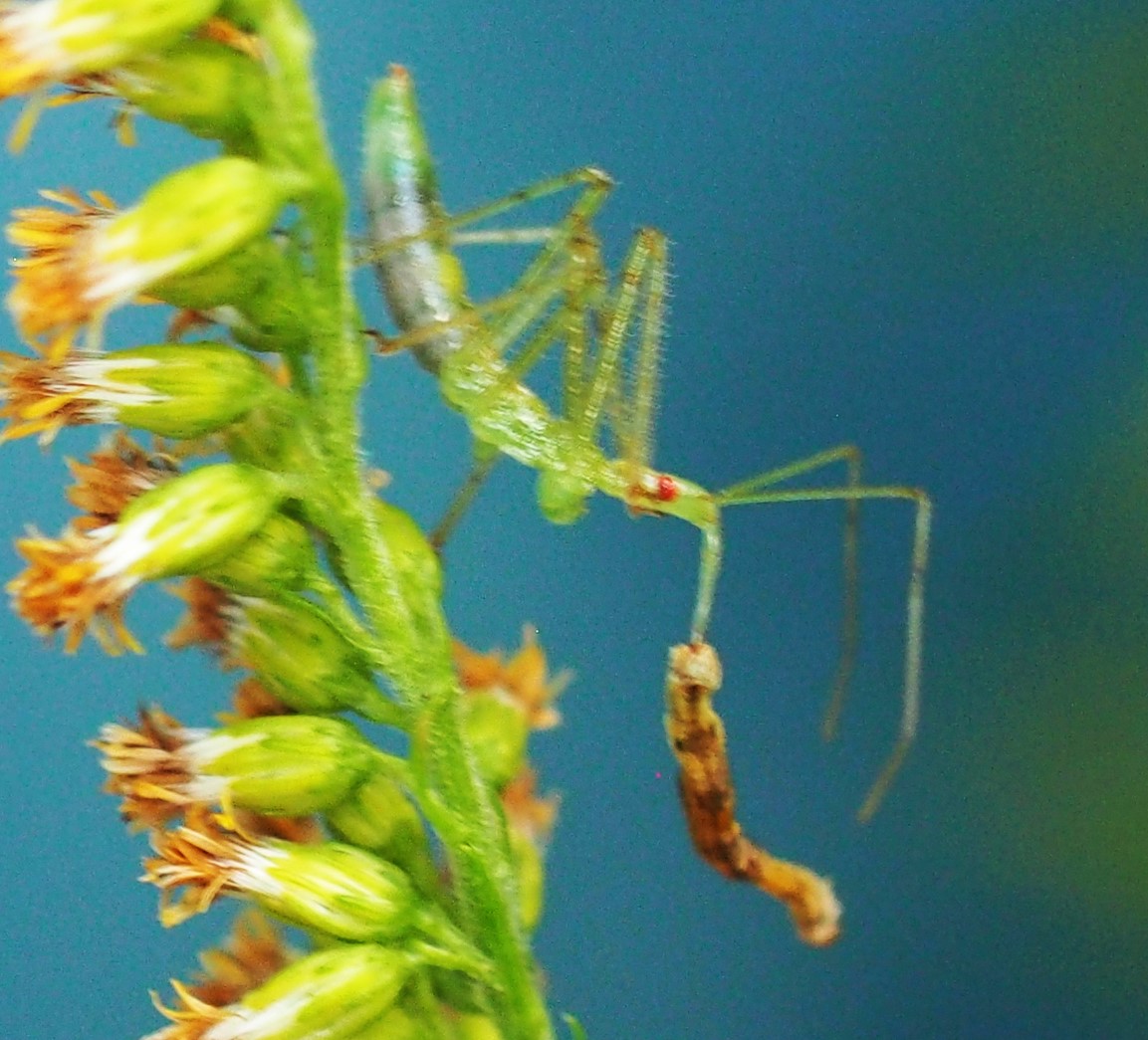
Let's see what Leafhoppers we have this week. Here first is a member of genus Eratoneura. Then we have two views of a Leafhopper of subgenus Gyponana on Coral Berry.

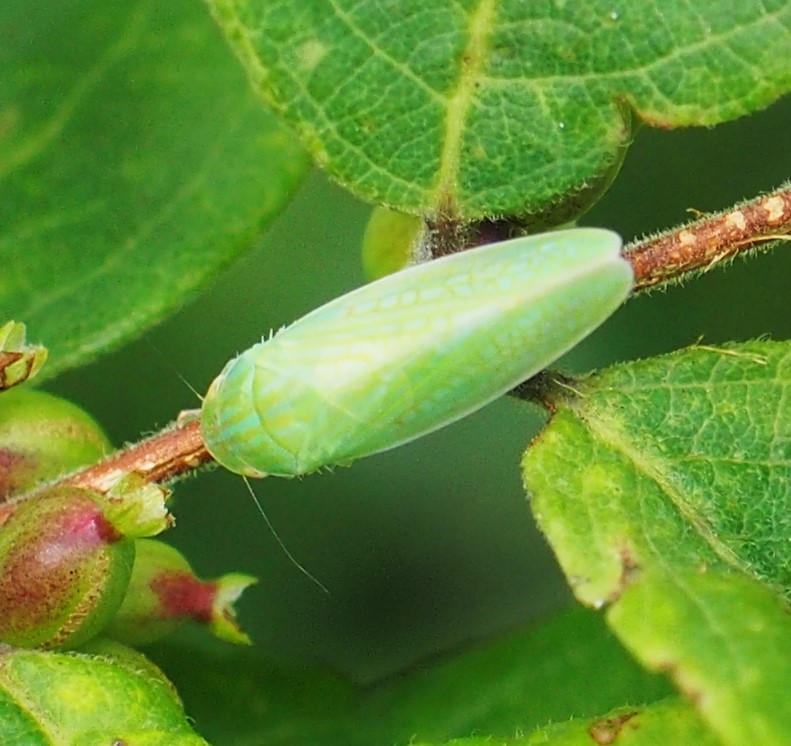
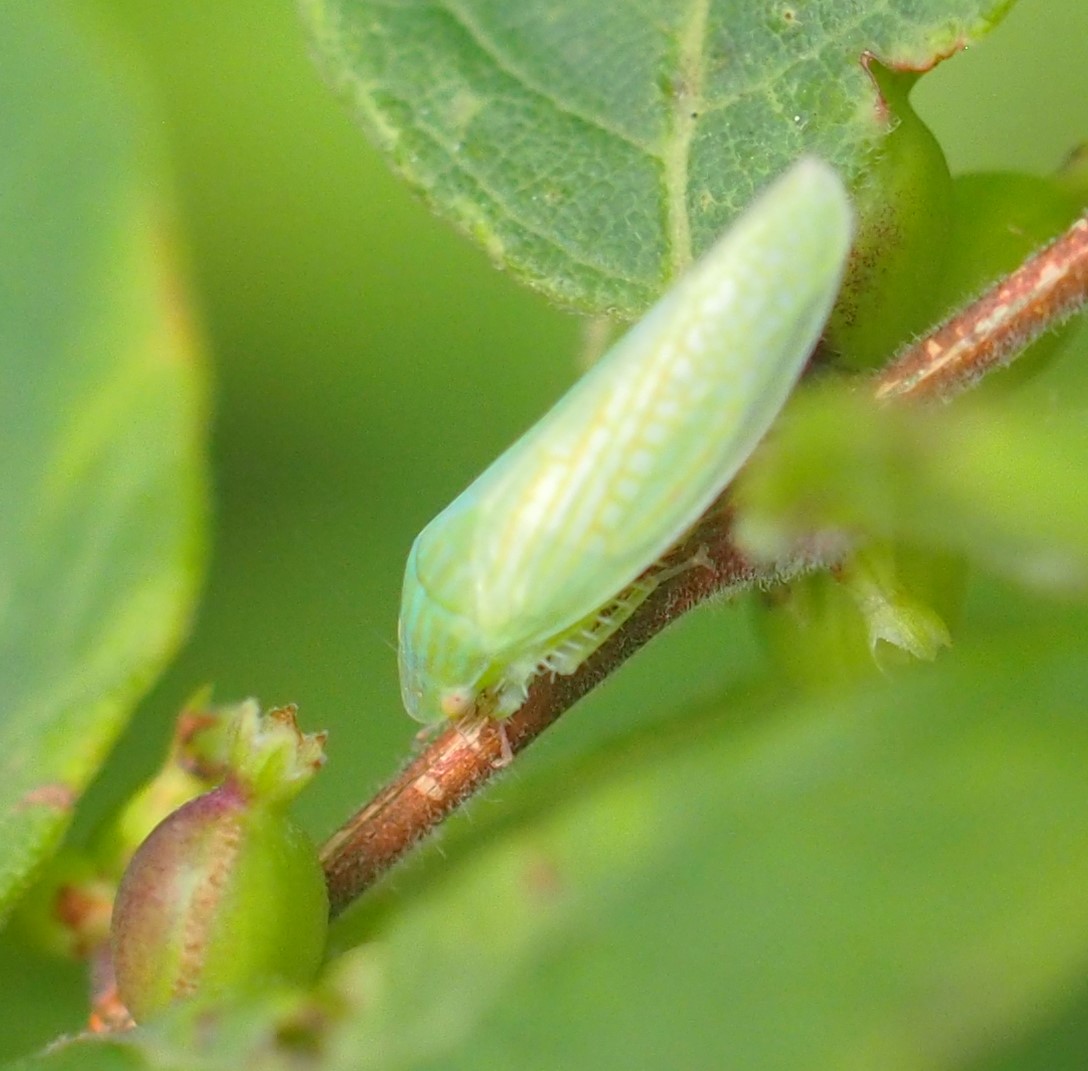
We all know the Red-banded Leafhopper shown in pictures 1 and 2. But I was fooled by picture 3. Surely the four spots make this a different species - but I have it on word of @hopperdude215 that this is an ordinary variation of the Red-banded Leafhopper.
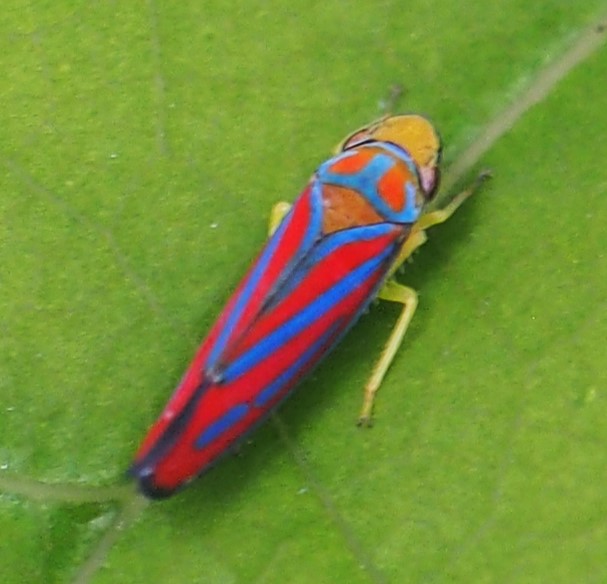
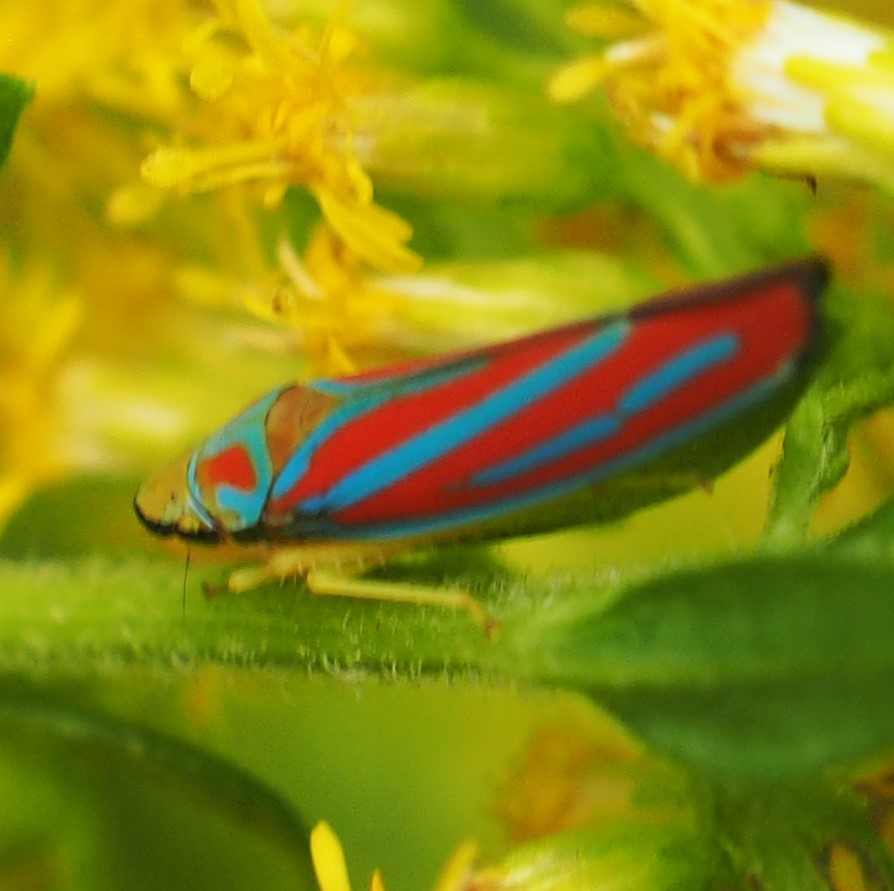

The last Bugs of the week are this Stink Bug (not the little shortish one we have been seeing) and the last one here, which I thought might be a Plant Bug but now seems to be a Leafhopper in genus Aphrodes. Oh. Good thing we came back to the Leafhoppers. One of their relatives is the Sharpshooters, and this Speckled Sharpshooter (picture 3) is the first one I have ever seen, although I did see a Broad-headed Sharpshooter (picture 4) six years ago on June 26, 2017. Not a great record, but still it's nice to know these spectacular creatures live under your nose without your noticing them.
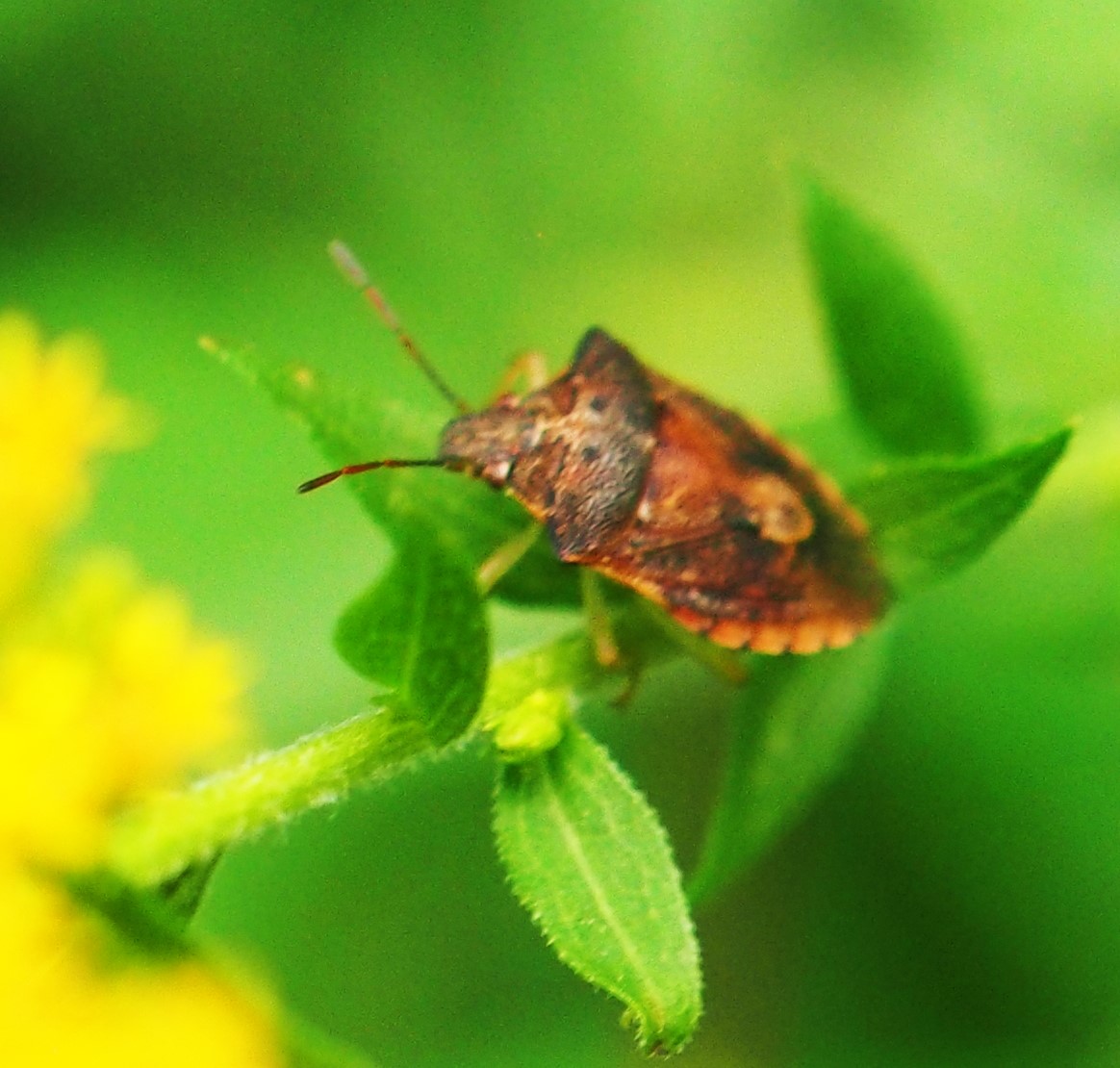
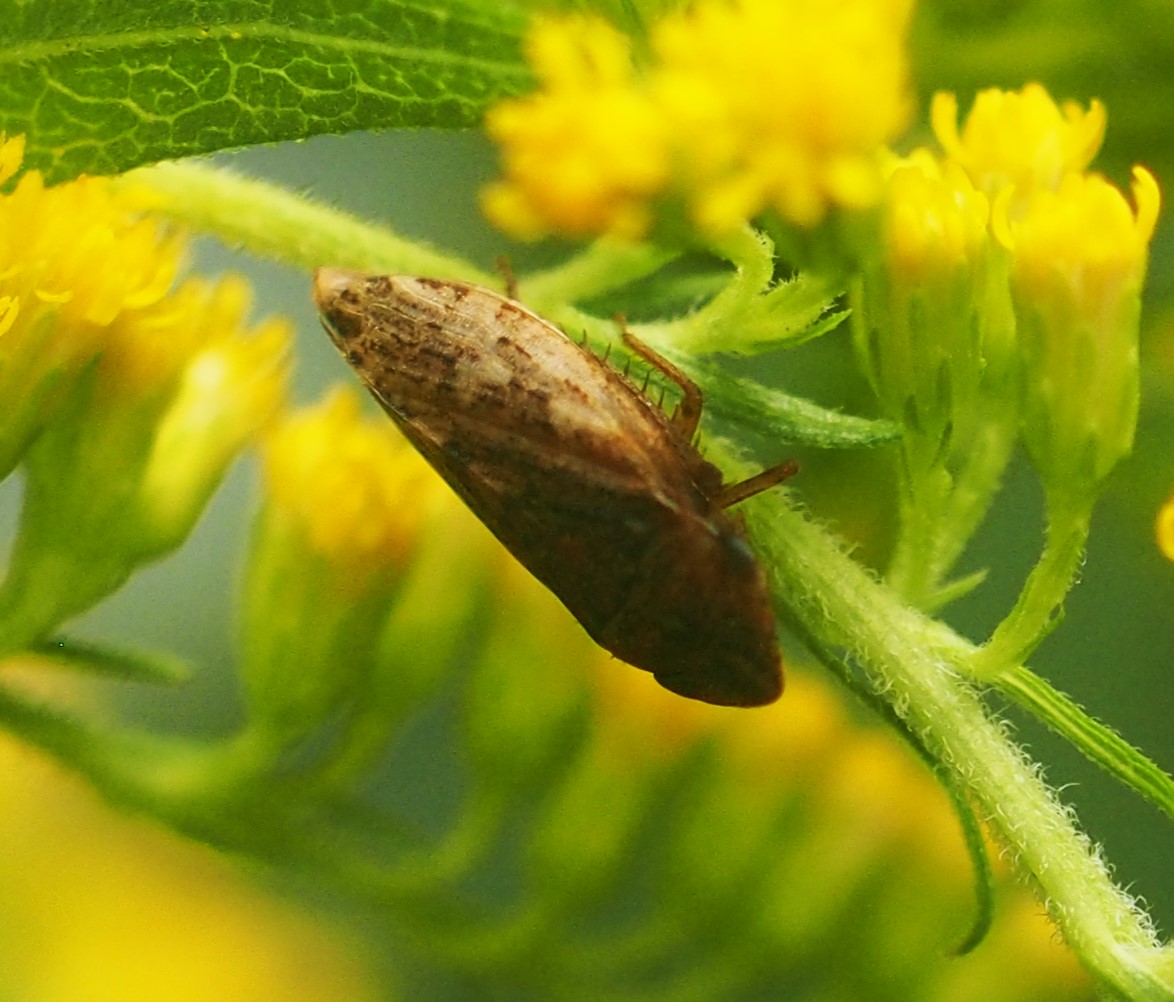
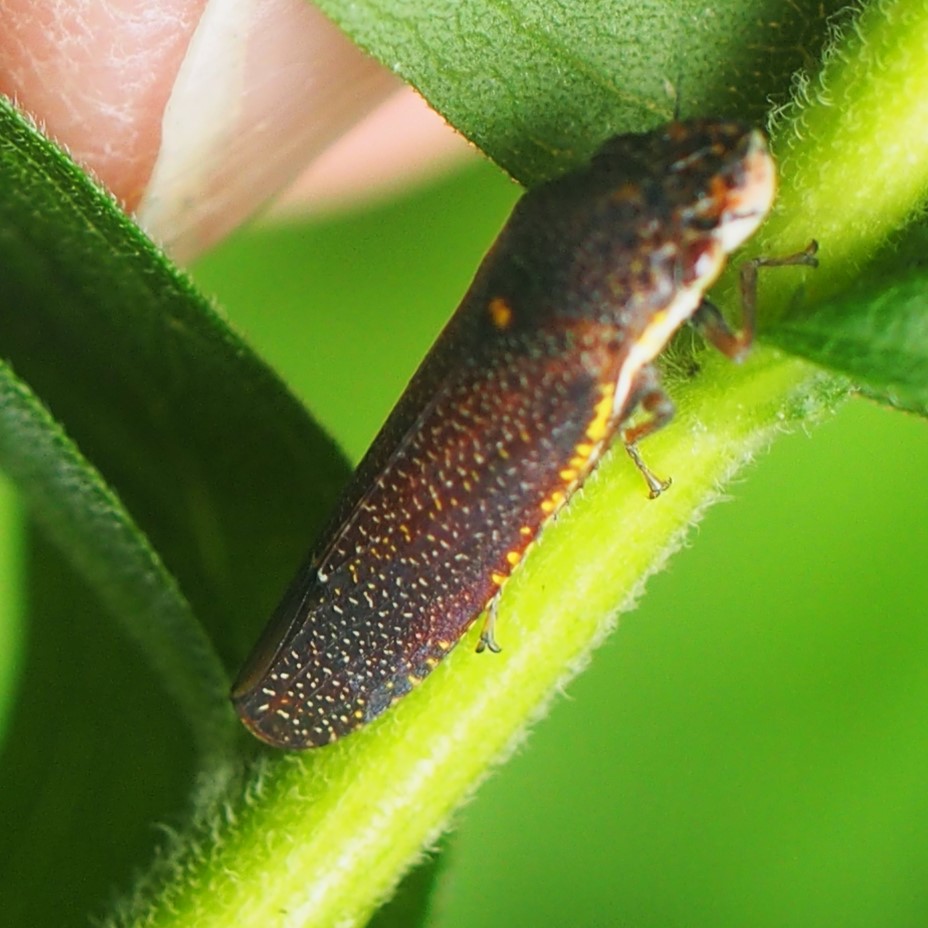
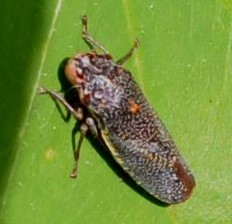
Let's see how the Barklice are doing. Earlier this week we saw this nymph, which was a first for me, or so I thought until Diane Young said it was a rather late instar of Polypsocus Corruptus. At first I thought I hadn't been seeing P. corruptus nymphs, which I'd grown to think always looked like picture 2. Meanwhile I have now seen a couple of adults, like number 3.
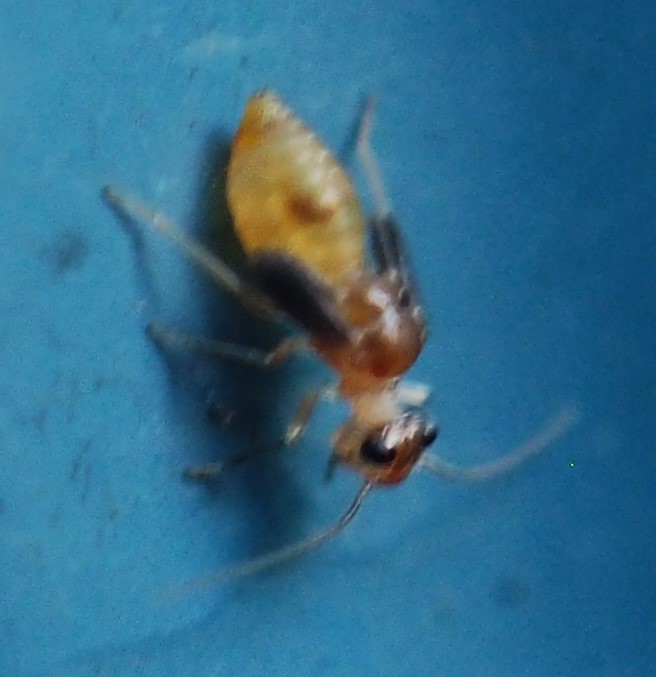
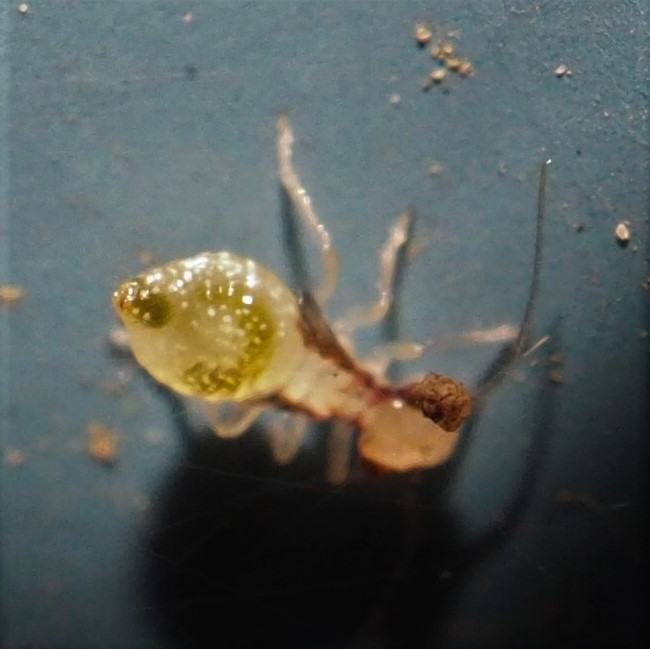
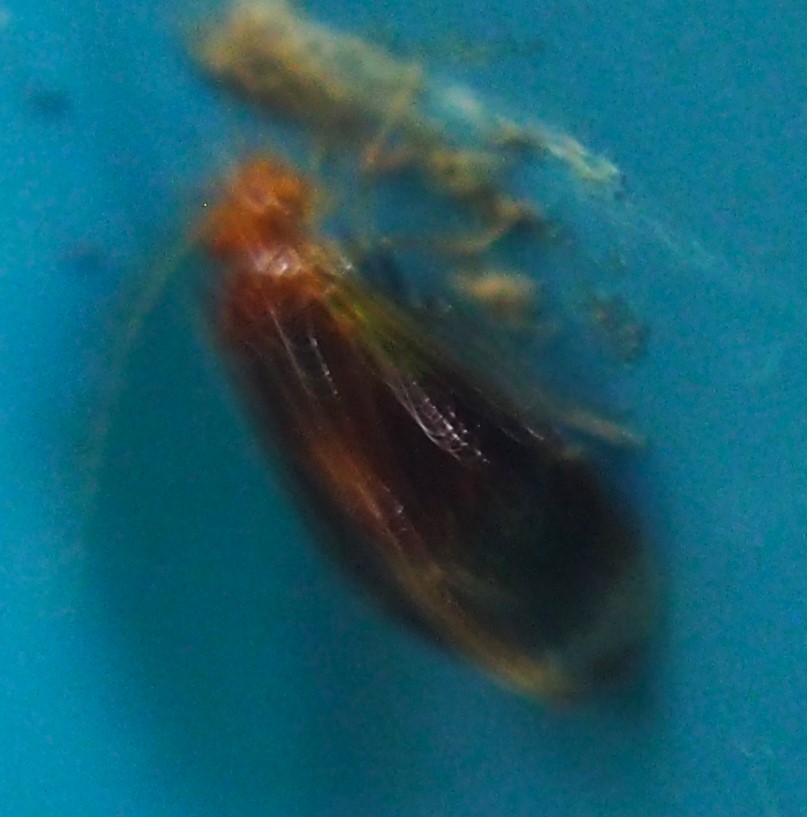
Here is a mystery Barklouse. It has a rather prominent pterostigma, so maybe someone can diagnose it. Second, here are some of what look like Barklouse eggs (probably Graphopsocus cruciatus).
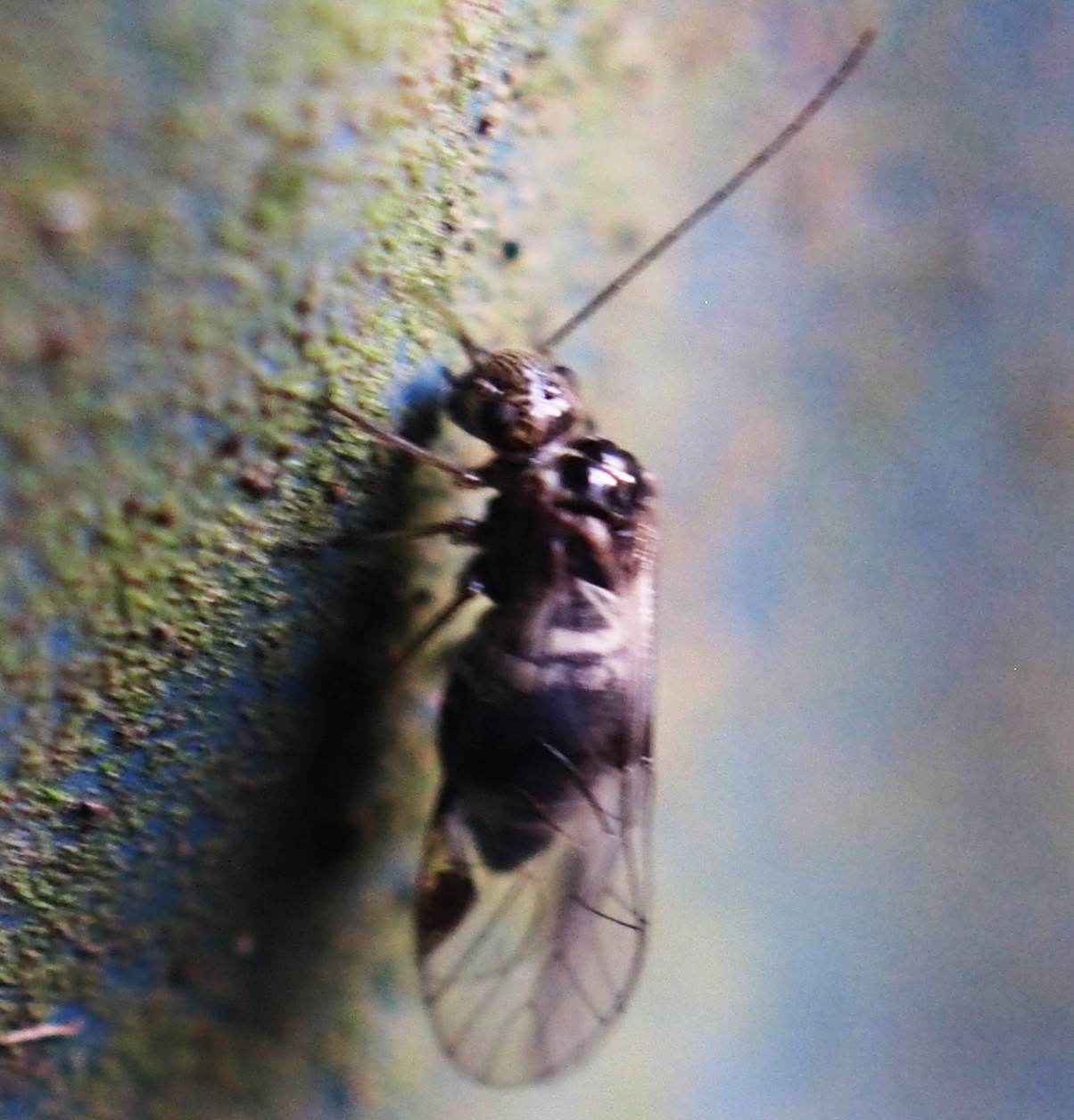

The earwigs were abundant this week. I had NEVER seen so many in one short time.
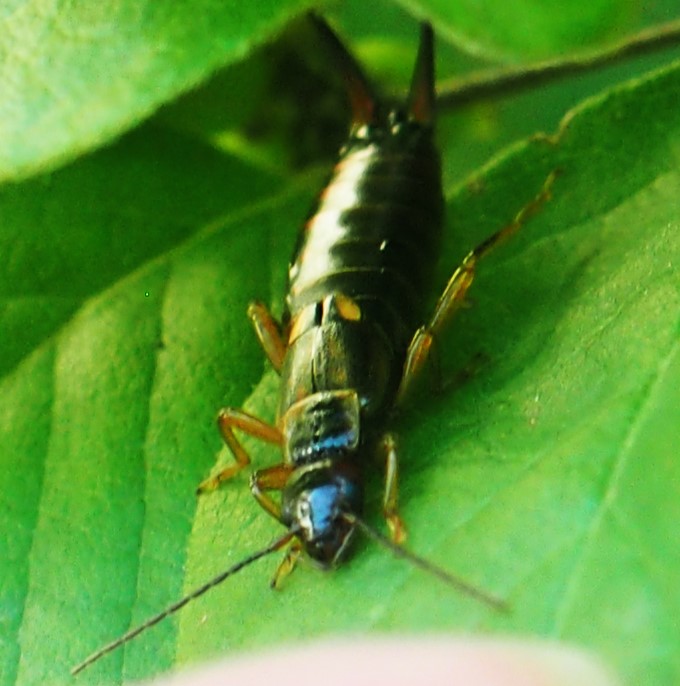
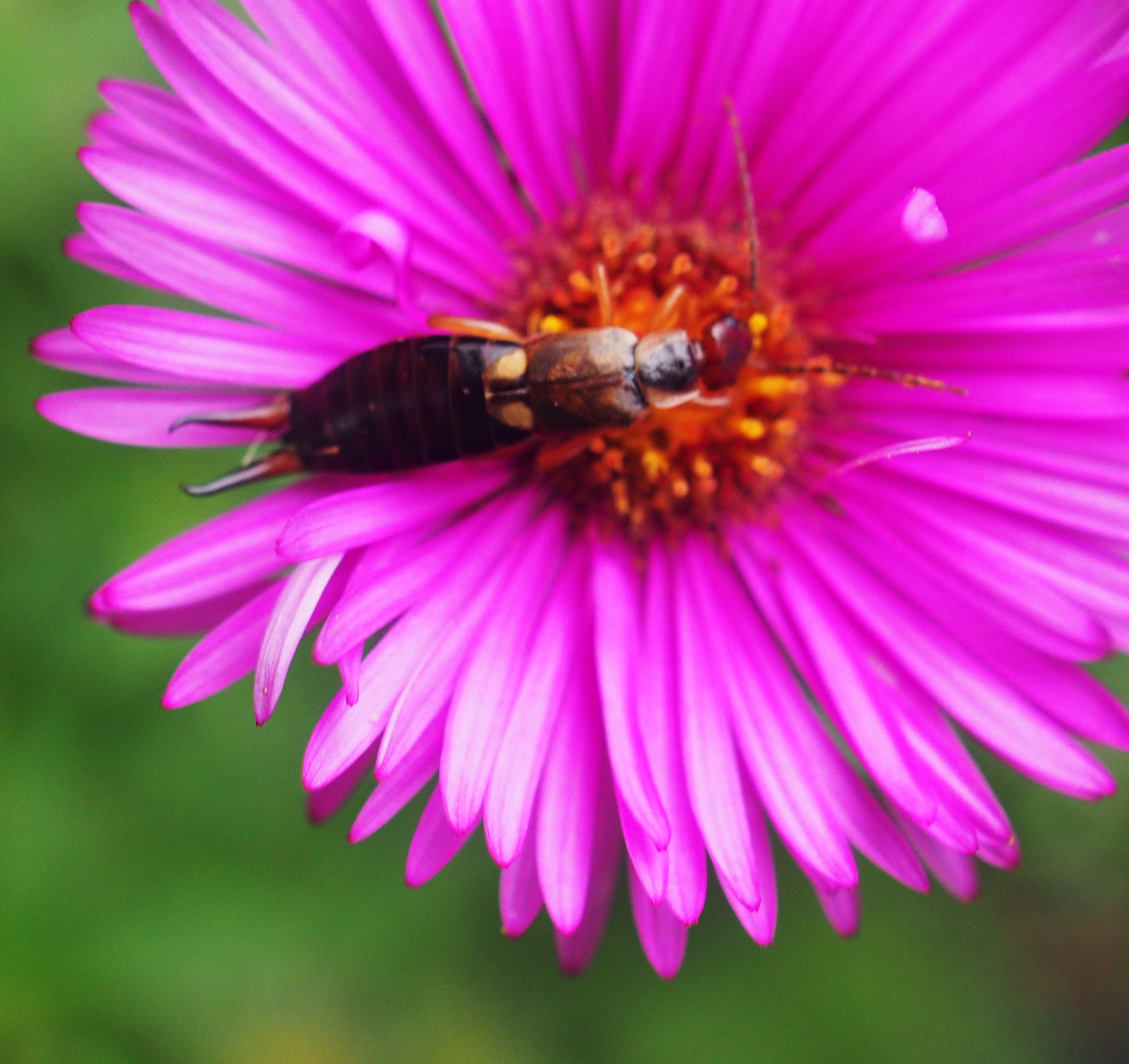

I think these and the ones above are all European Earwigs because of the little teardrops just at the "waist".

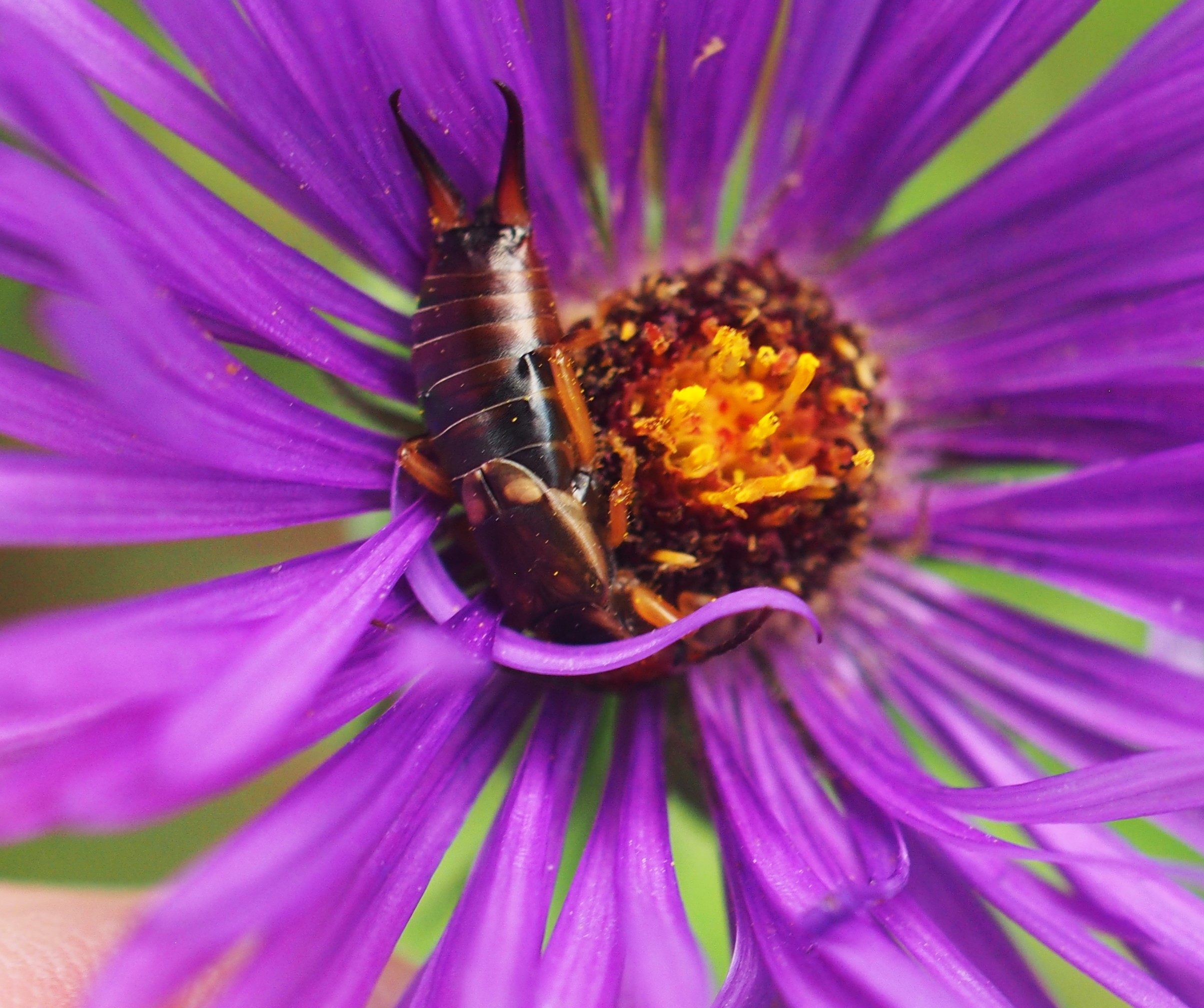
On to the Flies! First up, a Bathroom Moth Fly. The next two are of a lovely Calyptrate Fly, with its lovely golden body and red eyes.
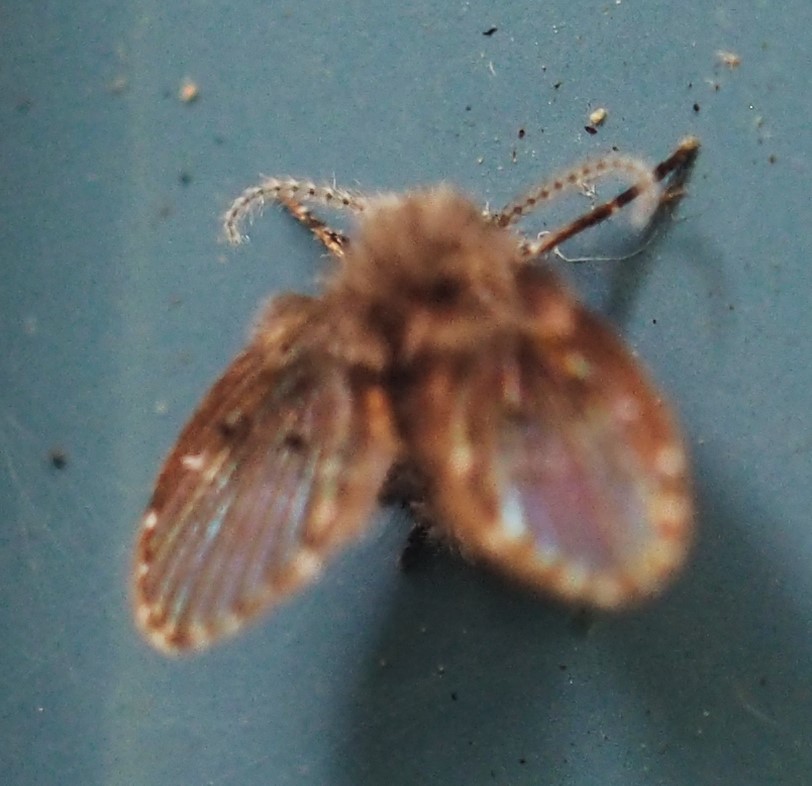
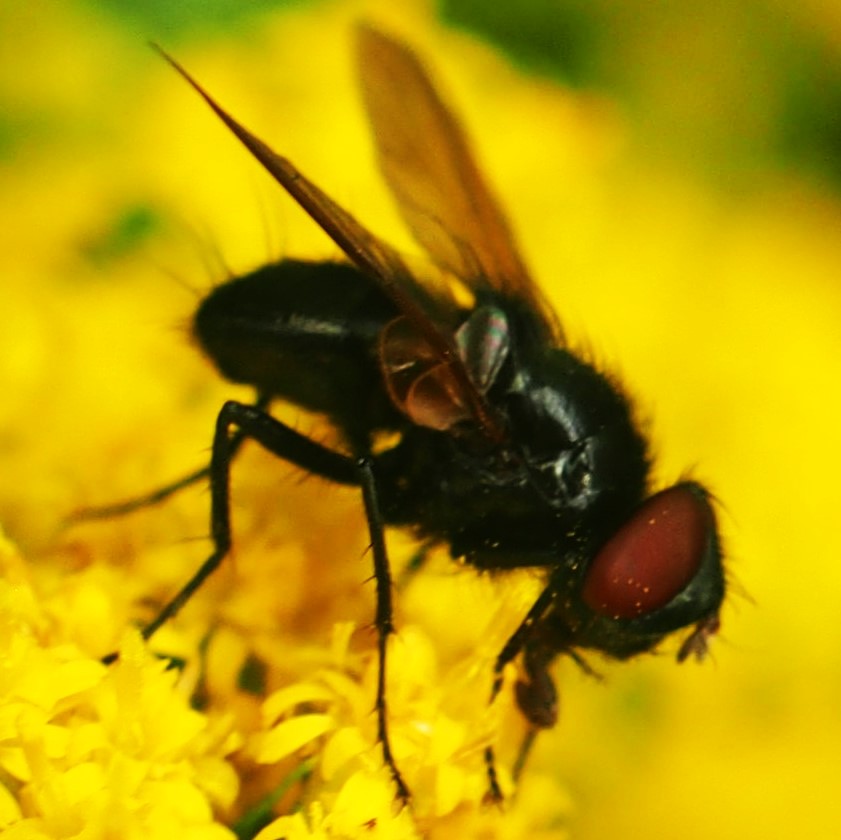
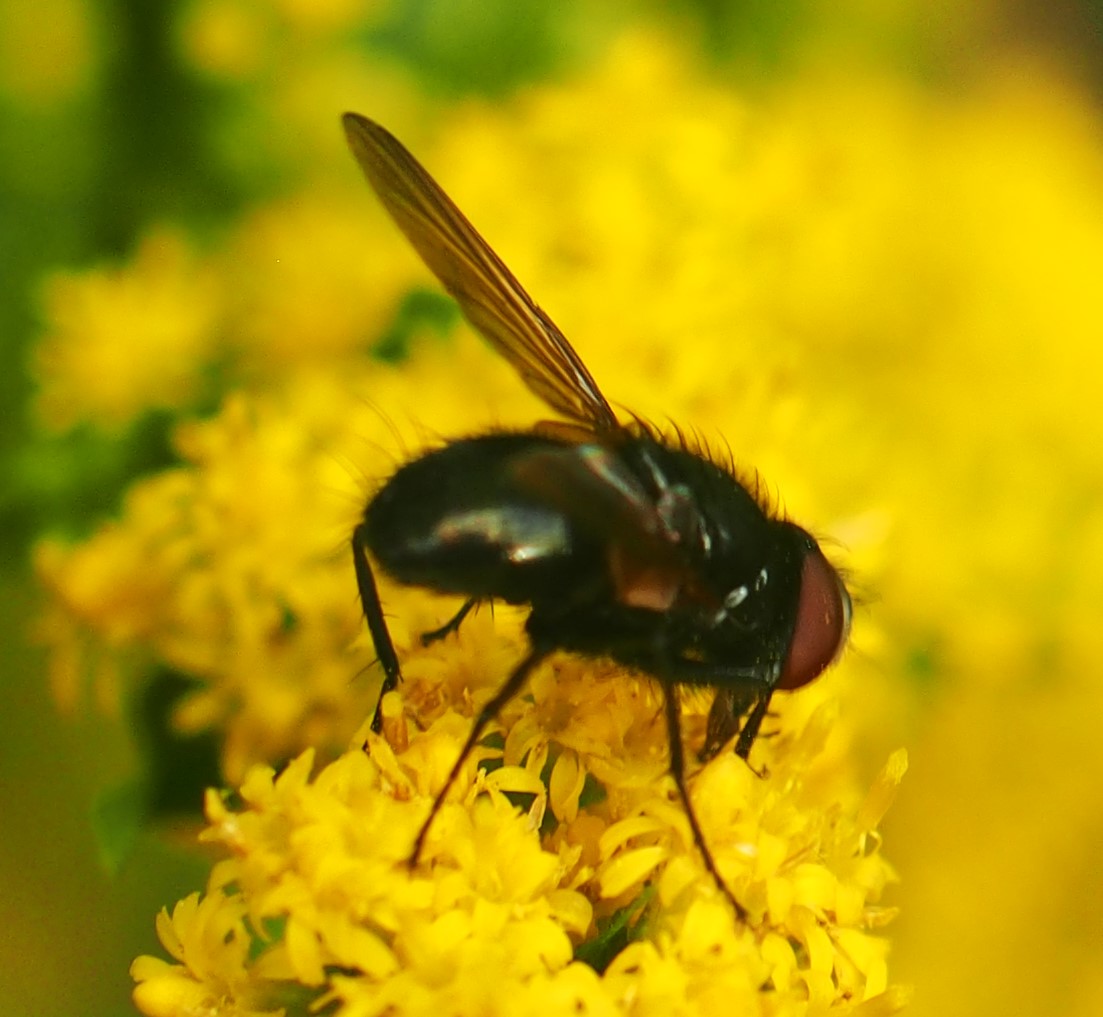
Here is a gorgeous Greenbottle. Another. And possibly a Mosquito or a Midge.
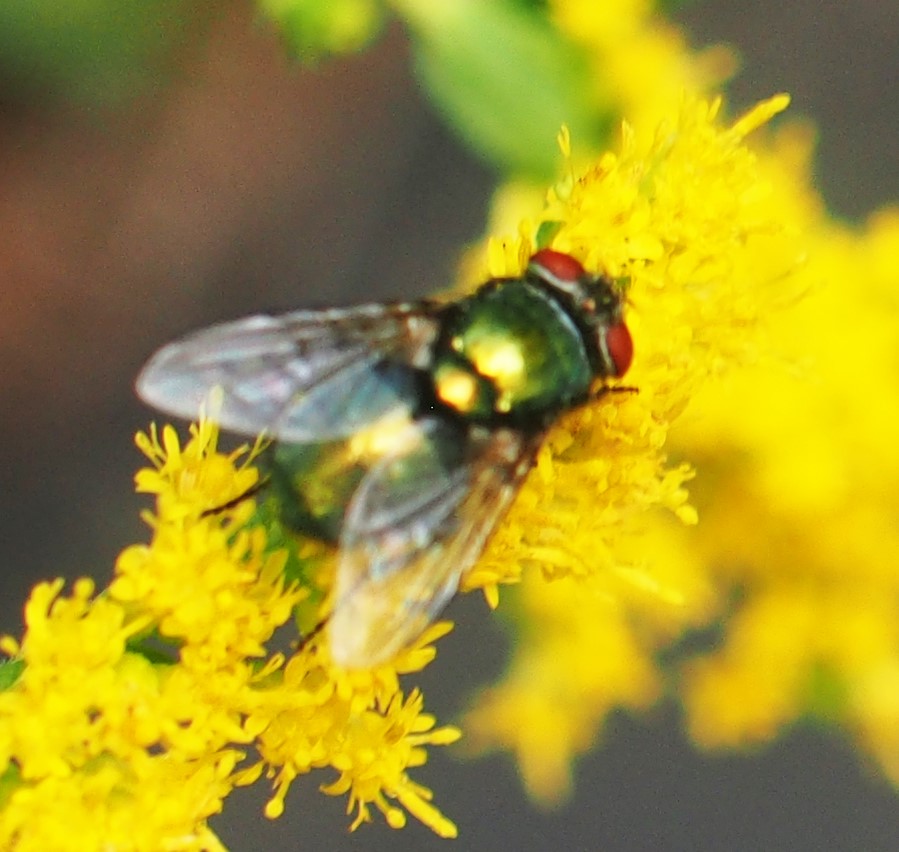
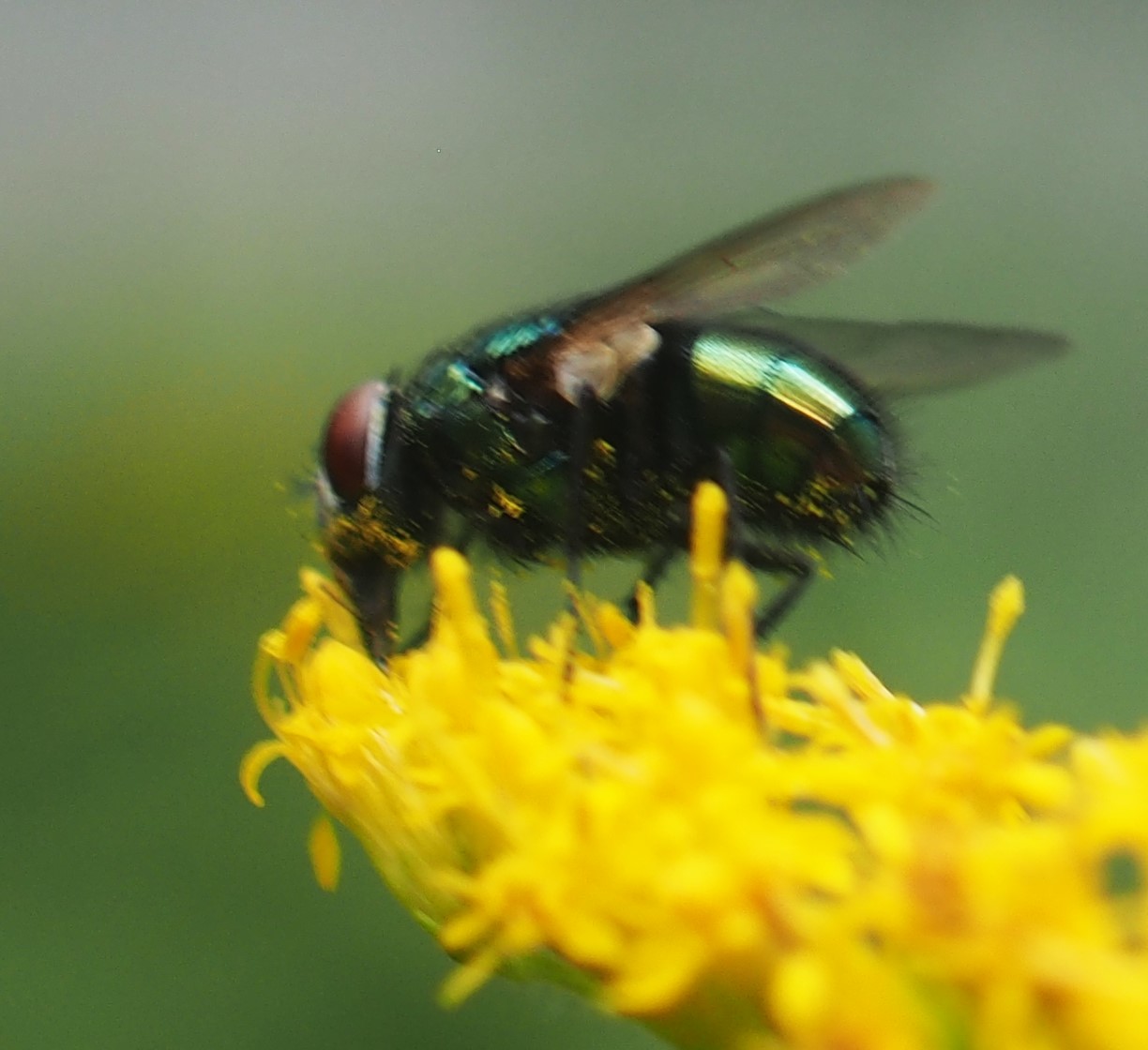
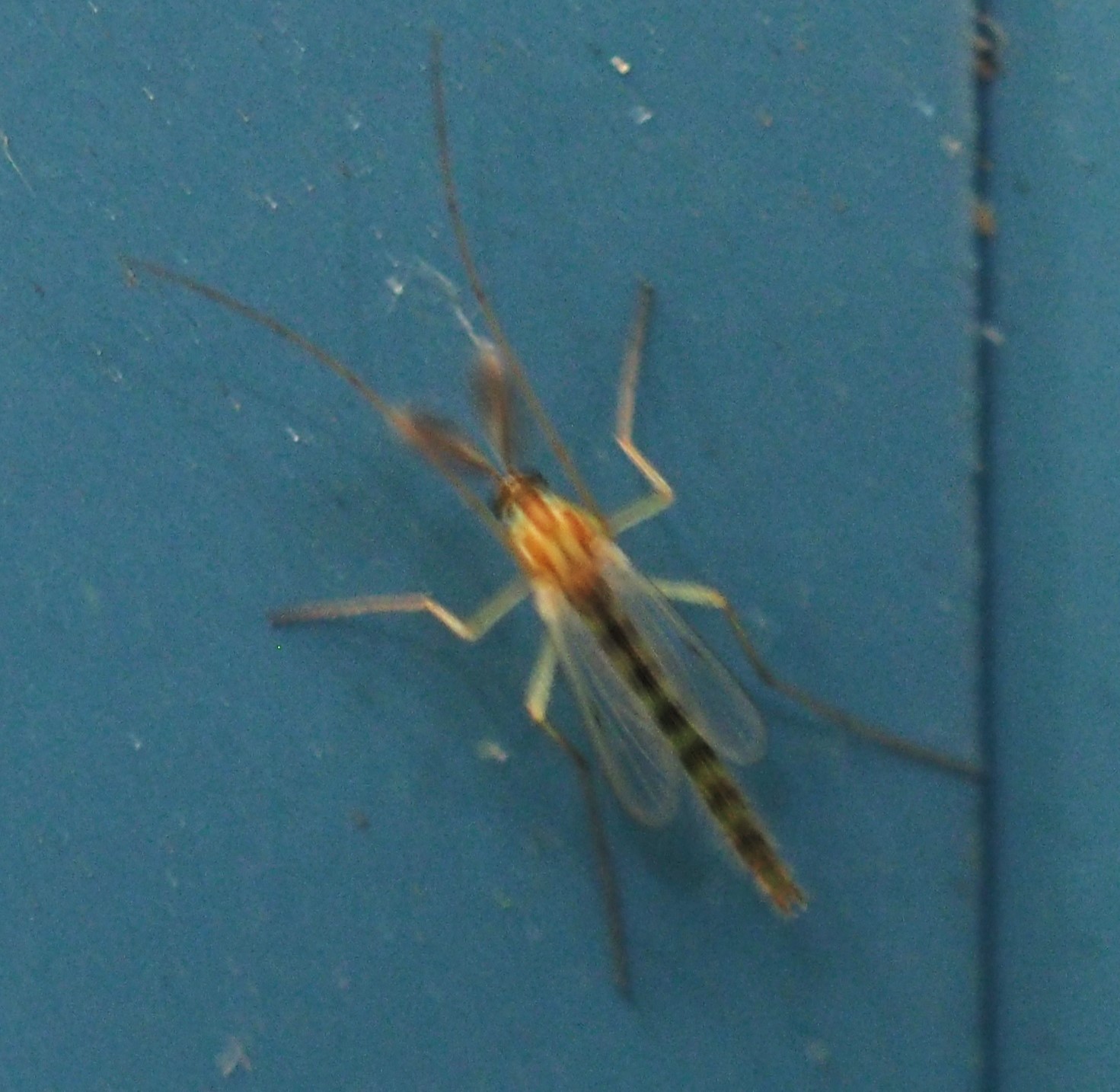
This mystery Fly's picture 1 has a wobbly head but clear wing markings, while the others have a clearer top.
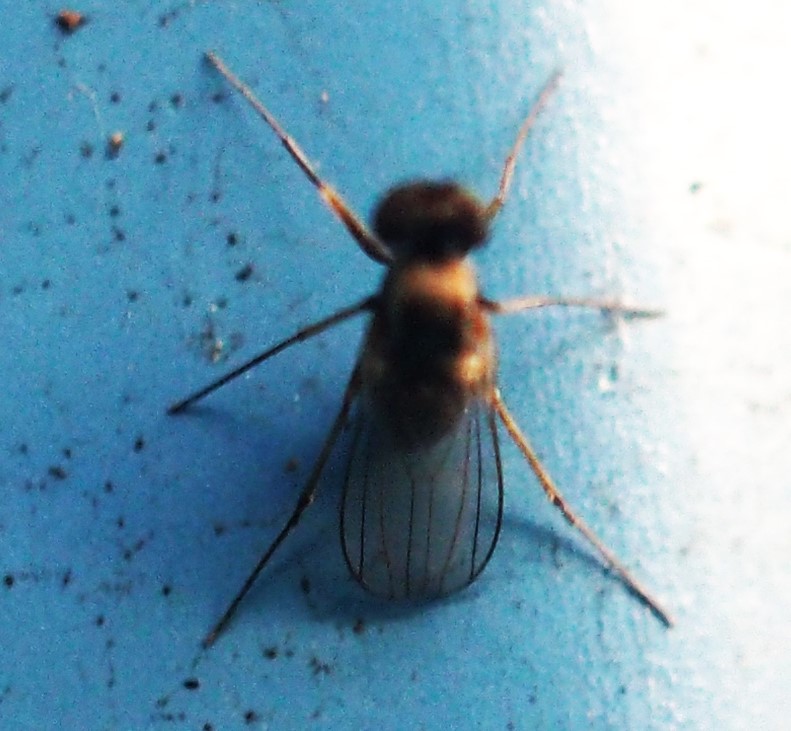
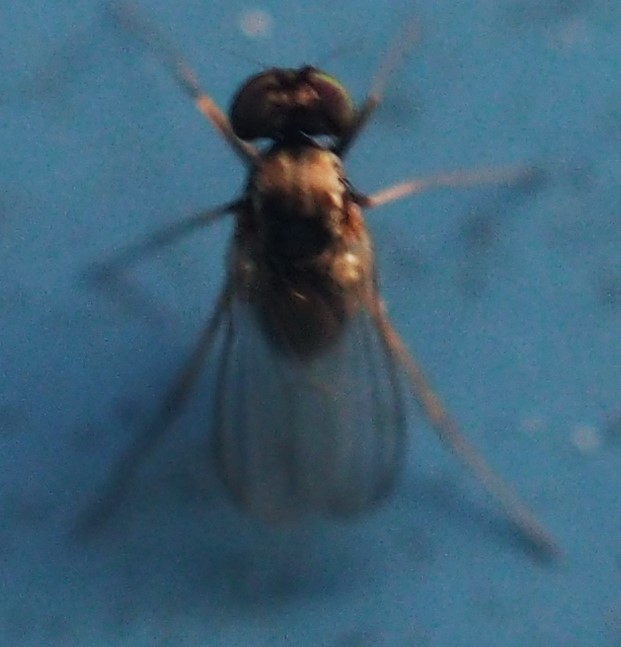

How about Moths? Here is one identified as a Pearl Veneer (Agriphila straminella) by @perfectman. The second, taken 2 days earlier than the first, may or may not be the same species, or even the same individual.
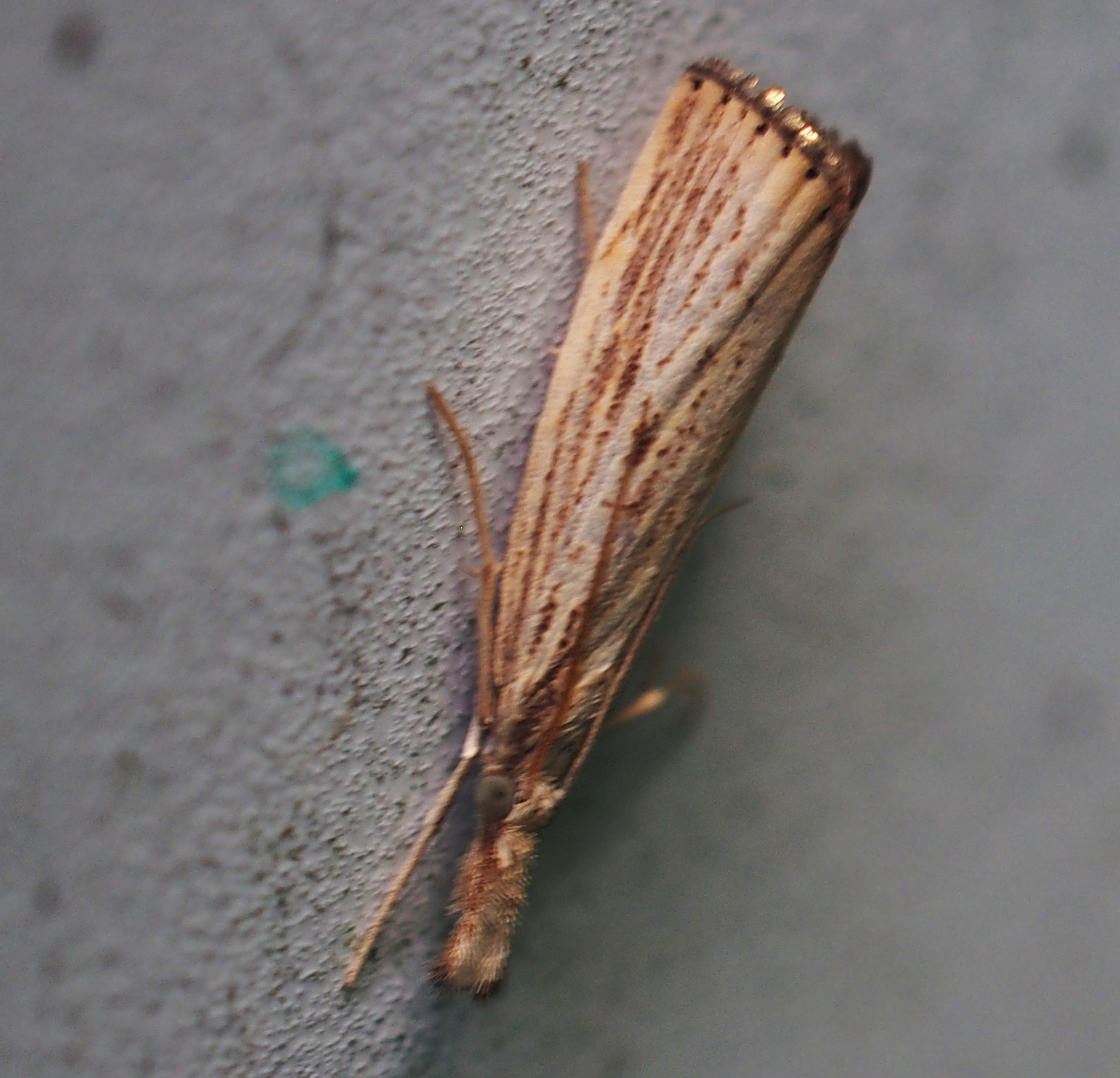
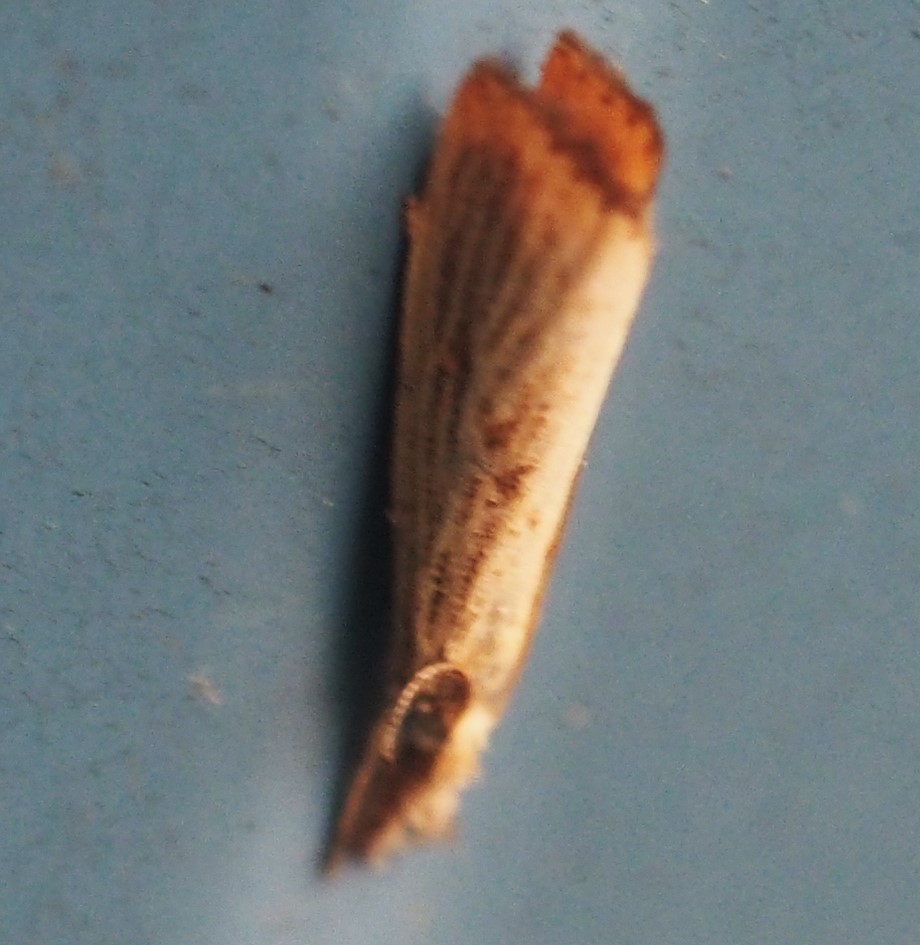
These two (probably Ermine) Moths were taken 1 day apart, starting with number 1. Although I seem to see them often, they especially grab my eyes during Goldenrod season.
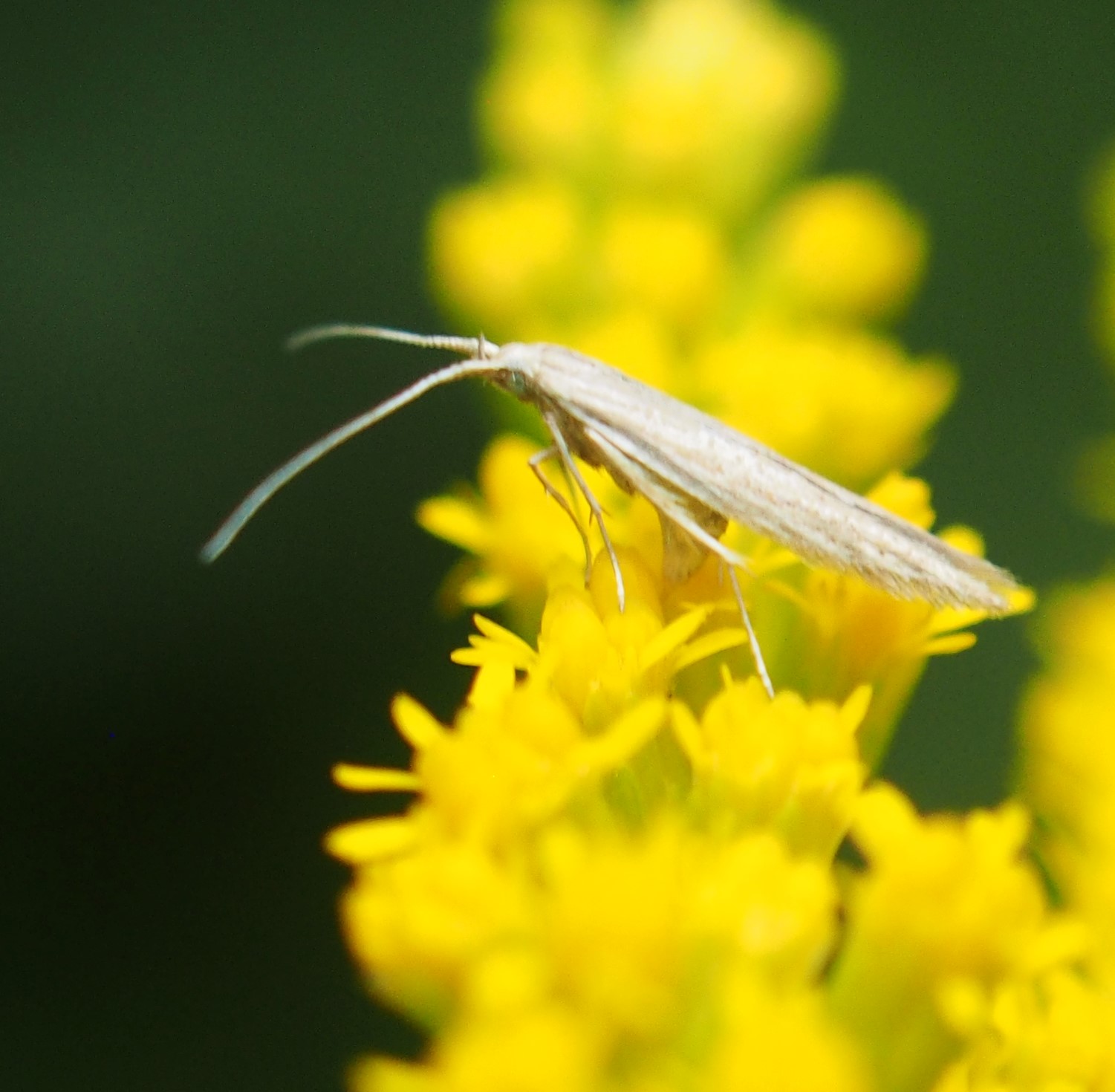
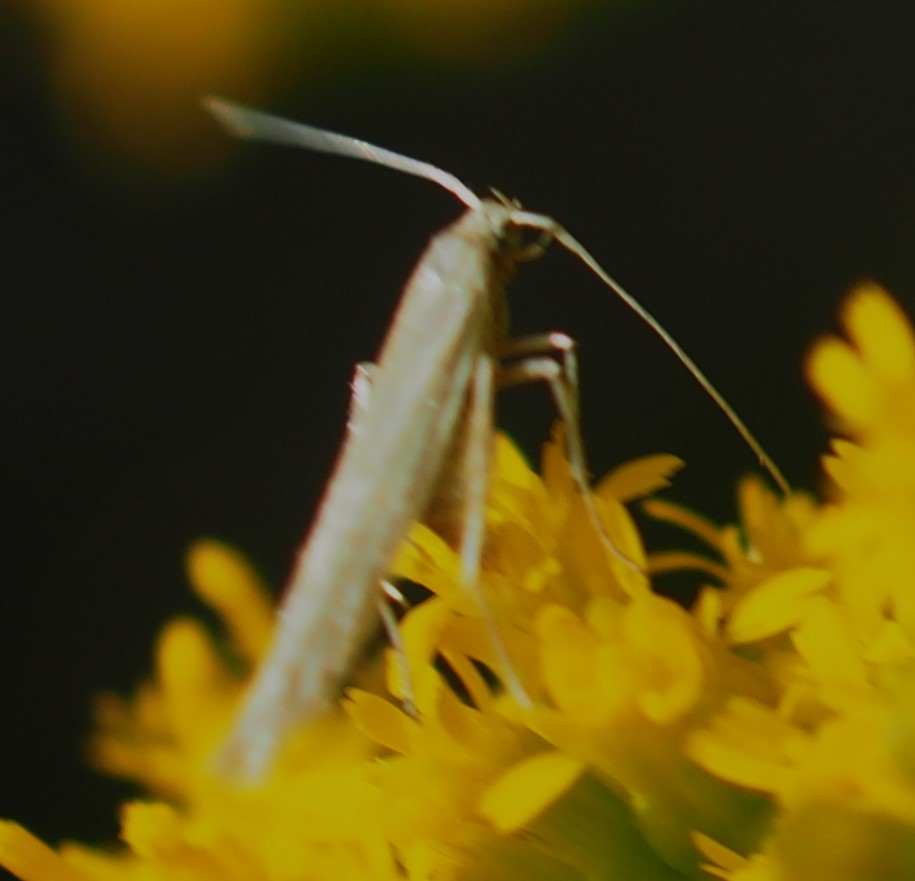
I think it's time for a Flower Walk. Here we are more than half-way finished with September, one week before the statutory start of Autumn. But we all know Autumn started to start some time ago. Already I take the water temperature each morning to try to decide if the fish get fed or not (55 F is the cutoff point, and this morning it was just less than 60 F.) So let's see the Flowers. First is the Japanese Anemone, as it begins its downward spiral, but still stands grandly.
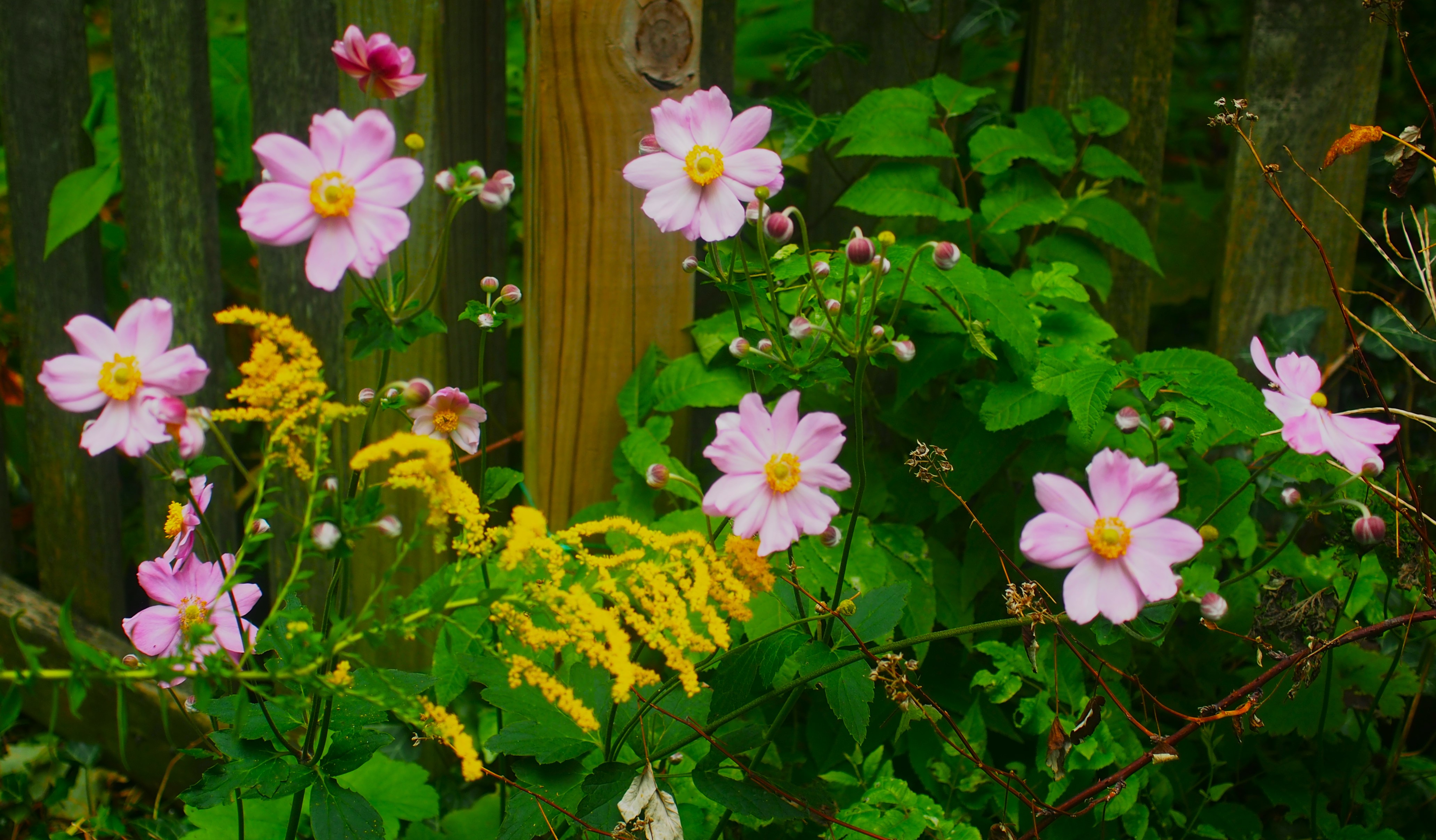
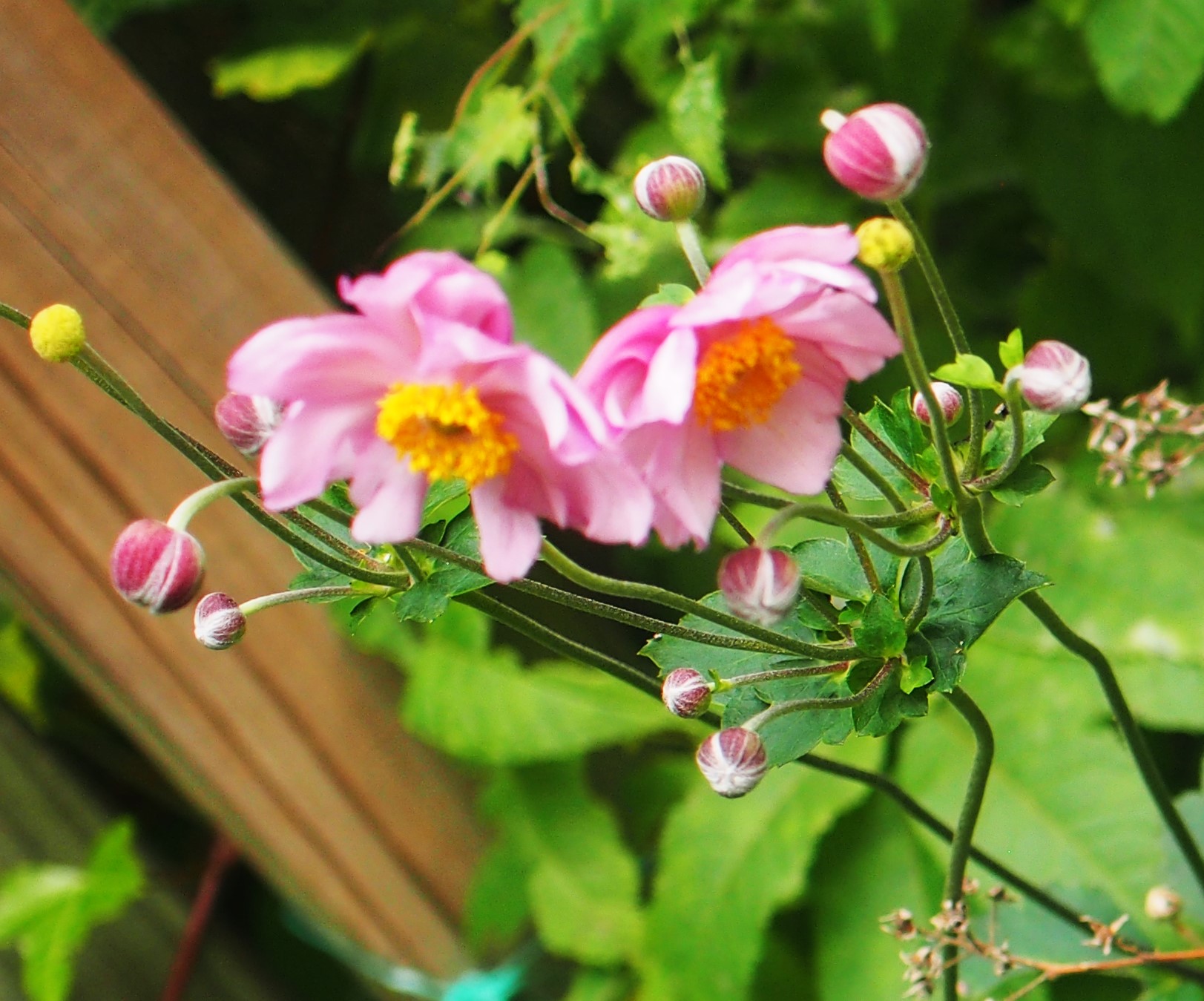
Next, one of my favorites, the Asiatic Dayflower. Its relative, the Spiderwort, stopped blooming a few weeks ago.
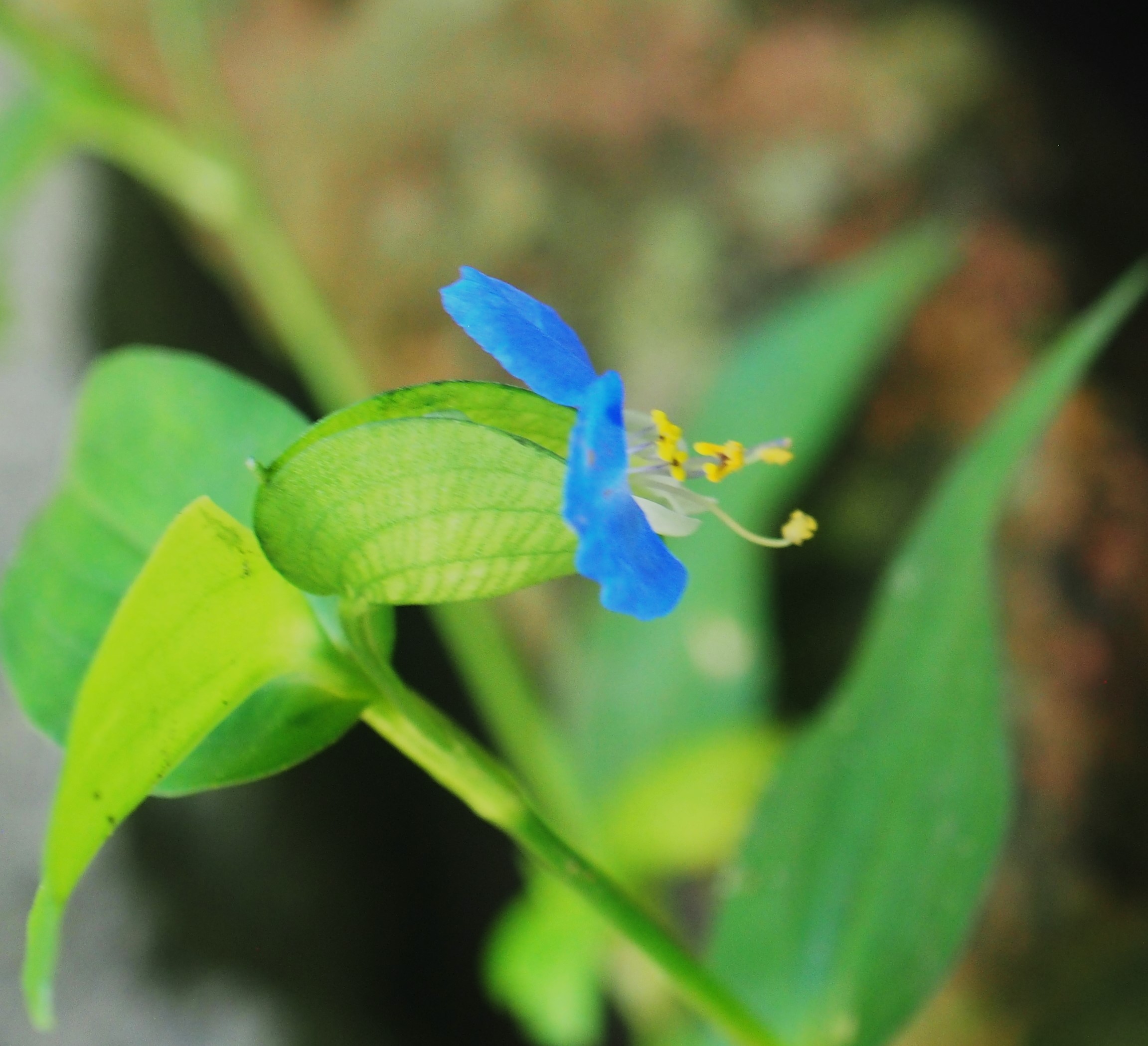
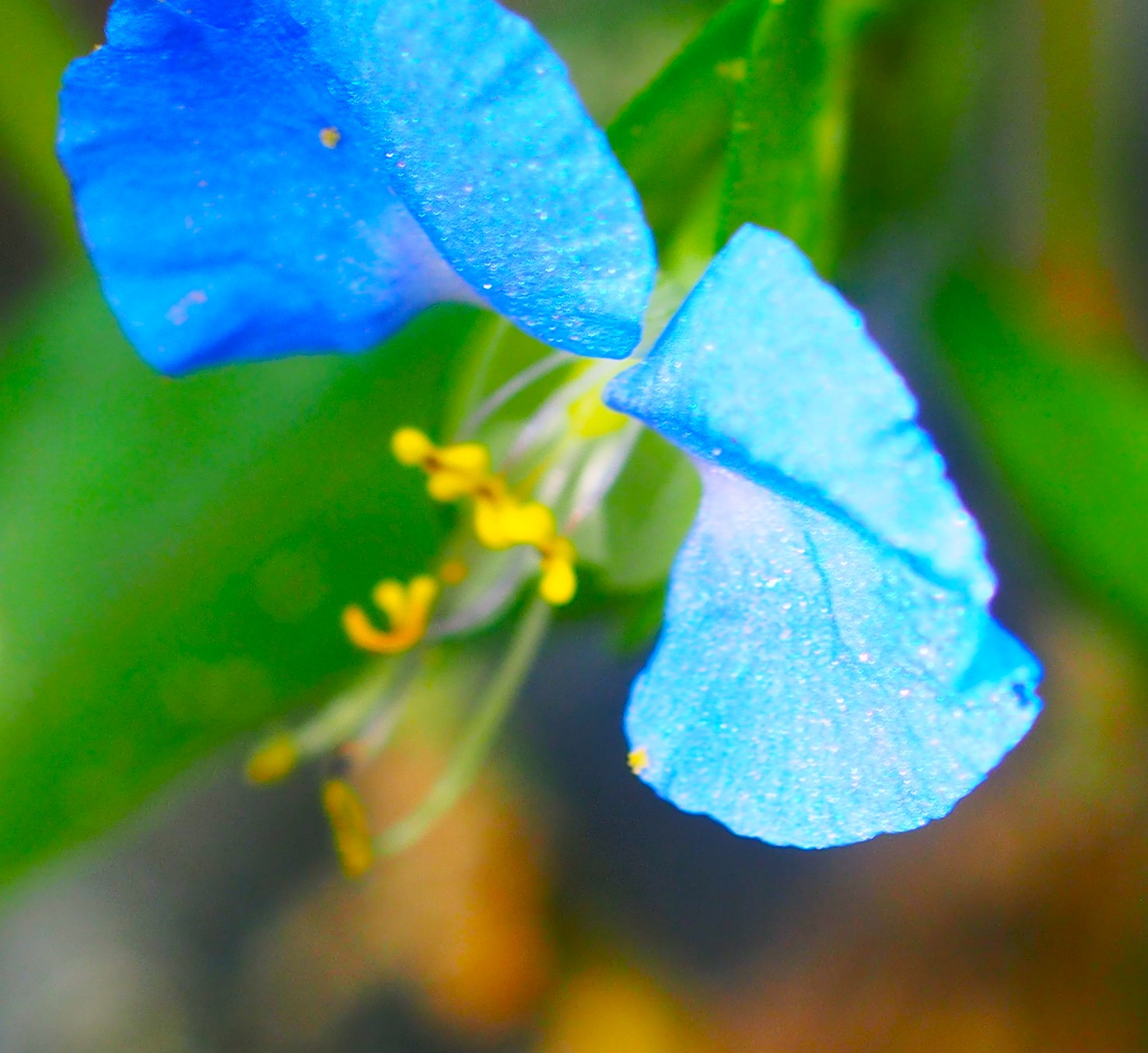

The gorgeous Asters.

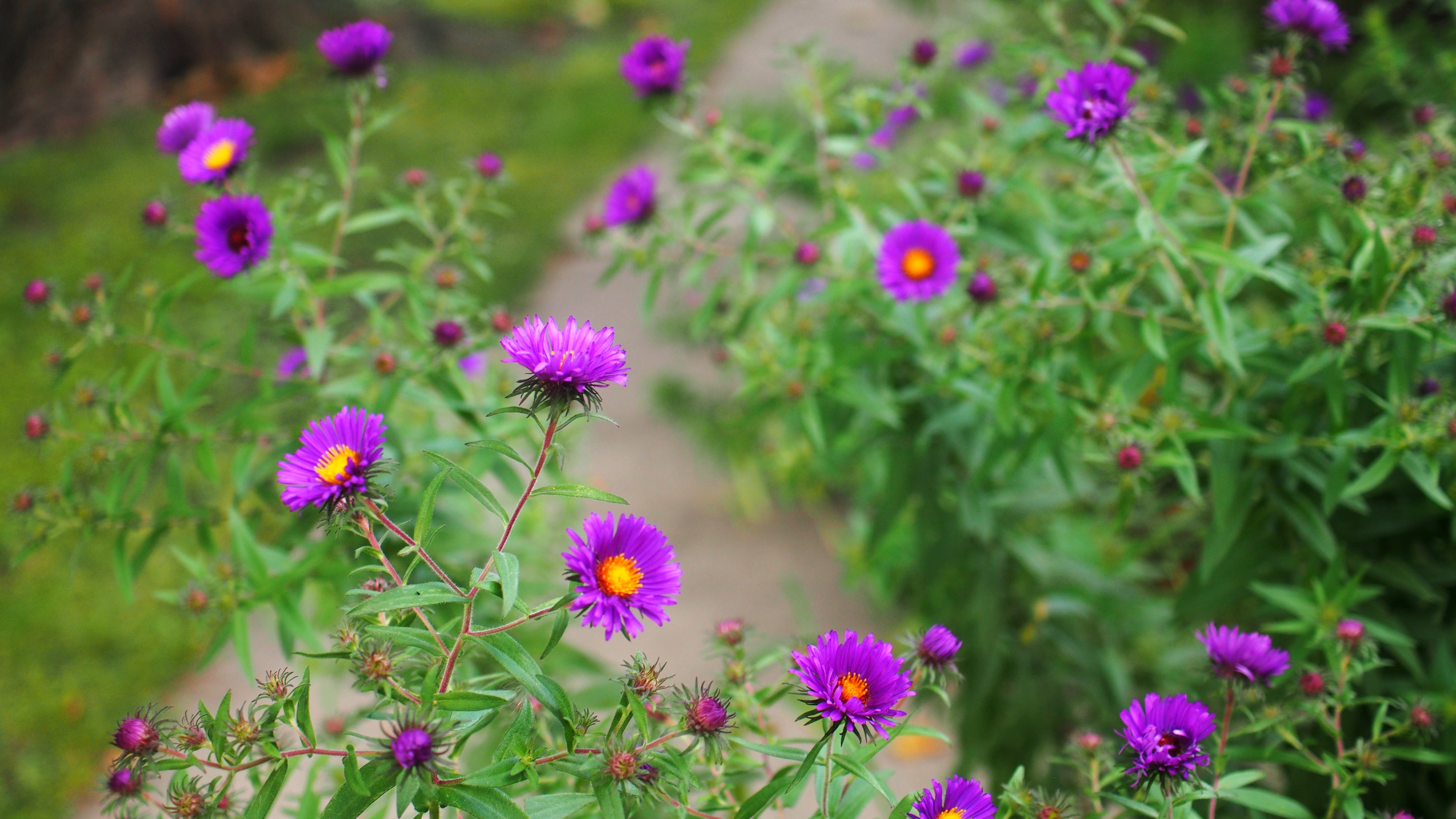
Asters and Goldenrod. Or, if you like, Goldenrod and Asters.
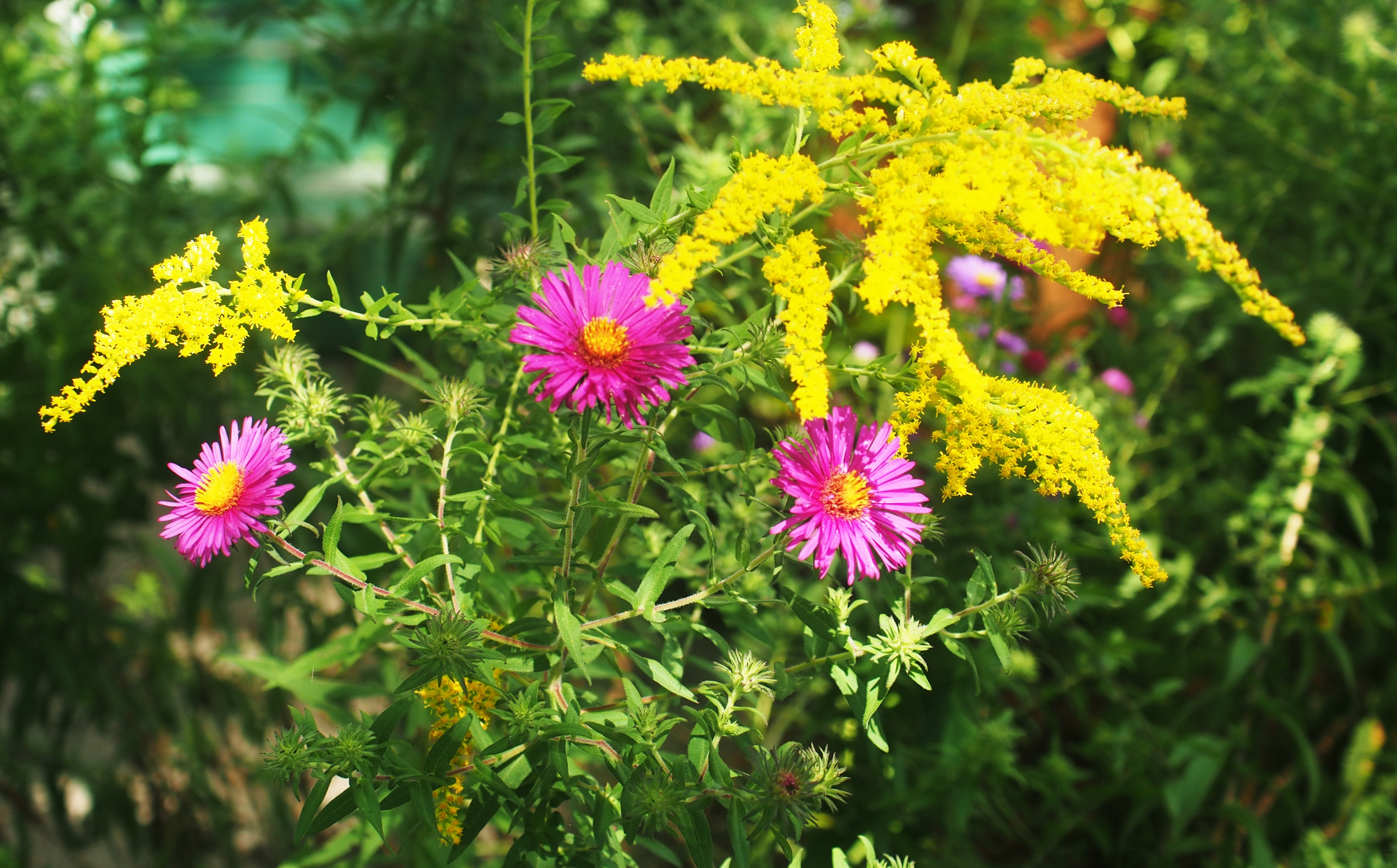
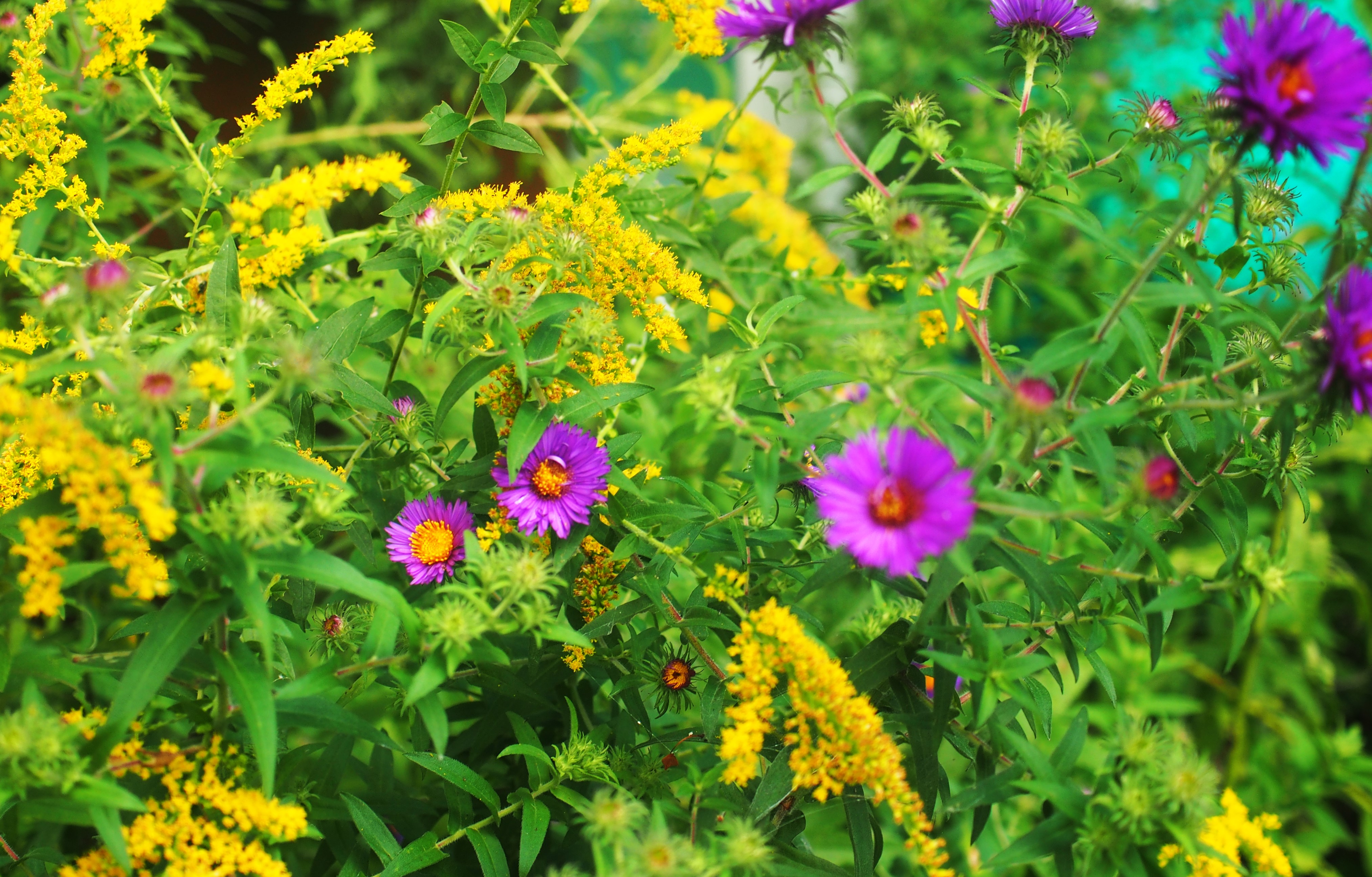
Some late-blooming Honeysuckle. I still remember biting off the tip of the flower and tasting the sweet "honey". Isn't it wonderful that we can still remember those good childhood
scenes? Second is the cultivated Phlox. It's now down to these smaller handfuls. The Wild Phlox is still going, still going. It started weeks before the cultivated, and seems to be planning to be still going when its cultivated cousin has folded.
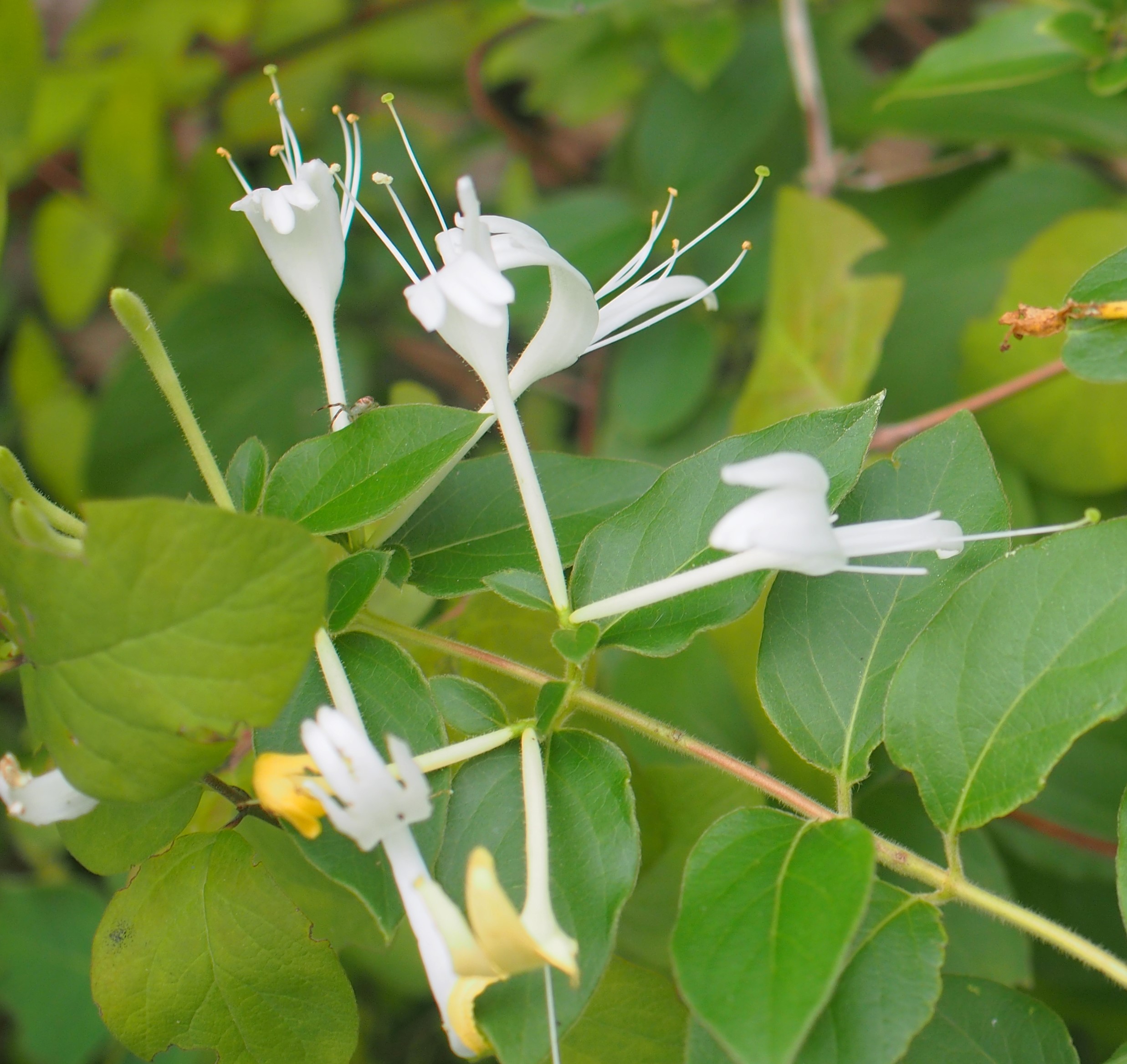
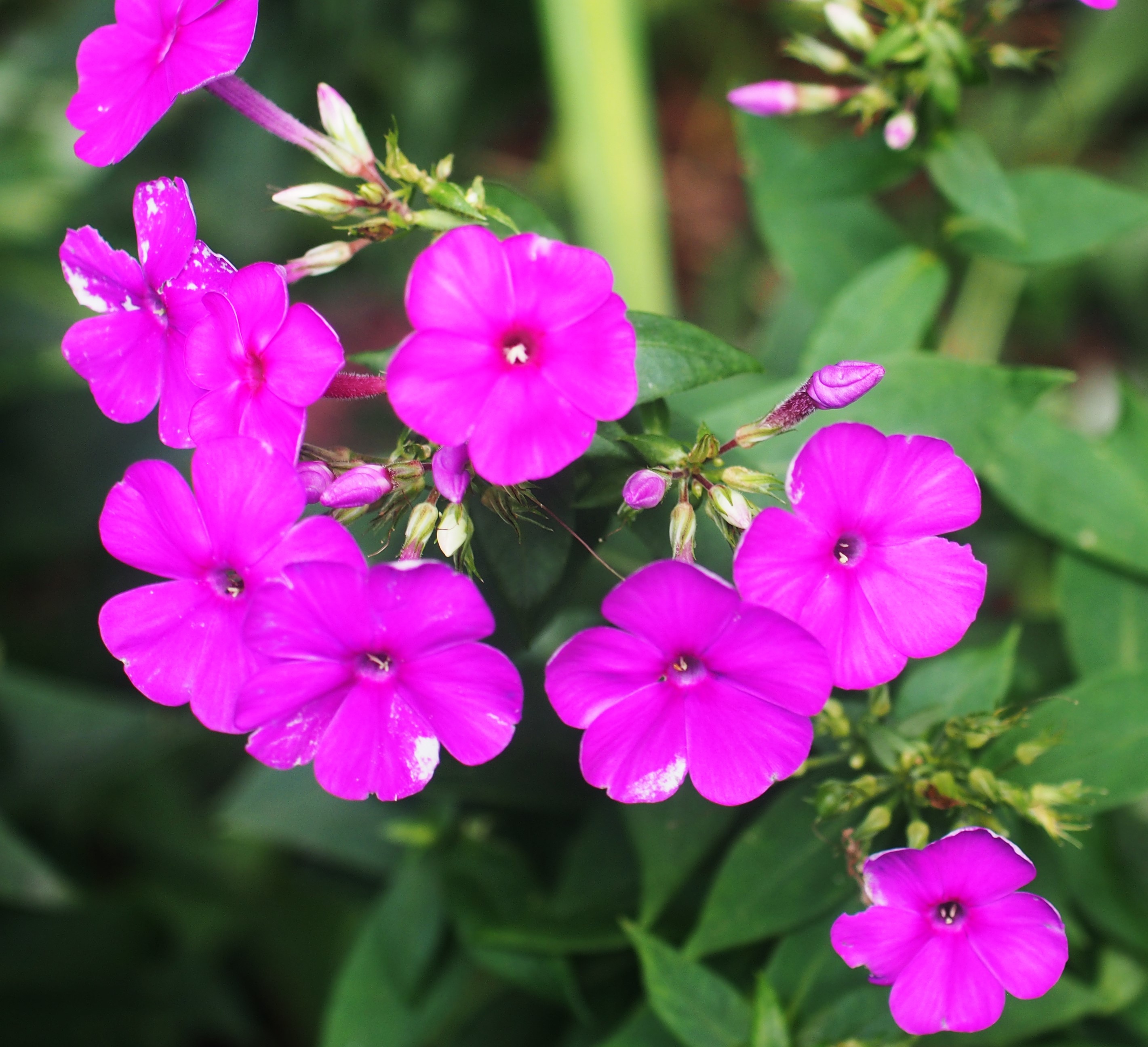
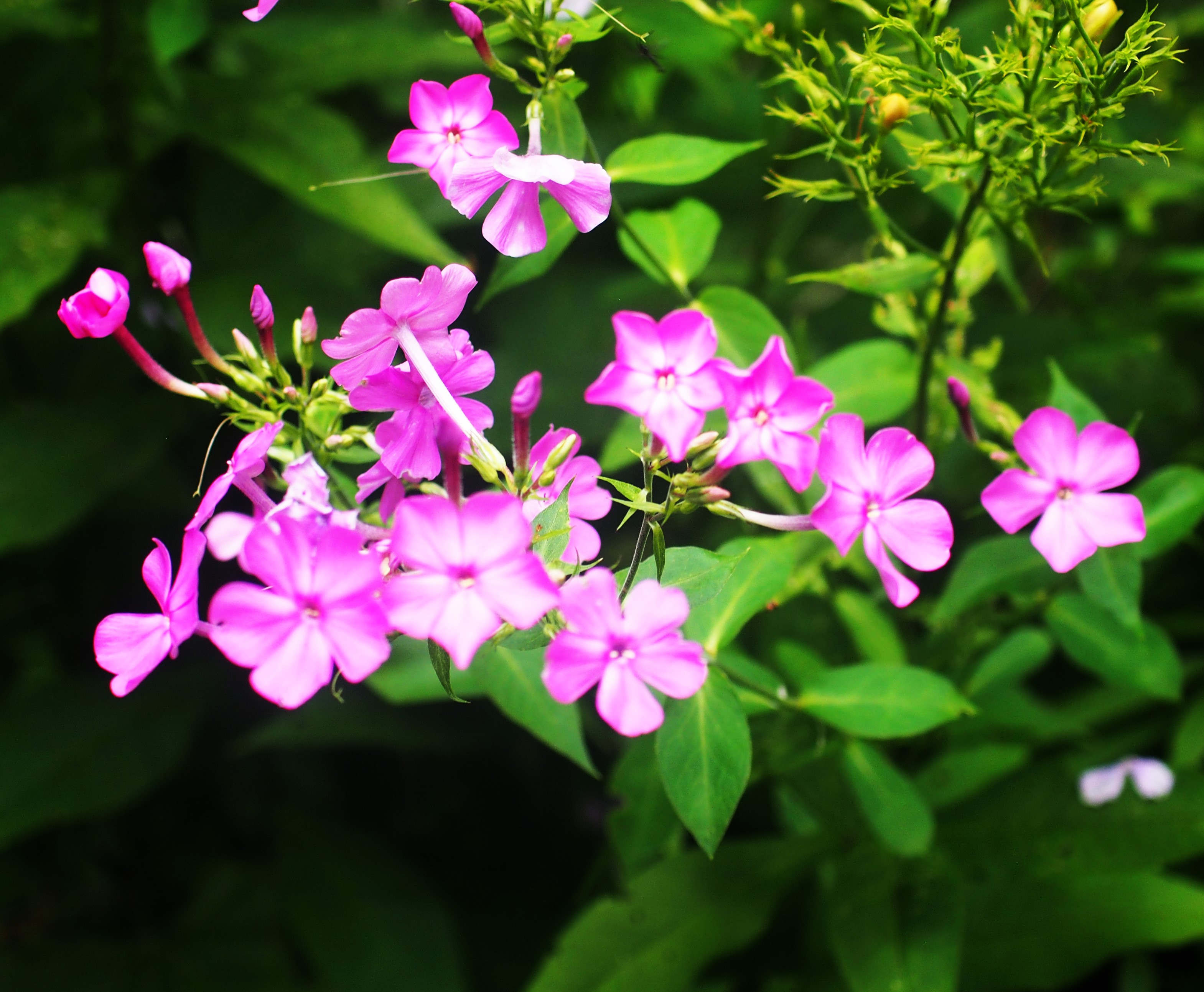
Well, this is where the Water Lilies would be if they were still blooming. I promised myself I would re-show this picture of the Pond on September 5 if I couldn't find another Lily picture. Unfortunately the coolness of the Pond water has been retarding the opening of any buds that Rocky hasn't disassembled already. Picture 2, taken on September 9, shows the wreckage of several Lily buds and foliage that Rocky had already discovered and made suitable for the trash heap!
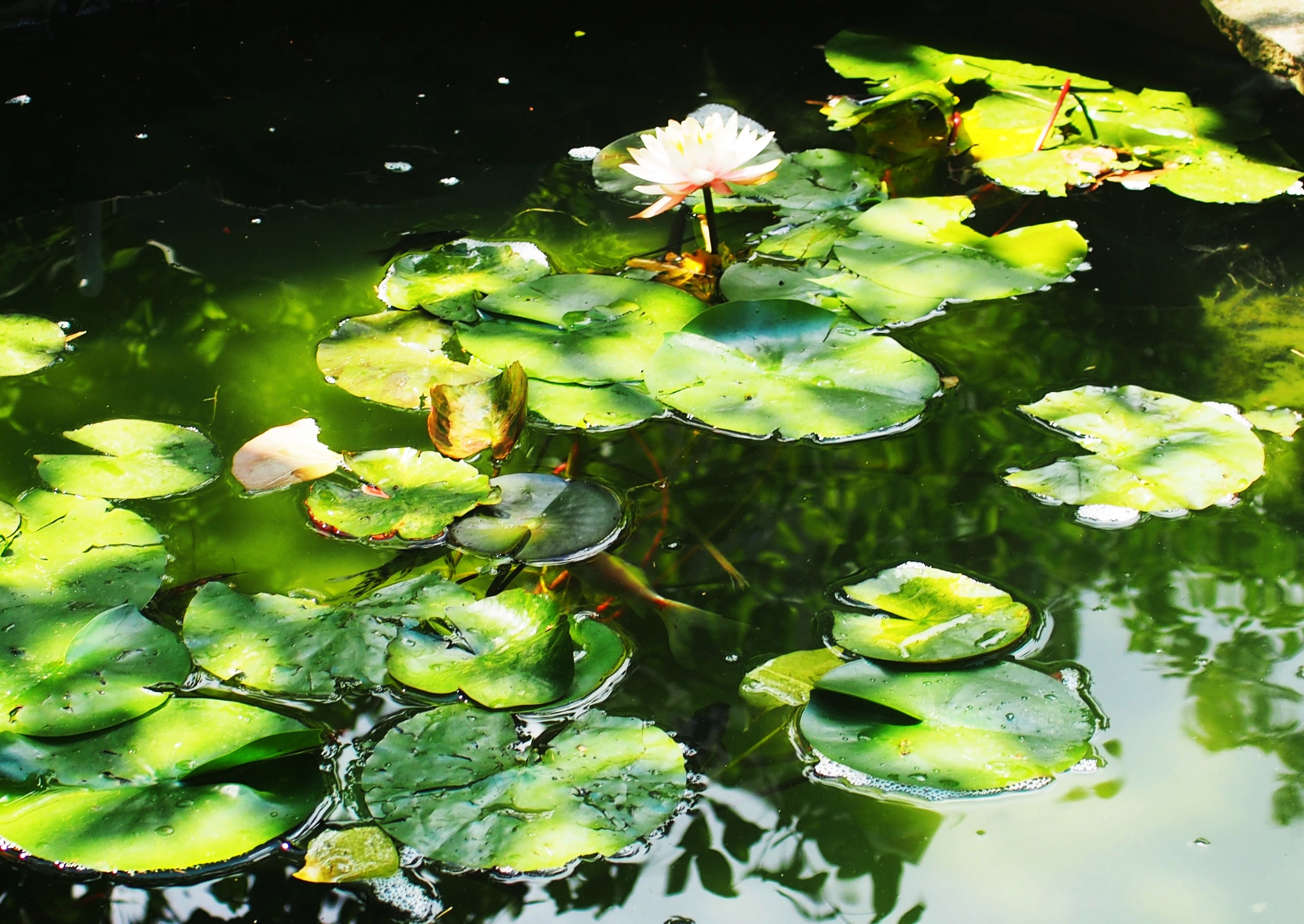
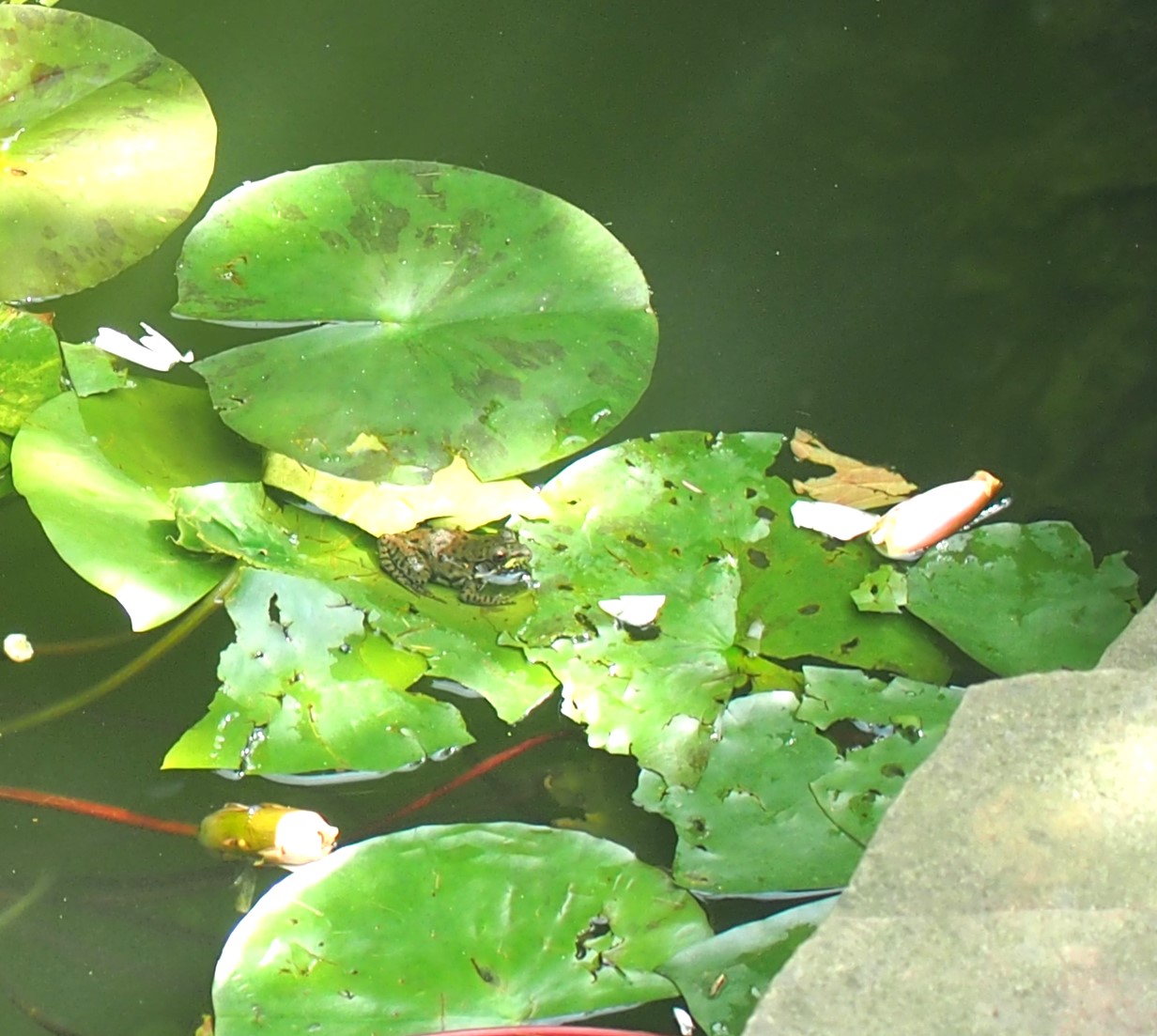
Here is the Tall, really Tall, Evening Primrose. It is still aiming for the moon. Last is the germinating Thistle seeds, as of September 14, 2023. So our Flower Walk is over for this week.
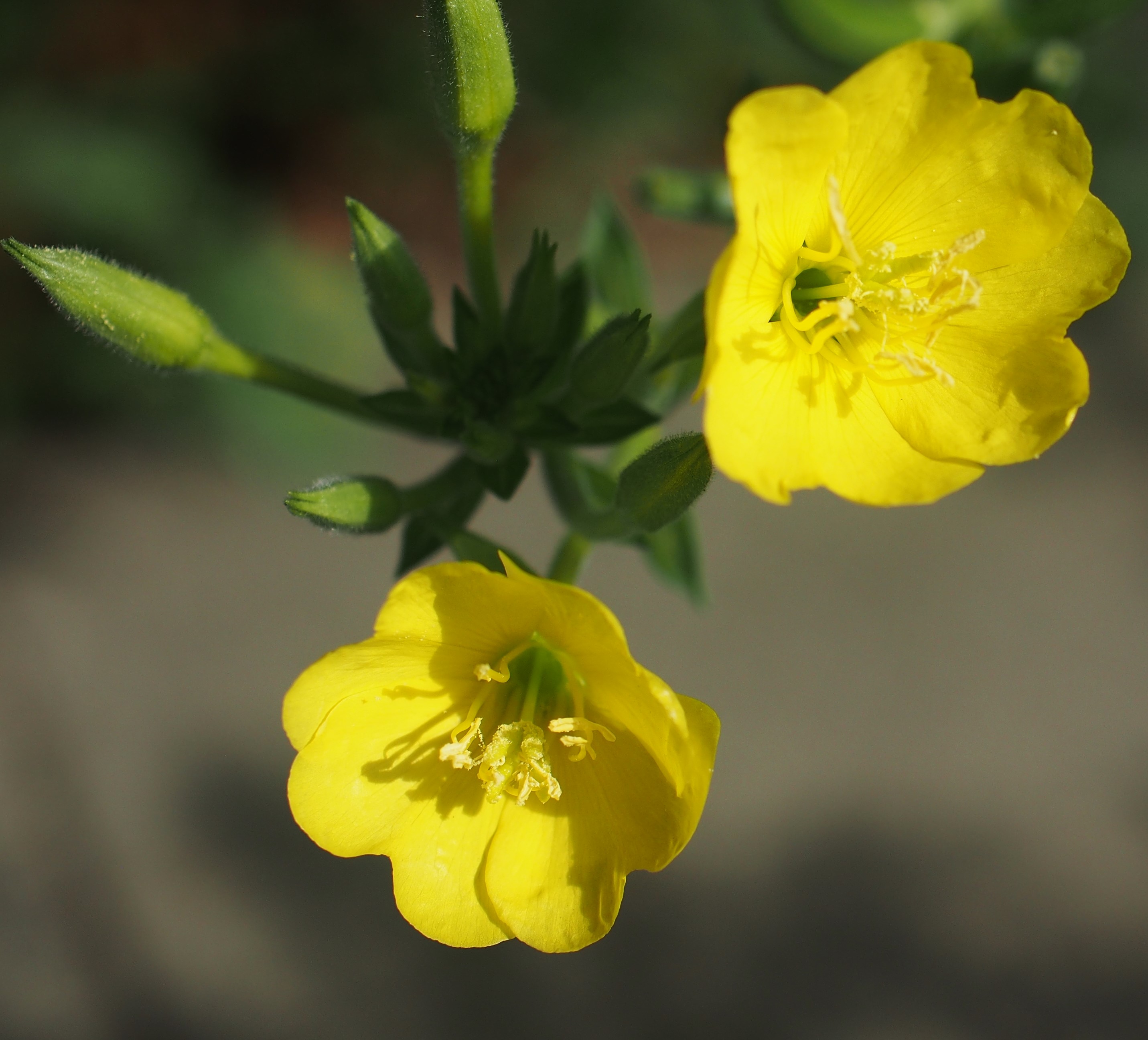
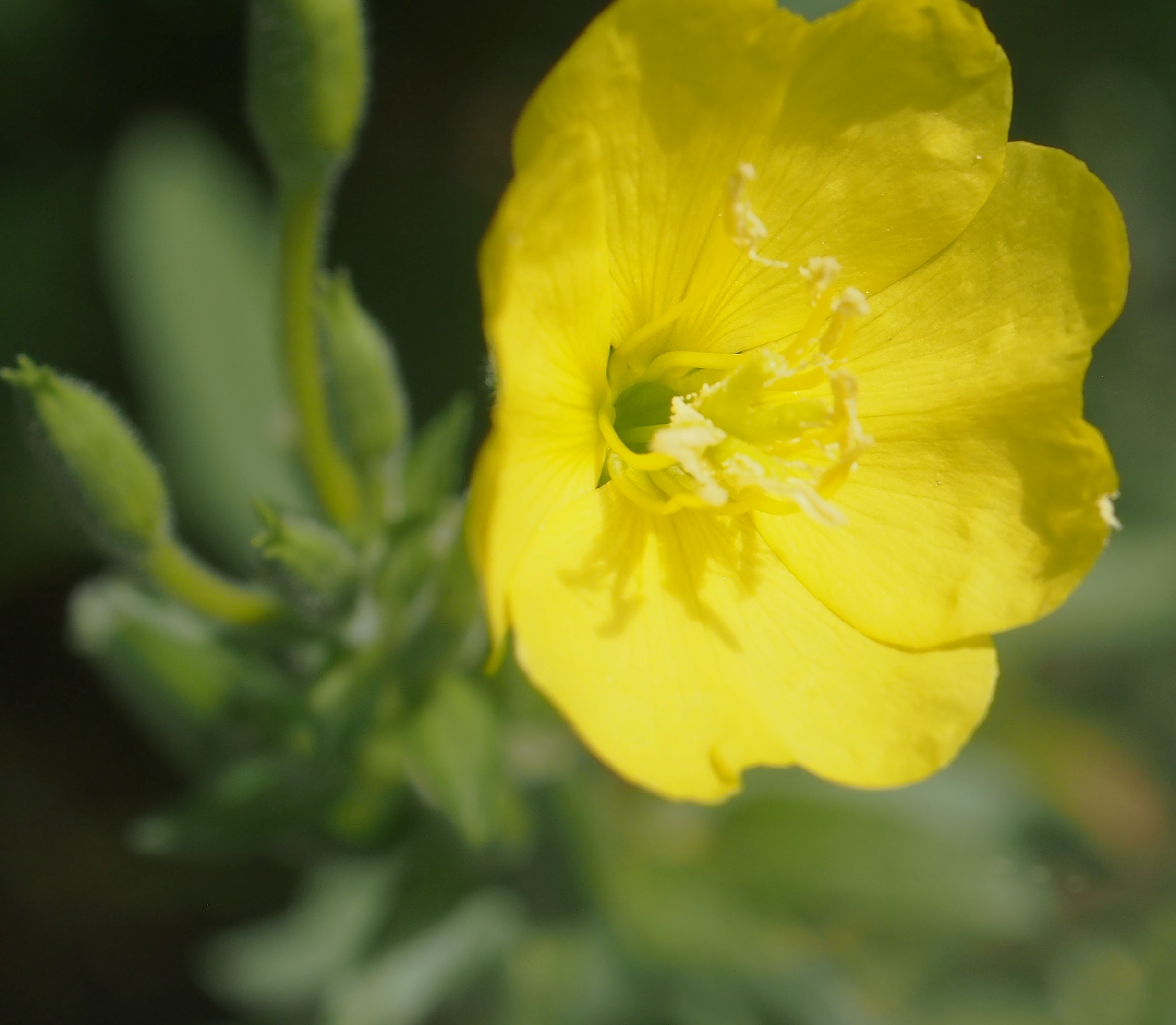
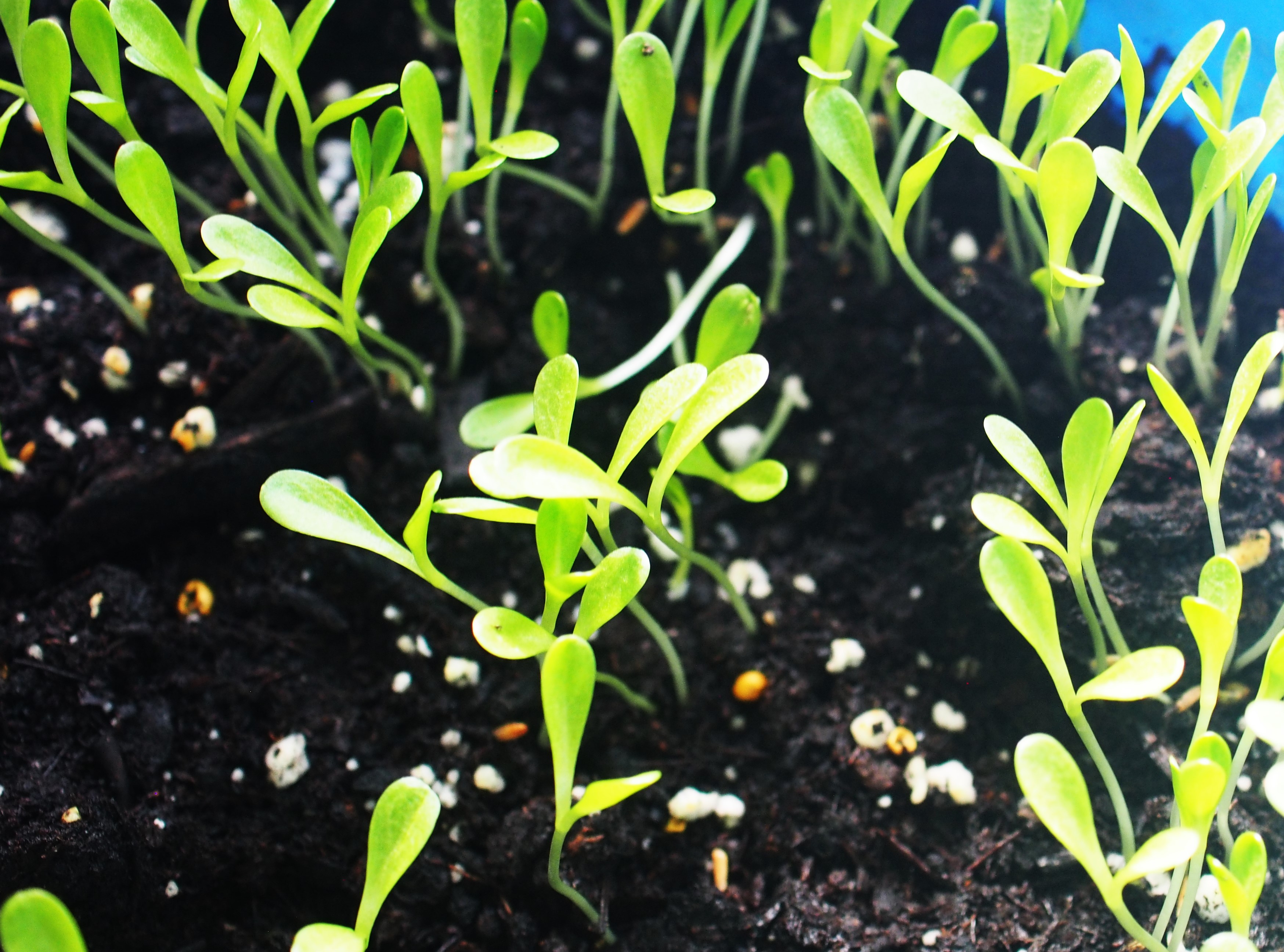
Spider time! Here is a little Colourful Comb-footed Spider. Picture 3 is of a Common House Spider in the same genus (Parasteatoda).
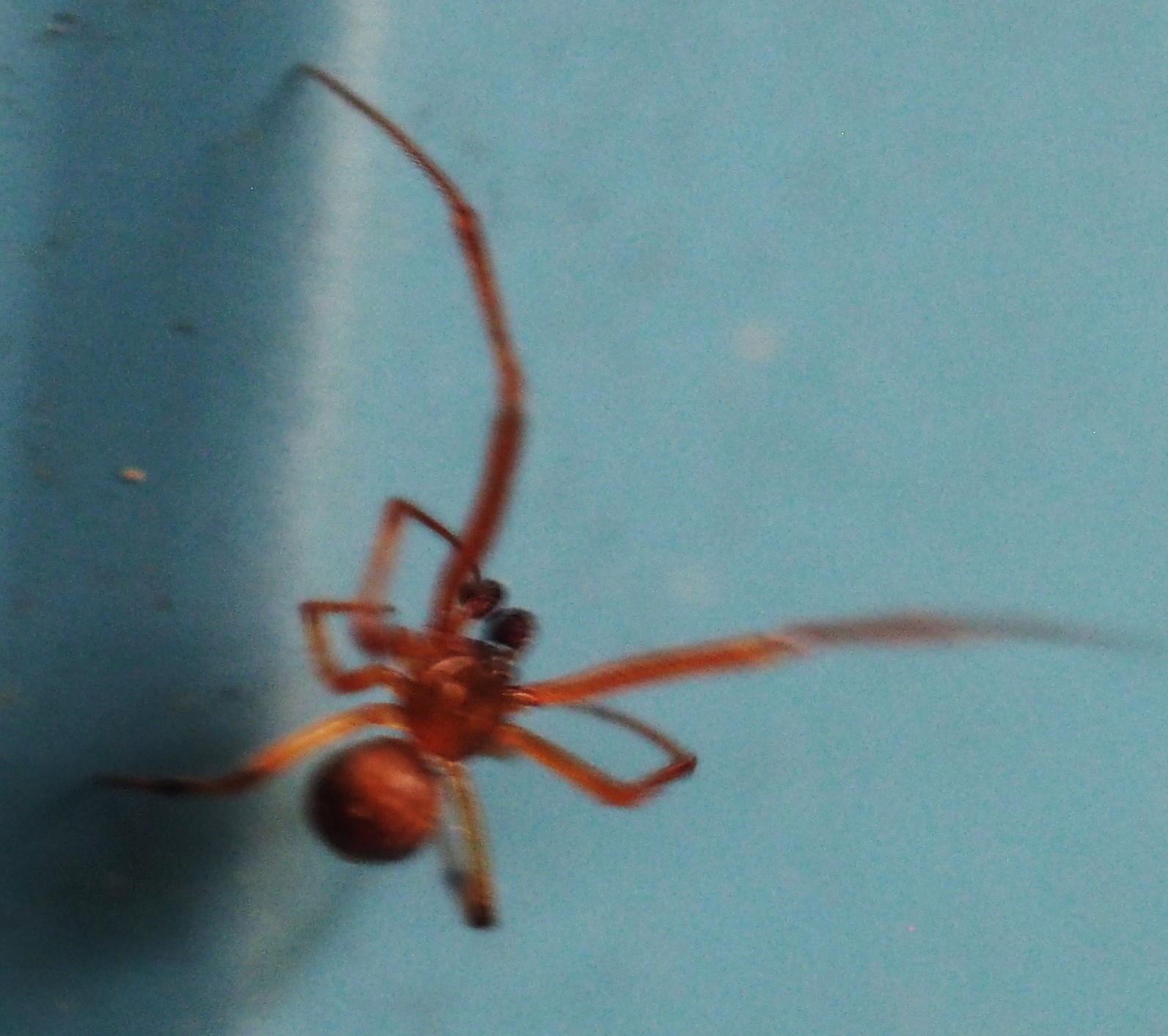
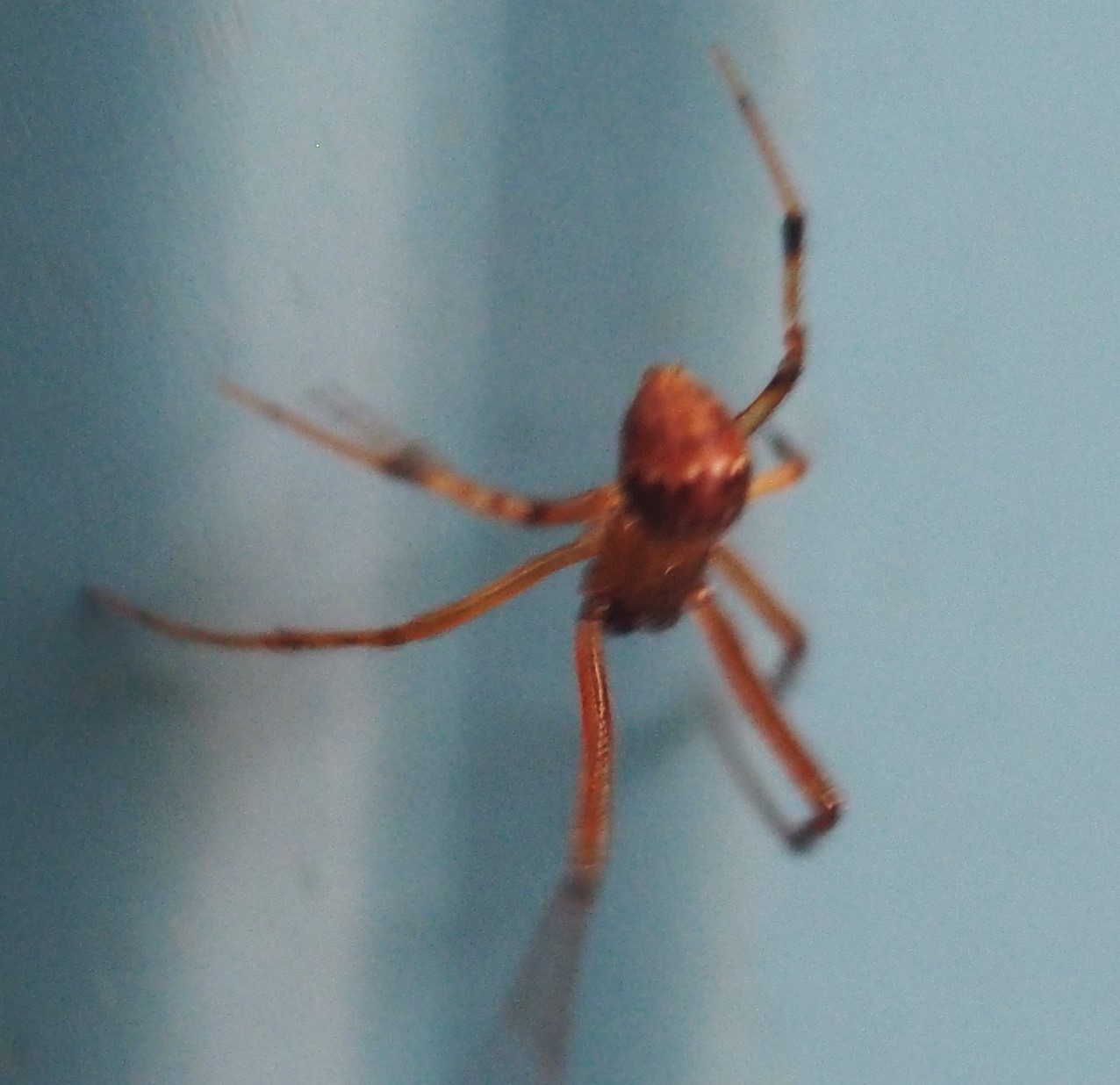
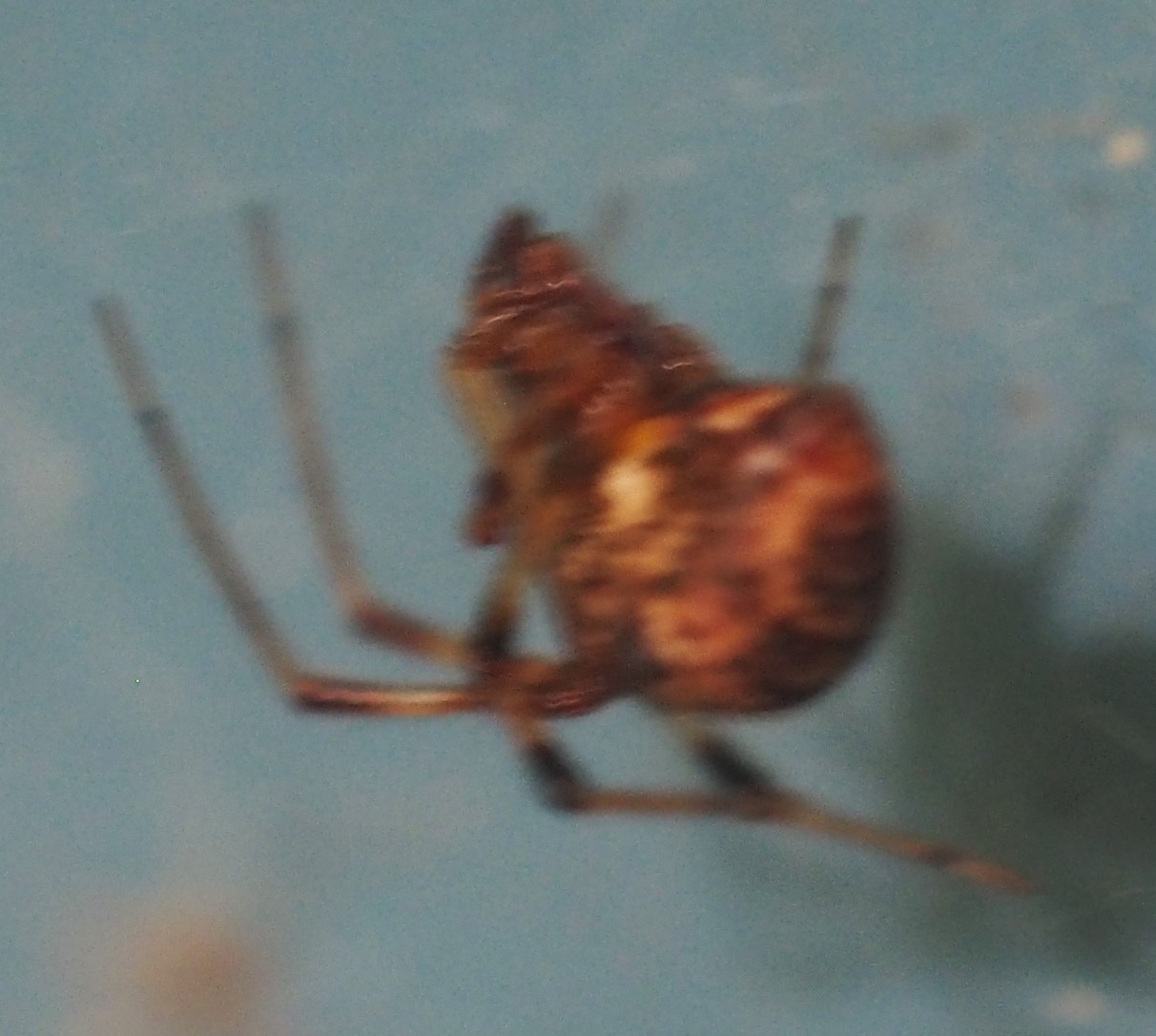
This is the pale Cellar Spider. The little ornament on its "neck" says it is a Long-bodied Cellar Spider. (Picture 3 is from a photo that got identified as "Long-bodied" in November 23, 2022.)
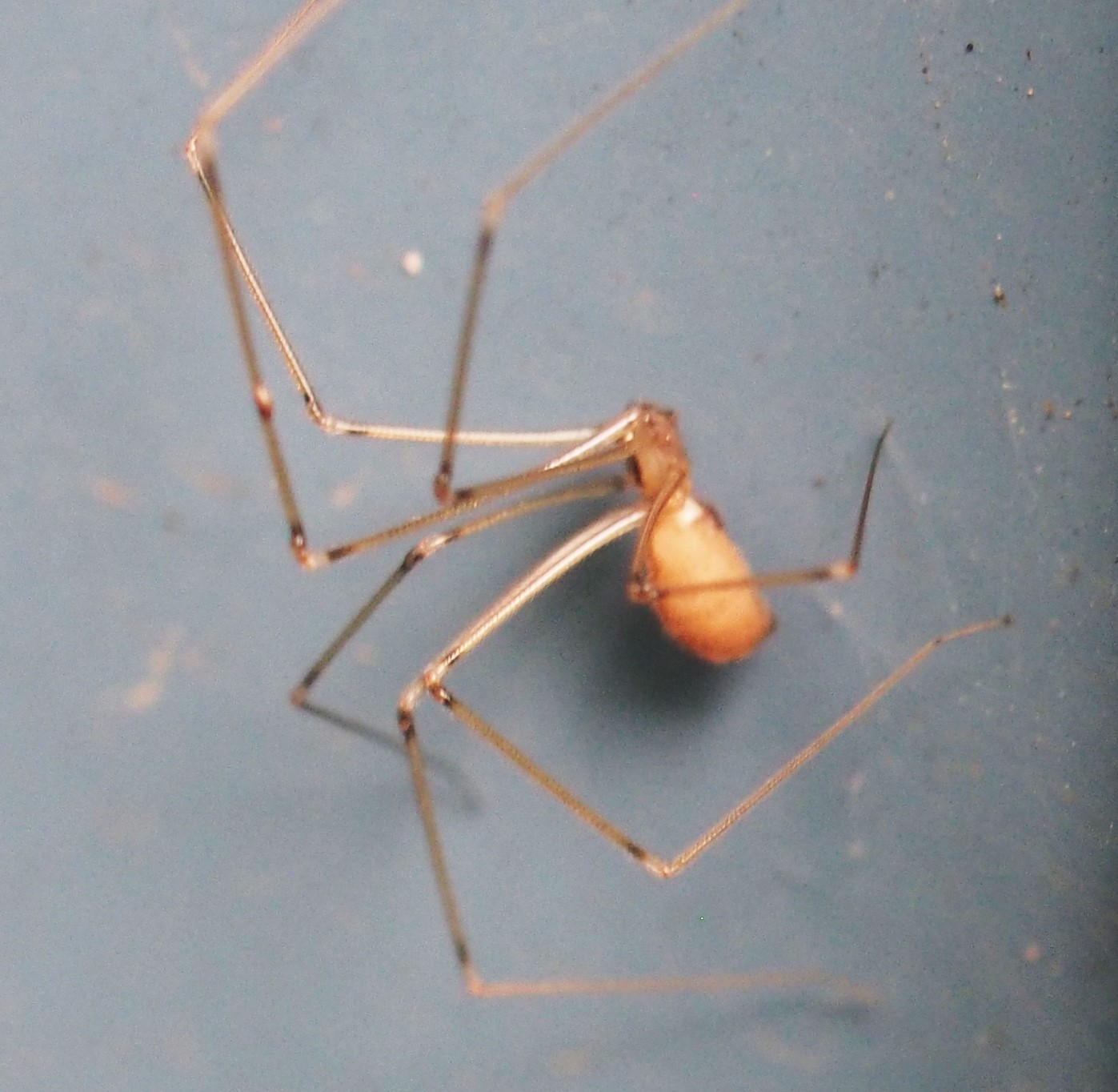
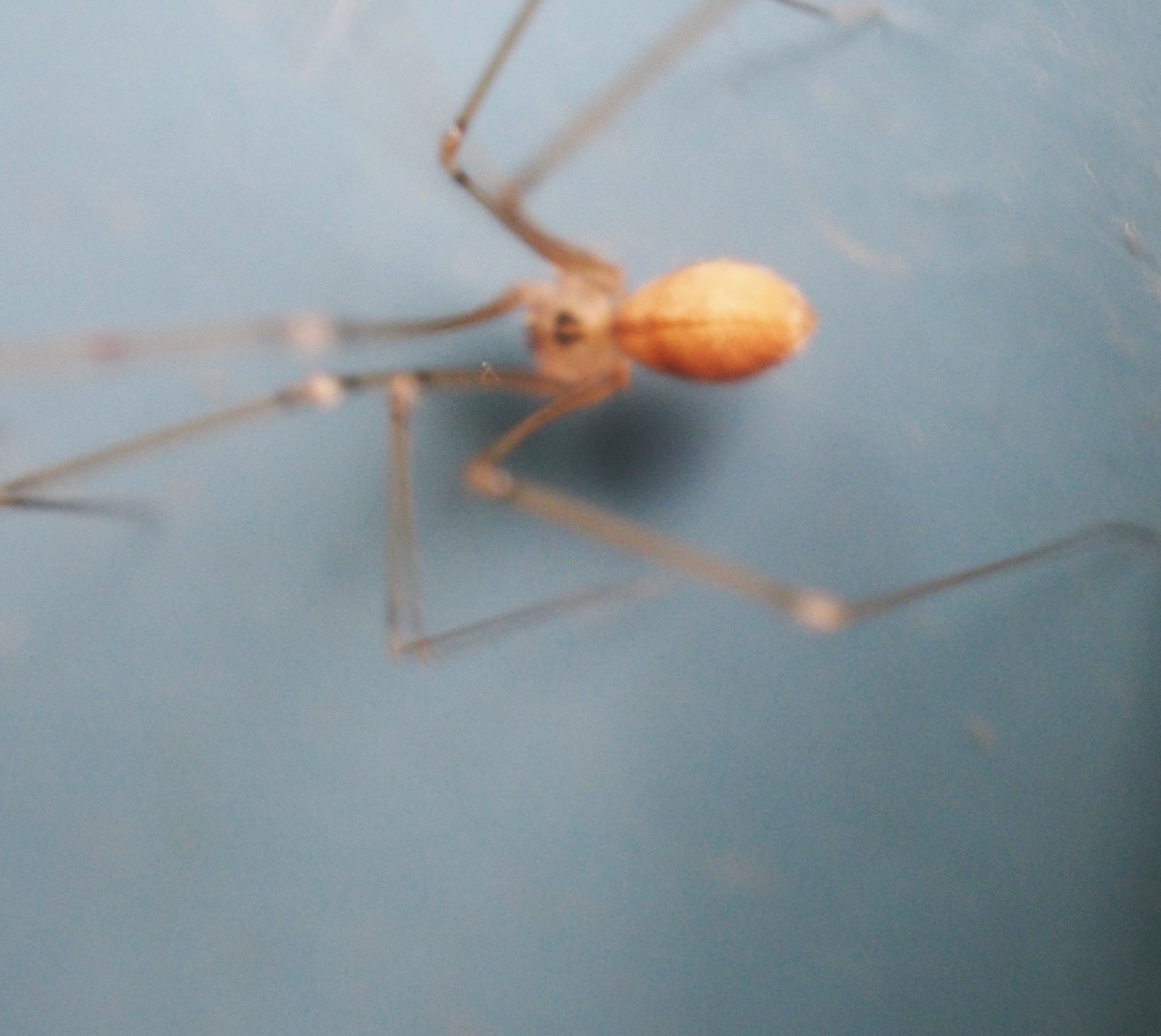
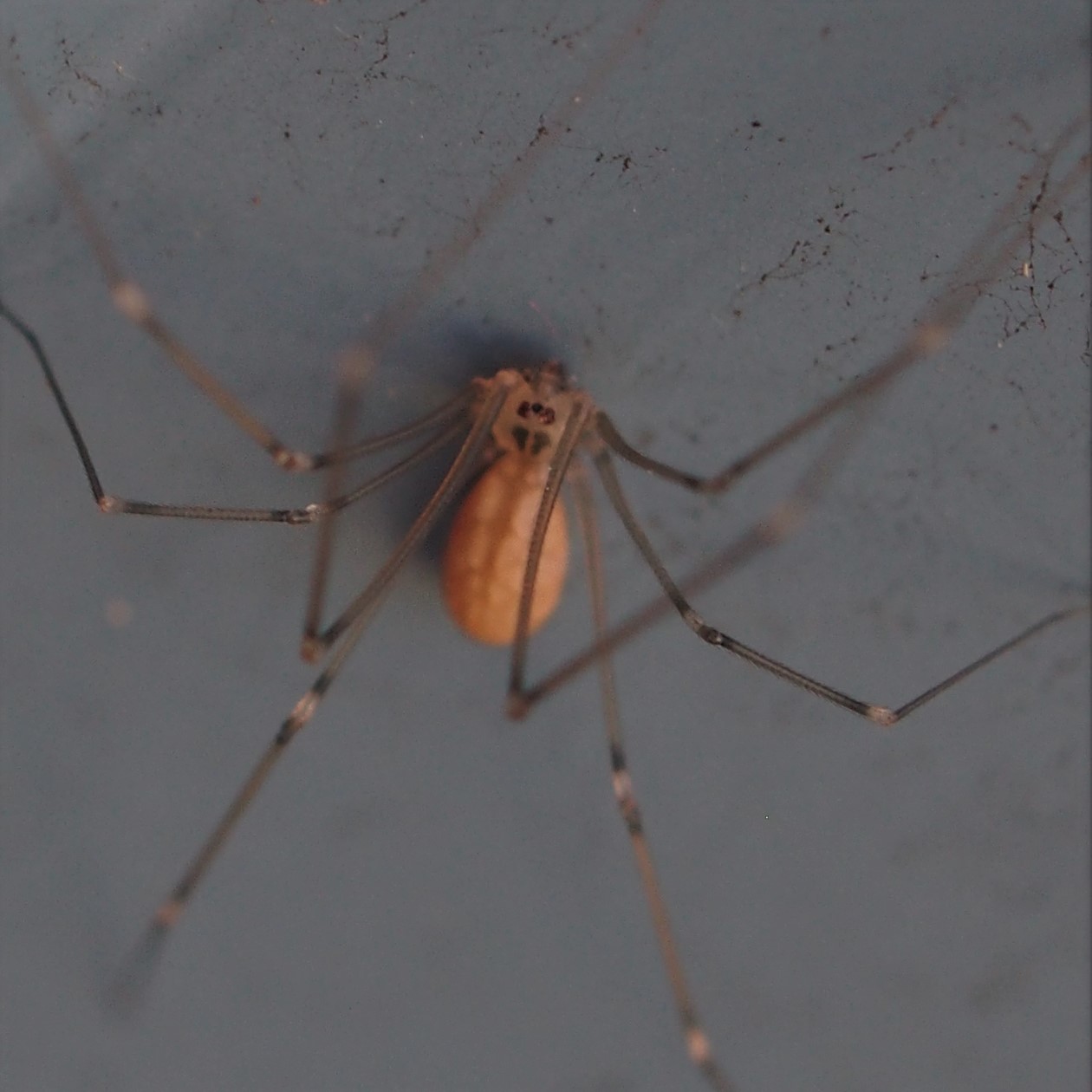
Was that IT for the Spiders? Well, I do have some other creatures up my sleeve. This Mantis (not sure of the genus) was way down in a huge display of Autumn Joy Sedum in my friends' garden. I only saw it because it suddenly moved its great long legs! Next is an unidentified Pillbug.
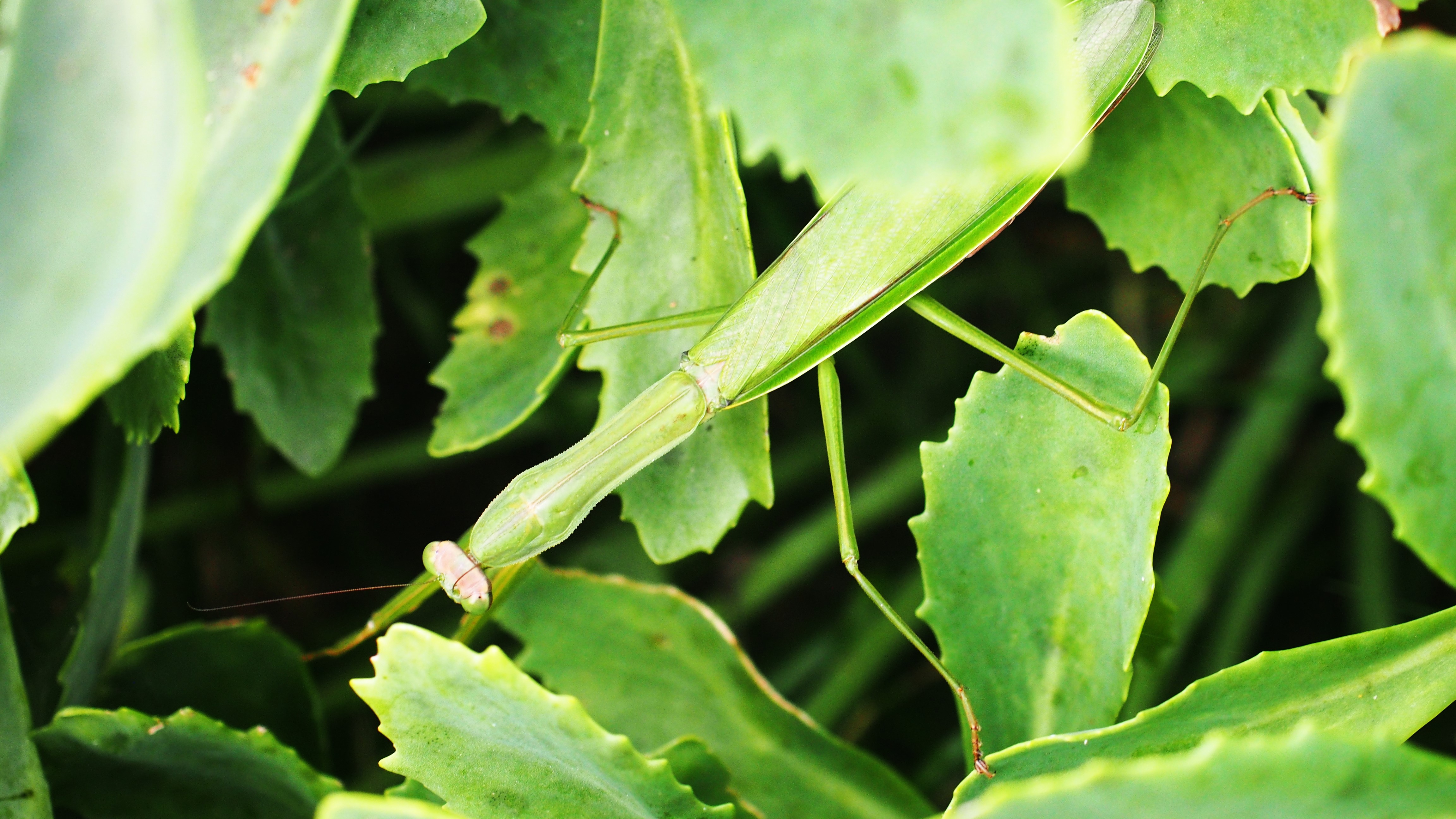
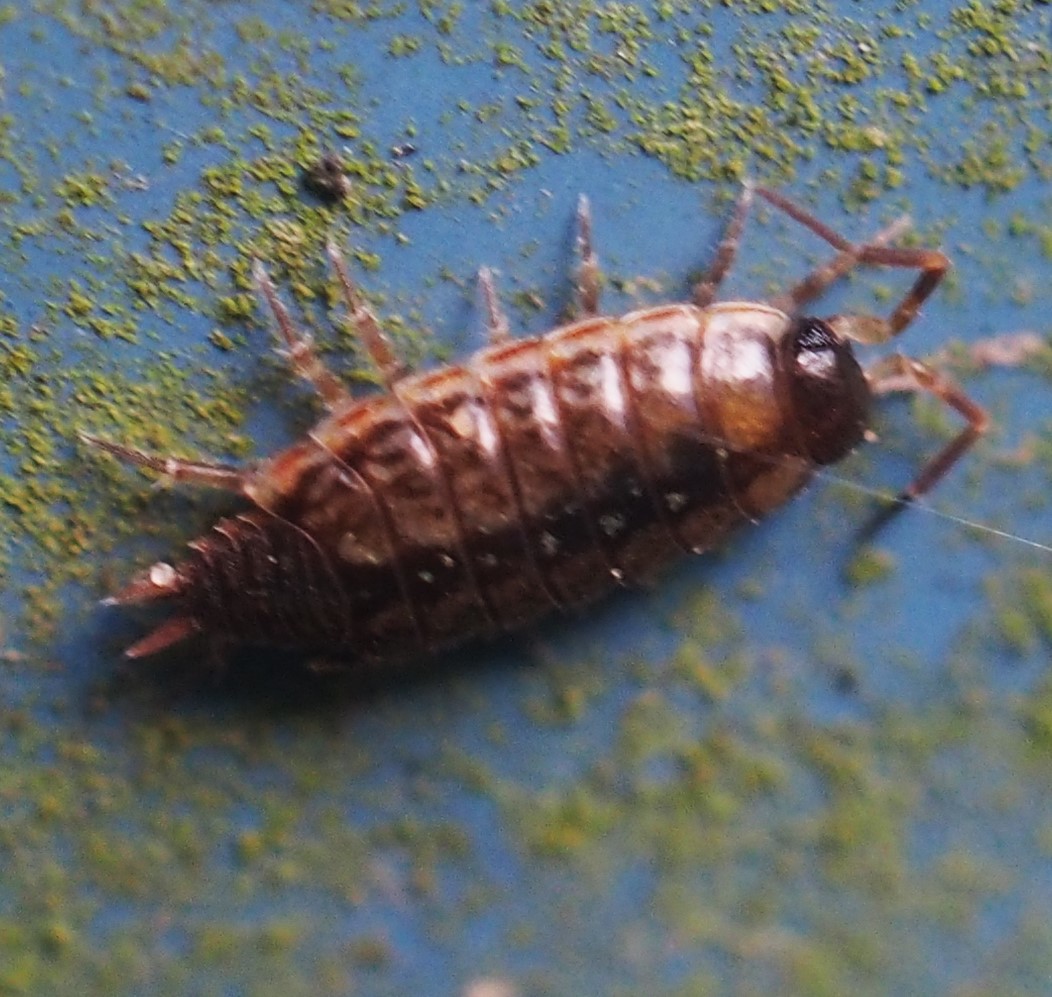
Last but not least, consider the Wasps. I got quite behind in identification of the many Goldenrod-worshiping Wasps. But I'll try to fill you in on the ones I did find ID's for.
First is now called the Bramble Mason Wasp but when I met it years ago it was called simply
Ancistrocerus adiabatus. Second is Cerceris insolita, with no common name that I've ever heard of. Third and fourth show a Grass-carrying Wasp, which flies with its wings held at a 90 degree angle.


.jpg)
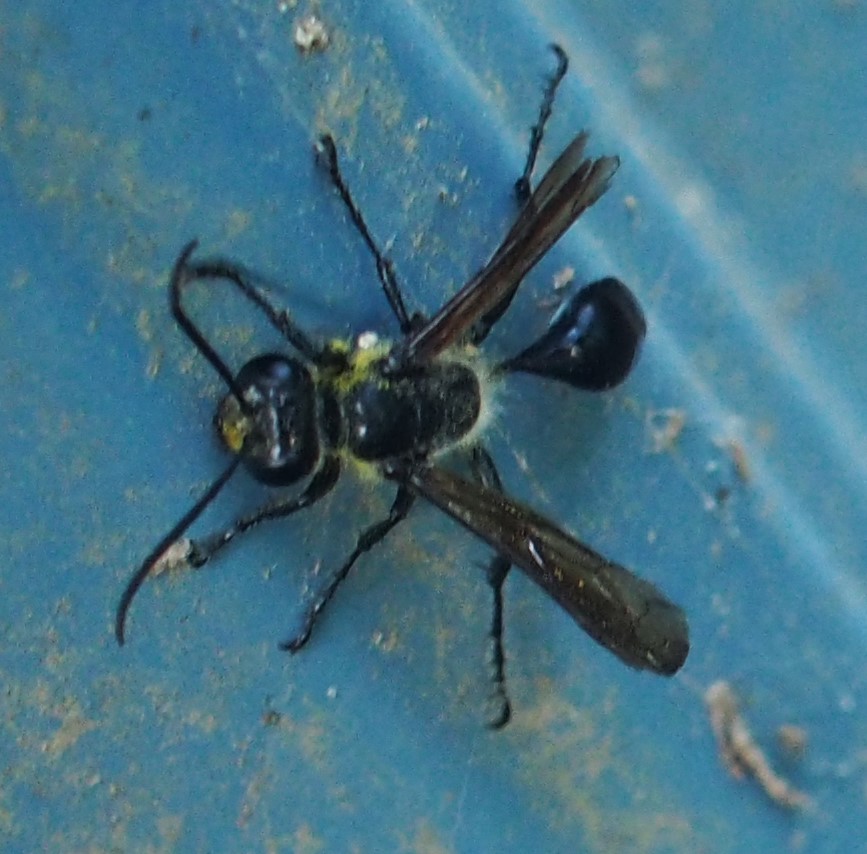
Here are some of the Paper Wasps.
This first Paper Wasp is the female European Paper Wasp. She's the one who visits the Pond to gather water to mix with pulp to make and enlarge her nest. She lives with a number of her sisters, who cooperate on building the nest, and feeding the babies. (The queen lays the eggs.) Second is the male European Paper Wasp. He has a shield-shaped symbol on his face. Third is the male Dark Paper Wasp. If you remember, he has the large red mark on his first abdominal segment. Here's the picture (number 4) of him from last week, showing him in his glory.

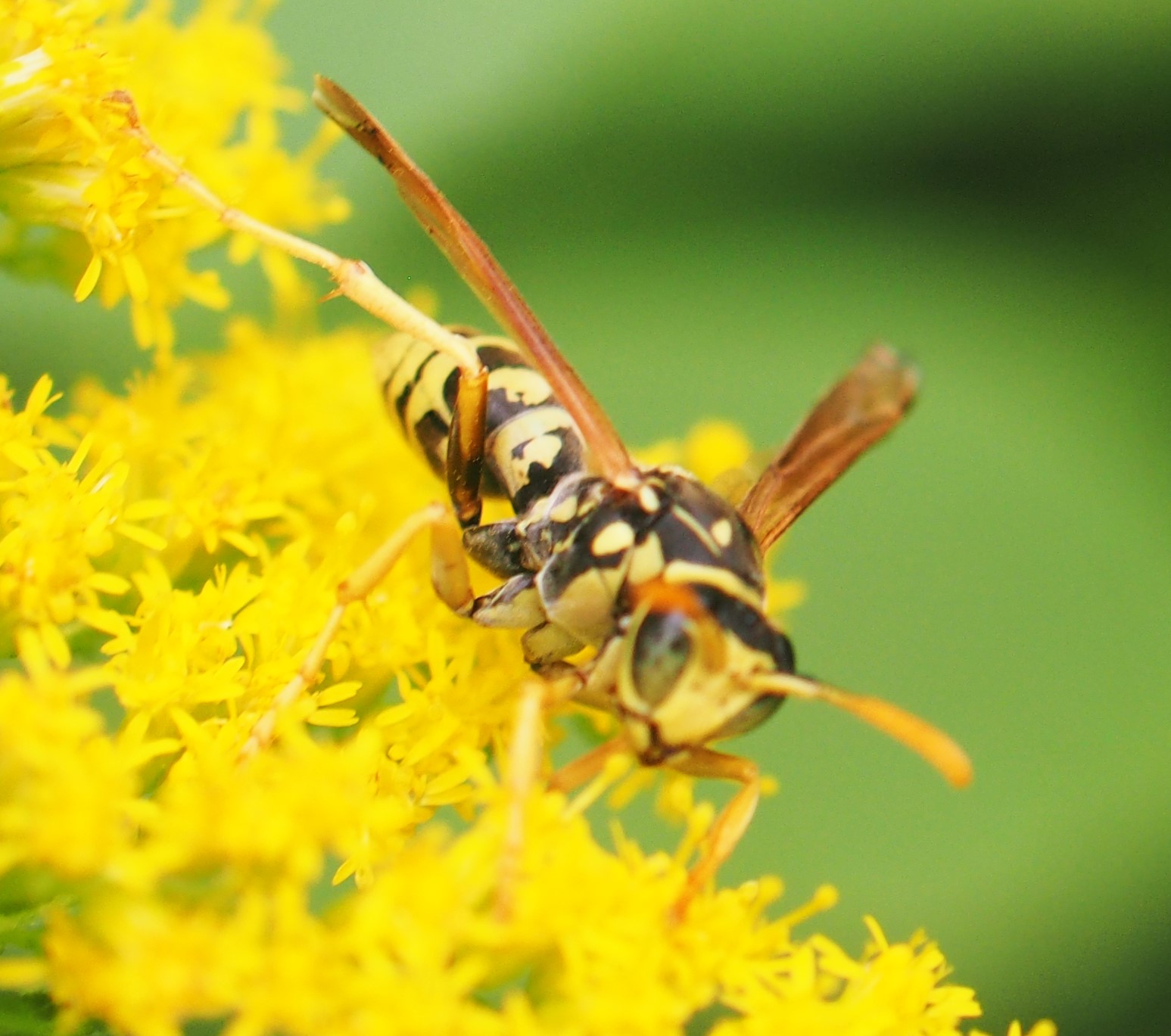
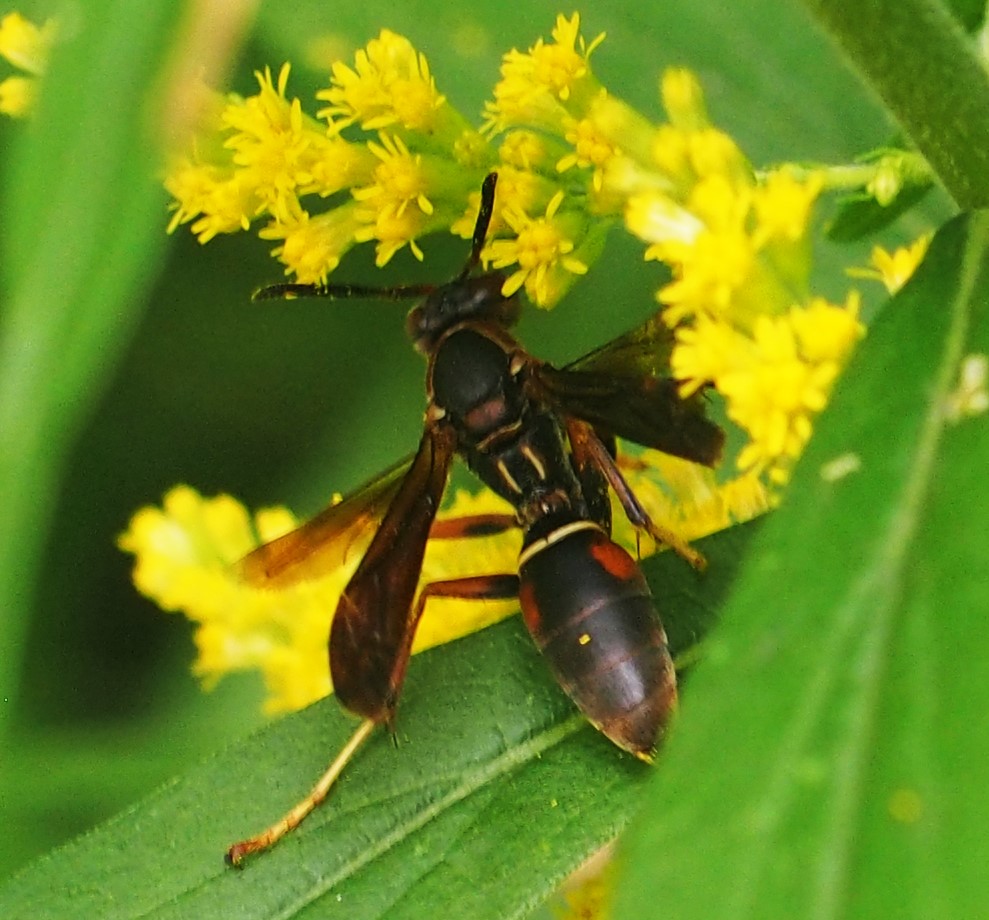
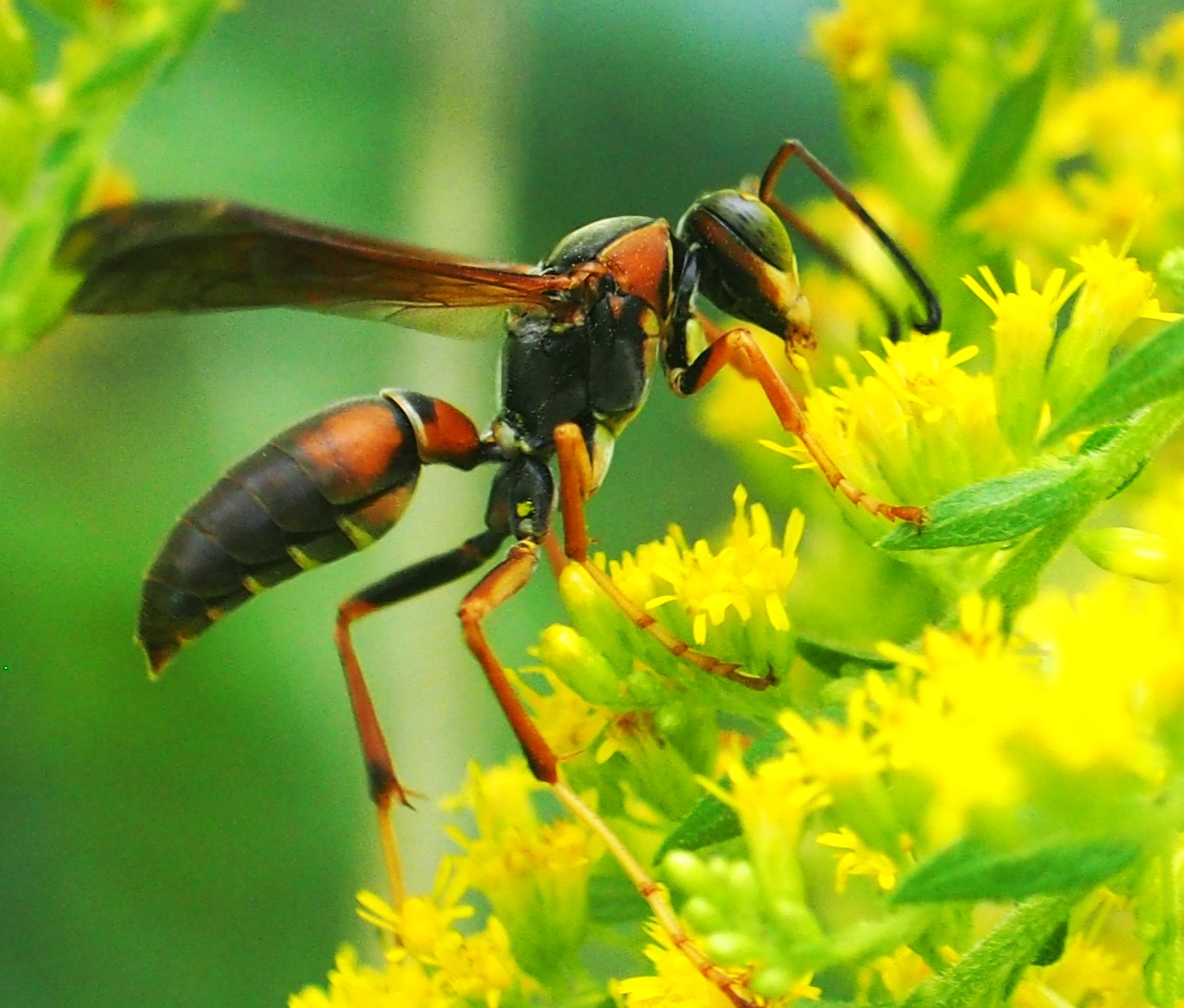
Let's now visit the Fishes and the Frogs. First Frog up is a green-headed female. Second is another female, but she is one of the very tiny Frogs who is about half-size now. Third is a nice wet male.
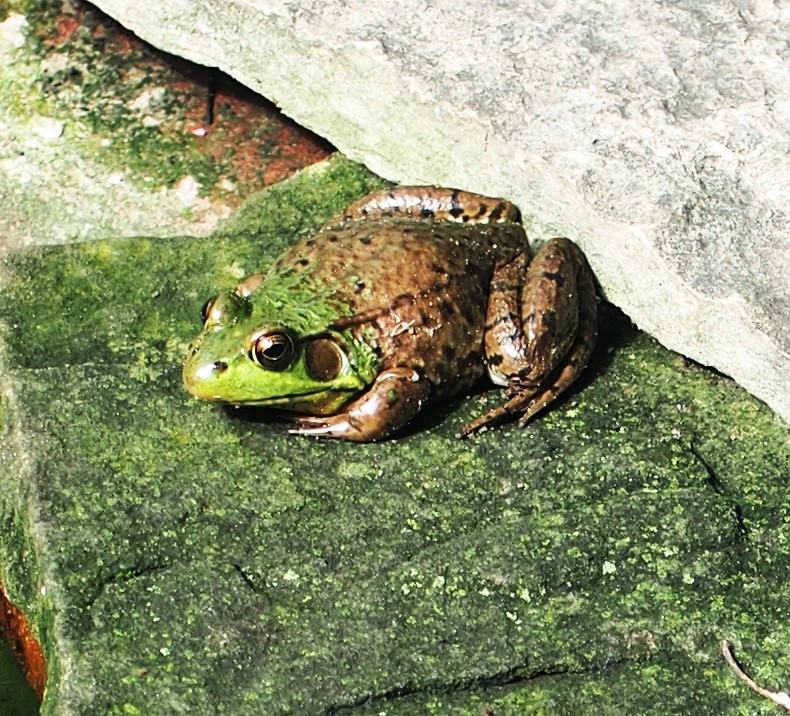
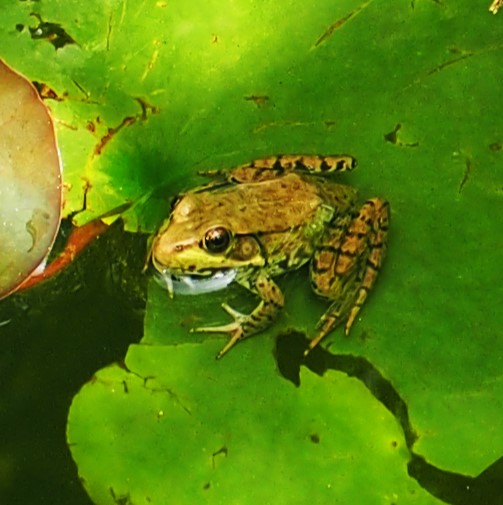
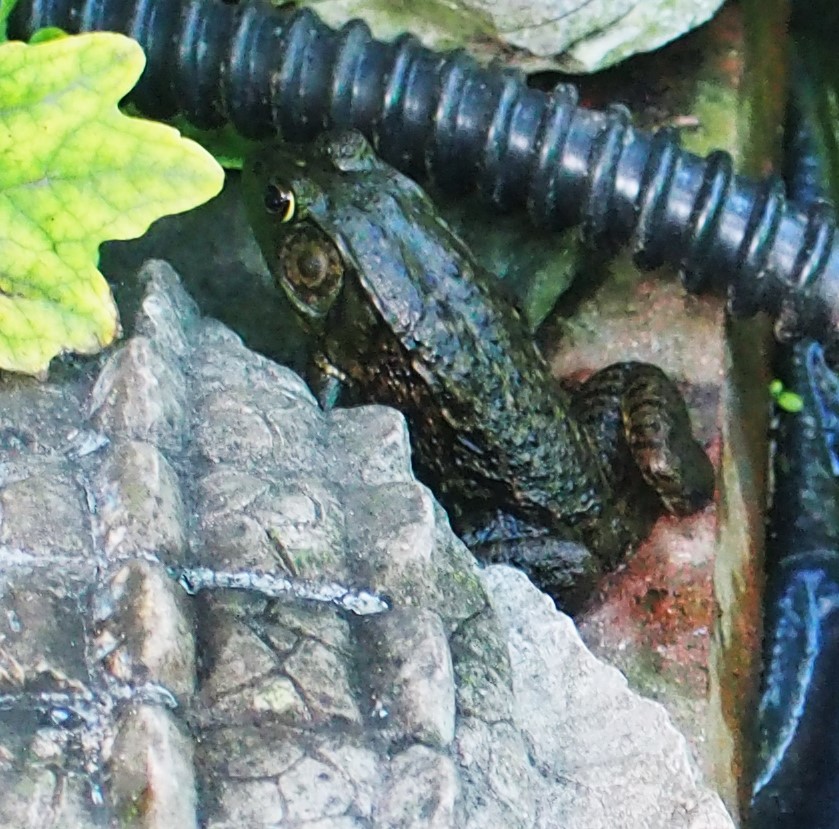
Here's that big male Tonguey. The tongue displacement doesn't seem to have done him any damage. Next shows four Frogs - good luck on finding it - near the middle of the picture. Third is another tiny Frog. I wish I could see its eyes well enough to see if it is a male or a female.
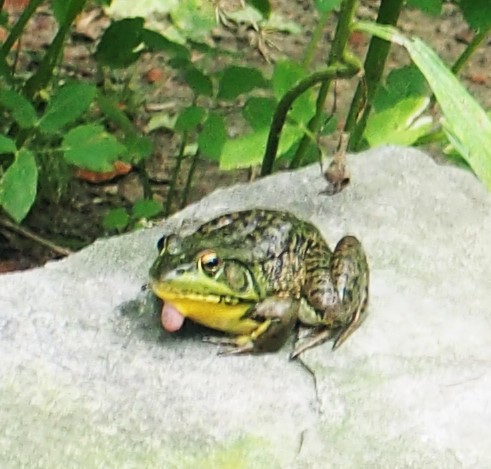

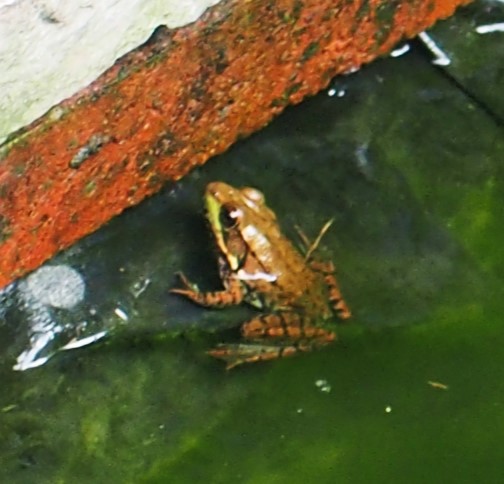
I mentioned that soon the Fishes would be going to get drowsy and stop asking for food. Right now they still come up ravenous when I call them to supper (and breakfast). Click on the third picture to see the whole scene in proper proportions.

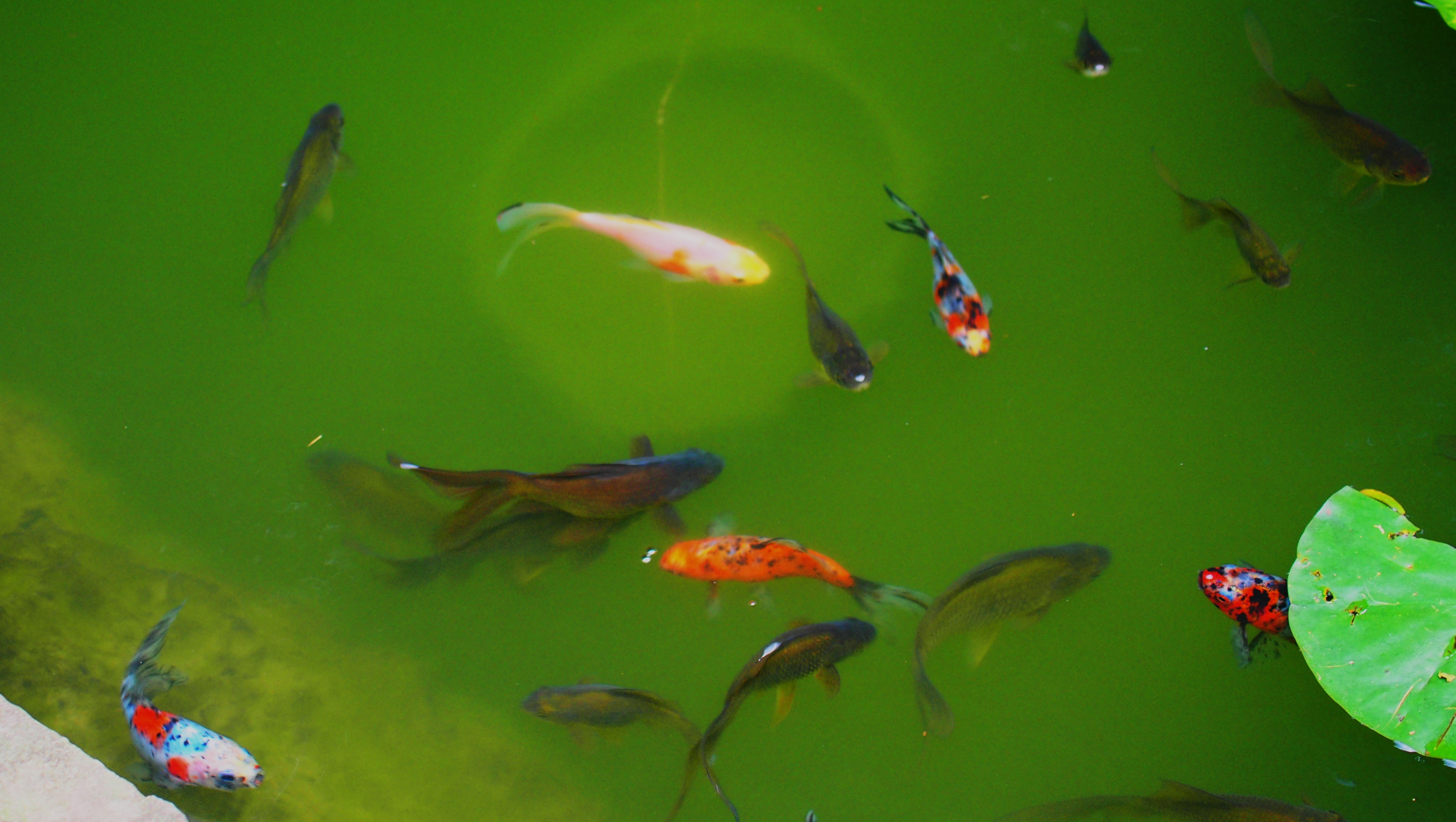

I apologize for the lateness of this blog. Just as I was wrapping it up, my computer suddenly restarted to deal with its updates and the path to Albion's server shut down. Thanks to Justin Vaughn for getting it restarted. This whole blog is devoted to our beautiful planet. What a pleasure it is to be able to see these minuscule scenes just outside my back door.
Love, Martha
Back to September 10 2023
Forward to September 24, 2023
Back to main menu
copyright Martha O'Kennon 2023

















































































.jpg)













